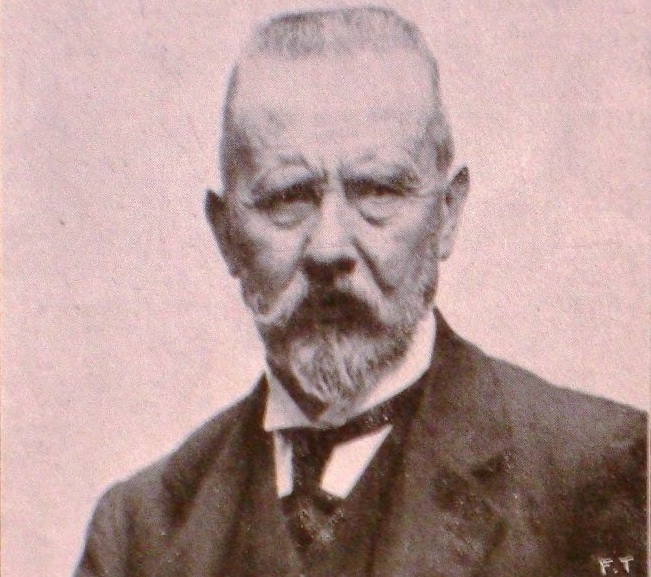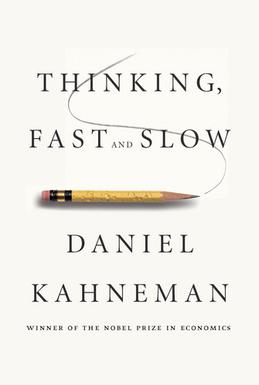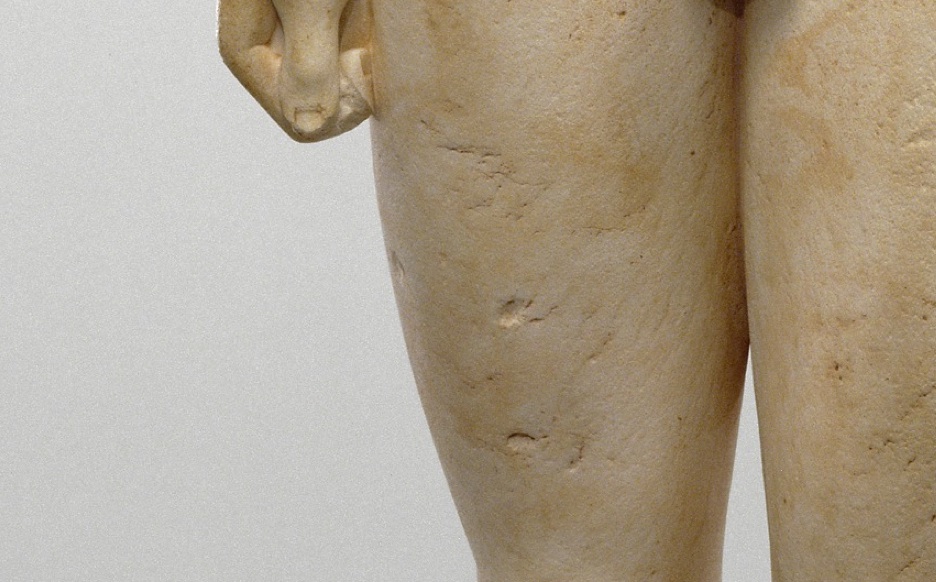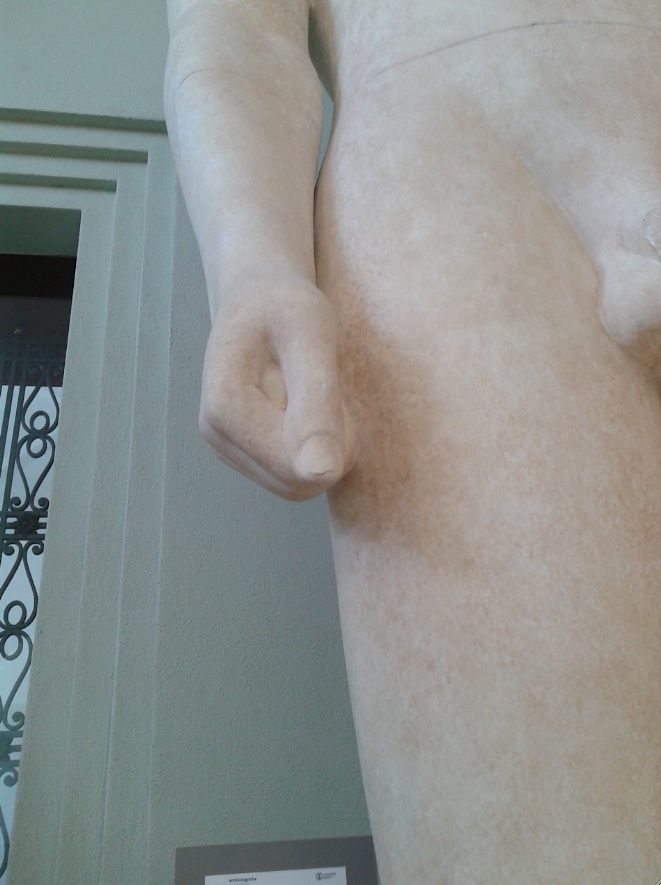M
I
C
R
O
S
T
O
R
Y
O
F
A
R
T
........................................................

NOW COMPLETED:

........................................................
MICROSTORY OF ART
ONLINE JOURNAL FOR ART, CONNOISSEURSHIP
AND CULTURAL JOURNALISM
........................................................
INDEX | PINBOARD | MICROSTORIES |
FEATURES | SPECIAL EDITIONS |
HISTORY AND THEORY OF ATTRIBUTION |
ETHNOGRAPHY OF CONNOISSEURSHIP |
SEARCH

........................................................



 >MICROSTORIES
>MICROSTORIES
- Richard Serra
- Martin Scorsese
- Claude Simon
- Sunshine
- Werner Herzog
- The Creation
- Marcel Duchamp
- Nino Rota
- Wölfflin and Woolf
- Hansjörg Schneider
- Kraftort Arkadien
- Visual Biography
- Schlaraffenleben
- Die Geisteswissenschaften
- The Voyeur
- Buzzword Sustainability
- Paul Verlaine
- Tao Yuanming
- New Beginning
- Seneca
- Still Lifes
- Charles Baudelaire
- Frédéric Chopin
- The Art History of Sustainability
- Wang Wei
- Solarpunk
- Historians of Light
- Lepanto
- Renaturalization
- Plates
- Snow in Provence
- Learning to See
- Picasso Dictionaries
- Peach Blossom Spring
- Picasso Tourism
- Tipping Points
- Sviatoslav Richter
- Weather Reports
- Treasure Hunt
- Another Snowscape in Picasso
- Picasso in 2023
- Dragon Veins
- The Gloomy Day
- The Art of the Pentimento
- Reforestation
- The Status of Painting
- Emergency Supply
- Punctuality
- Watching Traffic
- Zhong Kui
- How Painting Survived the 1990s
- Confirmation Bias
- Sustainability and Luxury
- Garage Bands
- Picasso and Artificial Intelligence
- Eyes of Tomorrow
- Picasso in 2023 2
- Gluing Oneself to Something
- Suburbia
- Bamboo
- Sustainability and Carpe Diem 1
- Interviews with Bruegel
- Sustainability and Carpe Diem 2
- Coffee & Sugar
- Bamboo 2
- Picasso in 2023 3
- Sustainability and Carpe Diem 3
- Cherry Orchard
- Old Magazines
- Chance
- Nick Drake
- Harlequin
- The Smartphone & the Art Book
- Atlas Syndrome
- The Kitchen
- Atlas Syndrome 2
- Consideration
- Tori Amos
- School
- Orchard Auctioning Day
- The Hundred Years’ War
- Sócrates
- Chameleon
- Nefertiti Bust
- Picasso as a Computer
- Sunflowers
- Philemon & Baucis
- Ode to the Radio
- Childhood
- Wimmelbild
- Restitution
- Nick Drake 2
- Wishful Thinking
- Sundays
- The Independent Scholar
- September
- The Fisherman by Pirosmani
- Microadventure
- Sociology
- Salvator Mundi
- Chillon
- Appassionata
- Amber
- Homer
- Berlin
- Planet Walk
- Improvisation
- Seeing Picasso
- These Nice Kids
- Robber
- The One
- The Sea Turtle
- Zoo
- Through the Hush
- Wunderkammer
- I Do Not Seek, I Find
- Shopping Mall
- Food Hamper
- The Secretary
- This Gate
- Nor Rainy Day
- House on a Hill
- Beautiful Island
- Second-hand Bookstore
- Flat
- Slap in the Face
- Serra, Wenkenpark
- Apologies
- The Bells
- Nordmann Fir
- Picasso Wanting To Be Poor
- Picasso, Pirosmani
- A Brief History of Sculpture
- 24 Sunsets
- Rusty Phoenix
- Glove
- Wintry Stanza
- A Song
- Like A Beatle
- Catching An Orange
- Solar Bees
- Permaculture

 >FEATURES
>FEATURES
- Van Gogh On Connoisseurship
- Two Museum’s Men
- Ende Pintrix and the City in Flames
- Titian, Leonardo and the Blue Hour
- The Man with the Golden Helmet: a documentation
- Un Jury d’admission à l’expertise
- Learning to See in Hitler’s Munich
- Leonardo da Vinci and Switzerland
- The Blue Hour Continued
- The Blue Hour in Louis Malle
- Kafka in the Blue Hour
- Blue Matisse
- Blue Hours of Hamburg and LA
- A Brief History of the Cranberry
- The Other Liberale in the House
- The Blue Hour in Raphael
- Who Did Invent the Blue Hour?
- Monet on Sustainability
- Velázquez and Sustainability
- The Blue Hour in Guillaume Apollinaire
- Van Gogh on Sustainability
- The Blue Hour in Marcel Proust
- Picasso and Sustainability
- The Contemporary Blue Hour
- The Blue Hour in 1492
- The Blue Hour in Hopper and Rothko
- Hopper and Sustainability
- The Blue Hour in Ecotopia
- The Hour Blue in Joan Mitchell
- Explaining the Twilight
- The Twilight of Thaw
- The Blue Hour in Pierre Bonnard
- Explaining the Twilight 2
- Picasso on Stalin
- Rubens on Sustainability
- The Salvator Mundi in Bruegel and Rubens
- The Blue Hour in Leonardo da Vinci and Poussin
- The Blue Hour in Rimbaud
- Faking the Dawn
- Frost and Thaw in Ilya Ehrenburg
- Picasso, Stalin, Beria
- Picasso, Solzhenitsyn and the Gulag
- Shostakovich on Picasso
- Hélène Parmelin in 1956
- Historians of Picasso Blue
- Picasso Travelling to Moscow 1
- The Blue Hour in Caravaggio
- Picasso Travelling to Moscow 2
- Picasso, the Knife Game and the Unsettling in Art
- Some Notes on Leonardo da Vinci and Slavery
- Picasso Moving to the Swiss Goldcoast
- The Blue Hour in Camus
- The Blue Hour in Symbolism and Surrealism
- Caspar David Friedrich in His Element
- Exhibiting the Northern Light
- Caspar David Friedrich in His Element 2
- Robert Schumann and the History of the Nocturne
- The Blue Hour in Robert Schumann
- Caspar David Friedrich and Sustainability
- The Twilight of Thaw 2
- Multicultural Twilight
- The Blue Hour in Anton Chekhov
- The Blue Hour in Medieval Art
- Twilight Photography
- The Blue Hour in Bob Dylan
- Iconography of Optimism

 >SPECIAL EDITIONS
>SPECIAL EDITIONS
- Visions of Cosmopolis
- Mona Lisa Landscapes
- Turner and Ruskin at Rheinfelden
- Painters On TV & On TV
- Spazzacamini in Art
- A Last Glance at Le Jardin de Daubigny
- The Experimental Cicerone
- A Dictionary of Imaginary Art Historical Works
- Iconography of Blogging
- Begegnung auf dem Münsterplatz
- Cecom
- Das Projekt Visual Apprenticeship
- Those Who See More
- A Fox on Seeing with the Heart
- Sammlung Werner Weisbach
- Daubigny Revisited
- Some Salvator Mundi Microstories
- Some Salvator Mundi Afterthougths
- Some Salvator Mundi Variations
- Some Salvator Mundi Revisions
- A Salvator Mundi Questionnaire
- A Salvator Mundi Puzzle
- Unknown Melzi
- Francis I and the Crown of Charlemagne
- From Amboise to Fontainebleau
- Drones Above Chambord
- Looking Back At Conques
- Flaubert At Fontainebleau
- Images of Imperial Ideology
- The Chronicles of Santa Maria delle Grazie
- Seeing Right Through Someone
- Melzi the Secretary
- Eying Glass
- A Foil to the Mona Lisa
- A Renaissance of the Cartoon
- Sketching a Family Tree
- Venetian Variations
- A Brief History of Digital Restoring
- A Consortium of Painters
- Leonardeschi and Landscape
- A Christ in Profile
- Learning to See in Spanish Milan
- A History of Gestures
- Leonardo and Josquin
- A Renaissance of the Hybrid
- Suida and Heydenreich
- The Watershed
- Three Veils
- From Beginning to End
- Connoisseurship of AI
- Twilight and Enlightenment
- The Blue Hour in Chinese Painting
- Dusk and Dawn at La Californie
- Iconography of Sustainability
- The Blue Hour in Goethe and Stendhal
- The Sky in Verlaine
- The Blue Hour in Paul Klee
- Iconography of Sustainability 2
- The Blue Hour in Charles Baudelaire
- From Bruegel to Solarpunk
- Some Salvator Mundi Documentaries
- Some More Salvator Mundi Monkey Business
- The Windsor Sleeve
- Brigitte Bardot’s Encounter with Picasso
- Art Historians and Historians
- A Salvator Mundi Chronicle
- The Salvator Mundi and the French Revolution
- The Fontainebleau Group
- The Encounter of Harry Truman with Pablo Picasso
- The Fontainebleau Group Continued
- The Windsor Sleeve Continued
- The Salvator Mundi in Early Netherlandish Painting 1
- Some Salvator Mundi Resources
- A New Salvator Mundi Questionnaire
- The Woman in Picasso
- The Yarborough Group
- Melzi, Figino and the Mona Lisa
- The Yarborough Group Continued
- A Salvator Mundi Global History
- The Salvator Mundi in Medieval Art
- The Salvator Mundi in Medieval Art 2
- The Salvator Mundi in Early Netherlandish Painting 2


 >HISTORY AND THEORY OF ATTRIBUTION
>HISTORY AND THEORY OF ATTRIBUTION
- The Mysterious »Donna Laura Minghetti-Leonardo«
- Assorted Demons of Connoisseurship
- Panofsky Meets Morelli
- Discovering the Eye of Sherlock Holmes
- Handling the Left-handed Hatchings Argument
- Visual History of Connoisseurship
- Alexander Perrig
- Connoisseurship in 2666
- What Postmodernity Has Done to Connoisseurship
- Dividing Four Fab Hands
- A Leonardesque Ambassador
- Test Cases in Connoisseurship
- A Raphael Expertise
- How to Tell Titian from Giorgione
- Louise Richter
- The Unique Property in the History of Connoisseurship
- An Expertise by Berenson
- The Book of Expertises
- An Album of Expertises
- An Expertise by Friedländer
- A Salvator Mundi Provenance
- How to Tell Leonardo from Luini
- An Expertise by Crowe and Cavalcaselle
- An Expertise by Bayersdorfer
- An Expertise by Hermann Voss
- An Expertise by Hofstede de Groot
- Leonardeschi Gold Rush
- An Unknown »Vermeer«
- An Expertise by Roberto Longhi
- An Expertise by Federico Zeri
- A Salvator Mundi Geography
- A Salvator Mundi Atlas
- The Bias of Superficiality
- 32 Ways of Looking at a Puzzle
- James Cahill versus Zhang Daqian
- Five Fallacies in Attribution
- On Why Art History Cannot Be Outsourced to Art Dealers
- On Why Artificial Intelligence Has No Place in Connoisseurship
- Salvator Mundi Scholarship in 2016
- Leonardo da Vinci at the Courts
- The Story of the Lost Axe
- The Last Bruegel
- A Titian Questionnaire
- On Where and Why the Salvator Mundi Authentication Did Fail
- The Problem of Deattribution

 >ETHNOGRAPHY OF CONNOISSEURSHIP
>ETHNOGRAPHY OF CONNOISSEURSHIP
MICROSTORY OF ART
ONLINE JOURNAL FOR ART, CONNOISSEURSHIP
AND CULTURAL JOURNALISM
........................................................

***
ARCHIVE AND FURTHER PROJECTS

1) PRINT


***
2) E-PRODUCTIONS


........................................................

........................................................

........................................................
FORTHCOMING:


***
3) VARIA

........................................................

........................................................

........................................................

........................................................

........................................................
***
THE GIOVANNI MORELLI MONOGRAPH

- The Giovanni Morelli Monograph
........................................................
MICROSTORY OF ART
ONLINE JOURNAL FOR ART, CONNOISSEURSHIP AND CULTURAL JOURNALISM
HOME
The Giovanni Morelli Study
THE GIOVANNI MORELLI STUDY Cabinet II: Questions and Answers 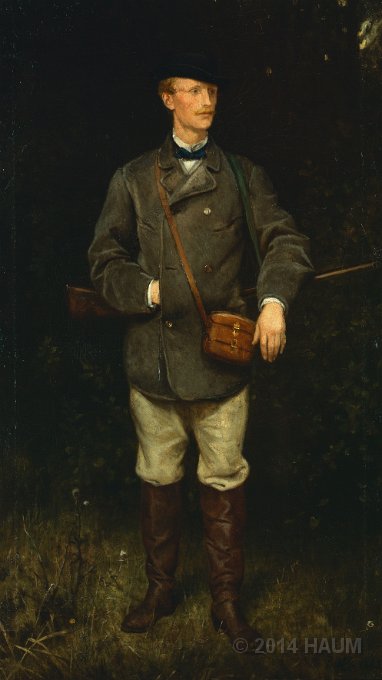 Rudolf Friedrich August Henneberg, Wilhelm Bode als Jäger (1868) (source: haum.info/dib) |
Some of Morelli’s followers and friends found that his teaching was not exactly a systematic teaching and they were right. Neither was Morelli inclined to equip every opponent with his skills, nor was he inclined to expose himself more than necessary, and he did expose himself, but more in style of giving examples, and not in being systematic in a rigid sense (in other words: he did not expose himself systematically, as his own intellectual approach, as scientific connoisseurship, actually does demand it).
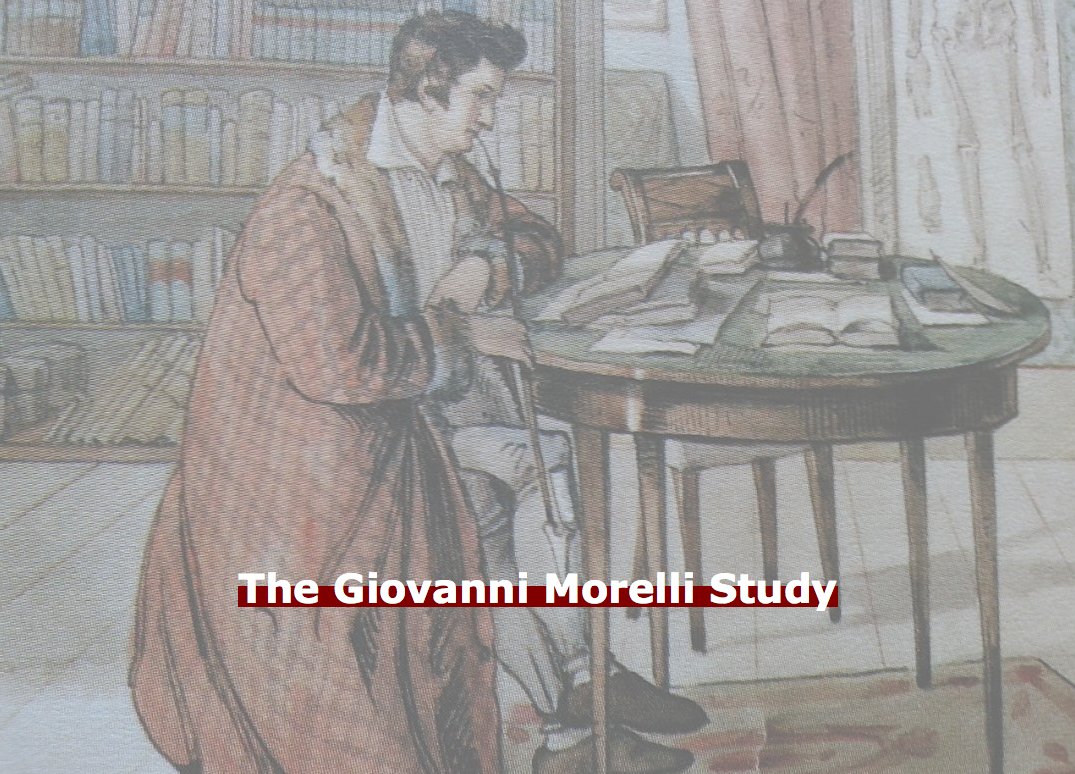
Questions and Answers
What we are attempting to do here is to stick to a compromise between rigid system-building and mere unsystematically improvising essay-style. We try to assemble, in a coherent way, questions as to Giovanni Morelli’s connoisseurial practices. And we try to answer them as concise as possible, which, in some cases, means that we have to speak concisely about Morelli not being concise, nor systematic, nor decided.
And this cabinet, the core of the second part of the Giovanni Morelli Monograph, is meant to develop as a platform of its own kind. Assembling not only the most important basic questions, but also materials that, ideally, might inspire further study of style criticism and of connoisseurial practices (and hopefully also some innovations). Which we consider to be worth pursuing, not only because it is about attributional studies, but because it is about visual apprenticeship, visual education, and, in brief, about looking and interpreting as such, its problems, ambiguities, its sensual side, but also its intellectual side, in a word, about a possible opening of perspectives onto more than mere attributional studies, but on the world and on human nature. As human ways, the human nature and the human condition do show, to the best or to less than the best, also within the narrower boundaries of attributional studies.
CABINET II: QUESTIONS AND ANSWERS
(A) GENERAL QUESTIONS
(B) THEORY AND PRACTICE
(C) HISTORICAL SIGNIFICANCE
AND (INSPIRATIONAL) POTENTIAL
AS FOR TODAY![]()
›[…] the proof was virtually absent in my essay on clues. The series, on the other hand, was well present, but as a pure fact, not analyzed critically. For example I emphasized that Morelli identified clues that interested him as differentials within homogeneous series, made of painted nails, ear lobes depicted, etc. … but I was not discussing the procedures that could have led him to a constructing of such series.‹
»[…] la preuve était pratiquement absente de mon essai sur les indices. La série, en revanche, était bien présente, mais comme un pur fait, qui n’était pas soumis à l’analyse. Par exemple, je relevais que Morelli identifiait les indices qui l’intéressaient comme des écarts différenciels à l’intérieur de séries homogènes, composées d’ongles peints, de lobes d’oreille dépeints, etc. … mais je ne discutais pas des procédures qui avaient pu le mener à construire de telles séries.«
Carlo Ginzburg (Carlo Ginzburg 2007, p. 41)
A) GENERAL QUESTIONS
1) Which is the primal and most widespread misunderstanding concerning the Morellian method?
Has Machiavelli been a Machiavellian, Kant a Kantian, Darwin a Darwinian, or Freud a Freudian?
In our more modest context, though, it is about the question if Giovanni Morelli has been a Morellian (as the term is widely understood). And we state that the primal, the most frequent misunderstanding as to the notoriously famous Morellian method is to equal Morelli’s practice as a connoisseur of art with a mechanical, isolated and narrowly understood application of the so-called Morellian method.
In a word: we state that Morelli has not been an orthodox Morellian (as the term is widely understood); but also that such an (wrongful) impression might result from a superficially reading of mostly theoretical texts (text on Morelli, as texts by Morelli himself). But immediately dispels, if Morelli’s actual connoisseurial practices are put under scrutiny. And by this we do not mean, for example, to just ask (in an all too general way), if Morelli was ironical, or dishonest, or sometimes equivocal. But it is done justice to Morelli in that we ask: what exact argument did he put forward in the individual case (chapter three on expertises does discuss three cases in detail)? Because in its core the Morellian approach to connoisseurship meant that arguments had to be brought forward. Which also means that it was and it is not about the debating of mere general impression alone (as to a painting in question, or also, one might add, as to the actual proceeding of a connoisseur of art). Also about a general impression, but not alone (compare Morelli 1891, p. 4, note 1).
[the primal misunderstanding as we do call it here, to think of Morelli as an orthodox Morellian in a cliché-laden sense, exists in various variations; for example it does exist as the (wrong) belief that Morelli ›recognized painters by the ear lobe‹, that is that he allegedly had said/thought that paintings could be attributed by looking at such details as hands and ears alone; because exactly this he might have sometimes (unintentionally) suggested (for example in Morelli 1880, p. 2), but knowing of this misunderstanding he explicitly did state the contrary: that it was not about the attribution of works of art, based on such pointing to Morellian detail alone; also, but not alone (compare again Morelli 1891, p. 4, note 1; and compare the even earlier statement: Morelli 1893, p. 318 [reprint of Morelli 1882]); and one might also say that another variation of the misunderstanding consists in the taking of a working with Morellian detail out of its respective context; another misunderstanding, one may go on to proceed, consists in that it is often thought that the Morellian method was to be applied as such in any context; while, in truth, its reasonable application had meant to be limited to very specific contexts (see introduction); nonetheleses, and naturally, one might also ask, if the use of the Morellian method could also be generalized, in a sense that one could work with Morellian details reasonably in various, and maybe also in any given context (compare also answer to question 11)]
[for most important thoughts about ›mythology of doctrine‹ (inspired by Quentin Skinner) see Gibson-Wood 1988, p. 222]
[rightly sceptical observers, by the way and in spite of their also being under the spell of the misunderstanding, have referred to Morelli’s methods as being, occasionally, ›the least Morellian which there could possibly be‹; see Haskell 1978, p. 86: »les méthodes les moins morelliennes qui soient«]
[as to another primal, or second primal, or the second primal misunderstanding see question No. 15 below]
2) How does one attain a comprehensive picture as to Giovanni Morelli’s connoisseurial working methods?
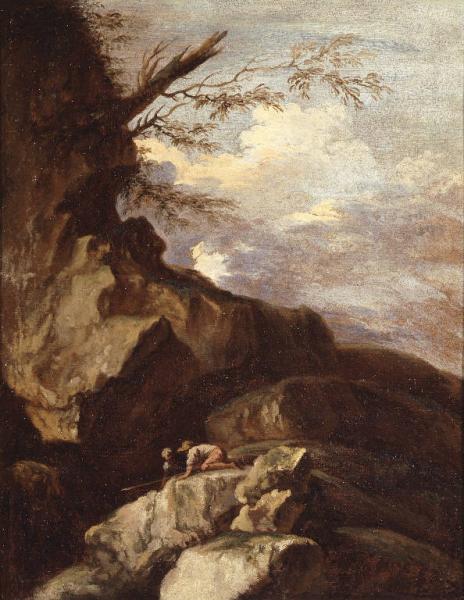
Paesaggio rupestre con figure by Pietro Montanini,
from Morelli’s own collection (picture: lombardiabeniculturali.it)
One may think that the best way would be to read Morelli’s own books, but we do recommend here rather a more diversified approach. Since Morelli did not show to be inclined to reveal systematically every reason that his attributions were based upon in his books. He did so in some cases (compare again chapter on expertises), but if one does look more systematically for a Morelli being inclined to put all (or most) of his cards on the table and to reveal his argument more fully, more frankly than he might appear by just checking his published books, one does find this Morelli also and rather occasionally in his books, but more so in letters to his pupil Jean Paul Richter, who over many years was the one pupil Morelli liked and did enjoy also, in a more relaxed way, to discuss attributions and reasons for or against certain attributions more frankly that he did discuss attributions or deliver expertises in his books (Jean Paul Richter himself was also aware where exactly in his books, Morelli had revealed his practices more fully: see Seybold 2014a, p. 70, note 163; and compare Morelli 1890, pp. 258ff.).
This being rather inclined to secrecy, of course, could and has also to be criticized, because Morelli’s approach to connoisseurship implied that reasons had to be put forward and arguments had to be revealed fully and transparently (compare Morelli 1890, p. 42; Morelli 1891, p. 16; M/R, p. 75). To guarantee a culture of verifiability and, in a modern sense, falsifiability. But it is fair to say that Morelli himself not always, not at all time, and not at all in every single case, had lived up to this implication of a wanting to establish a culture of scientific connoisseurship (although Morelli was in the habit of reminding his readers occasionally (or his pupils), that it was about putting forward of rational arguments).
[as the more symbolical expression of Morelli not being inclined to lay all of his cards on the table might be seen that he enlisted, as in the case of Giorgione, distinctive properties that he did consider to be characteristic for Giorgione, but stopping to enlist these properties all of a sudden, by saying simply ›etc.‹ (namely »u. s. f.«; Morelli 1891, p. 280), as if it was clear in itself what he was talking about, or if one was meant to find out on one’s own, on what exact reasons Morelli had based or was basing his Giorgione attributions; and in a sense, that is, actually, one was indeed; and perhaps to the benefit of practicing more intesely to think like Morelli might have been thinking (he had for example chosen to dismiss the again naming of a characteristic Giorgionesque cloud; compare Morelli 1880, p. 196f., note 1), but not necessarily to the benefit of a better, more transparent and concise understanding of Morelli]
3) Is there a concise definition of the so-called Morellian method (being understood here as being part of a wider set of connoisseurial working practices)?
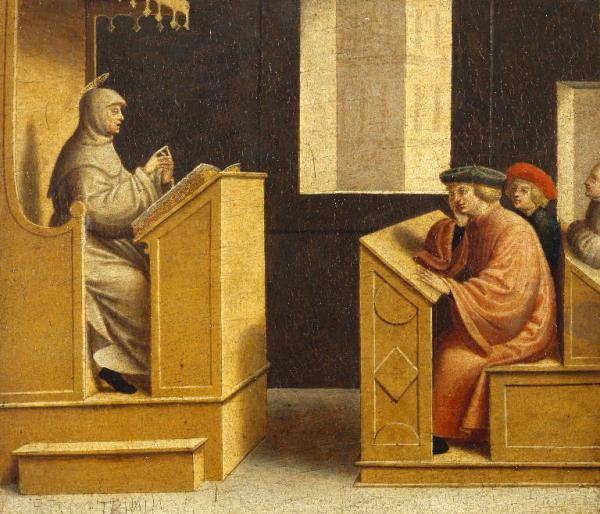
San Bonaventura nello studio by Pseudo Giovenone,
from Morelli’s own collection (picture: lombardiabeniculturali.it)
Giovanni Morelli recommended to check a work in question for sets of properties, thought of as being characteristic for certain painters, to attain in the end, also relying, but not solely relying upon such tests, a higher degree of certainty than was, in his eyes, to be obtained by checking a work in question merely intuitively, or by relying solely on documents.
[This one-sentence definition of the Morellian method, in spite of its shortness (or length) refers actually to a set of practices that could also be thought of as a five stage process: a) definition of a problem from with an intellectual framework (guiding further actions results, be it in the field of style criticism or in any other area of connoisseurship, which is historical studies, more specific (interpretive) art historical studies, or material tests); b) it is about to have, i.e. to know about characteristic properties of relevant painters (which is also referring to an ever ongoing process of gathering (knowledge, visual knowledge as to) such properties); c) it is about observing/finding formal analogies upon which an argument can be built; d) it is about to assess the worth of such observations in context (the weight of arguments, some of which being more substantial than others); e) it is about to make such arguments, within the context of a complete assessment of the situation as a whole, comprehensible, i.e it is about to tell about and to show convincingly, upon what exact stylistic regularity one is inclined to base one’s judgment, and why one is inclined to give what weight to what detail (which means that one also has to show that an alleged regularity indeed is one (and not only, for example, a simple likeness without having any value as a distinctive, relatively distinctive or, ideally, exclusively distinctive property)]
[the above one sentence definition can be regarded as being based on the recommendations given in answer to question No. 2, and it can also serve as a backdrop to go back to Morelli’s own introducting of his ideas, namely in Morelli 1874-1876, pp. 7-10 [1874]; again in Morelli 1890, pp. 93ff., the latter volume also comprising his ›methodological causerie‹ Princip und Methode; from there one may start to collect also all the scattered statements in other volumes, particularly prefaces to other volumes, and also translations, and statements in letters, publications of pupils etc.]
4) On what kind of stylistic marks or properties did Giovanni Morelli focus (when applying his method)?
On a level of individual artists Morelli distinguished two separate classes of properties. But his approach will become more transparent, if we are going to speak about three basic distinctions at first:
1) Morelli made a distinction between properties that were common to groups or schools of artists (›school‹ referring to either artists literally working together or, in a more broad sense, like in ›Lombardic school‹, to whole regions), and properties that could serve to distinguish individual artists, that is: not found in whole groups, but only in individual artist’s oeuvres. Common properties he also did refer to as ›Familienzüge‹, ›features common to a family‹ (see Morelli 1880, p. 9), more metaphorically using a terminology rather being associated with the natural sciences, but in doing so, applying this terminology to art and indicating a thinking in analogy.

For Morelli the paradigm of a hybrid artist:
Francesco Ubertini, named Bacchiacca
(shown here a Saint Sebastian and
The Preaching of Saint John the Baptist)
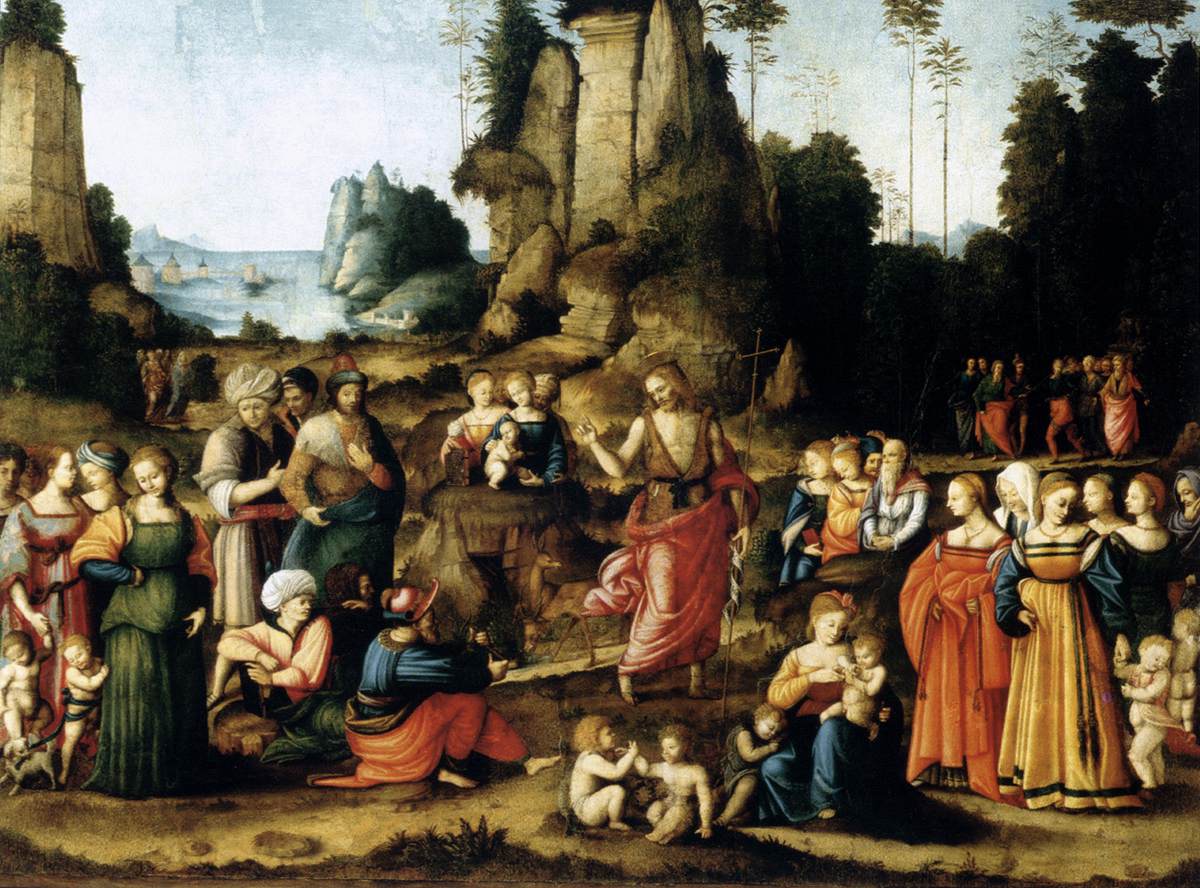
2) On a level of individual artists Morelli made a distinction between artists with a distinct or strong artistic personality, and artists being less or not equipped with such a distinct mind, thus being rather imitators or epigones (or ›hybrid‹ artists, ›Zwitterkünstler‹, as Morelli also used to name them, and as one example of such a hybrid artist he did explicitly name Bacchiacca; see Morelli 1890, p. 131).
3) As to artists with a distinct artistic personality Morelli made a distinction between properties wherein this artistic personality, the artist’s mind, did show (and these properties included the famous types of hands and ears, the individual imprint, as it were, that the distinct artist’s mind left upon anatomical form, while representing anatomical form), and properties that he regarded as being rather accidental, more habits of the hand (mannerism; ›flourishs‹ like the ›flourishs‹, i.e. ›Schnörkel‹ of a handwriting) than of the mind (see Morelli 1890, p. IX, 58, 68, 94f., 122 etc.; Morelli 1891, p. 7, note 1; Morelli 1893, p. 361).
If Morelli was now confronted with the archetypical Morellian situation, which is: with the problem to distinguish closely related styles, he checked for these two classes of properties. Assuming that, if a work in question was by a master with a distinct artistic personality, this personality would show in the general impression, but also – and at this point the Morellian method comes in, helping the searching mind of the connoisseur – also in his characteristic properties (and thirdly: in his habits of the hand).
If, however, the general impression left room for doubts that the work was indeed by a distinct artist’s personality, if also an individual work did not allow for a checking of known characteristic details, the connoisseur could also shift his or her attention more to the habits of the hand. Because, as Morelli was assuming, a copyist would neglect the exact copying of marginal detail (a lacking of such detail, thus, could also serve as a clue); and an artist without a distinct artistic personality could also show his own characteristic habits of the hand (even if lacking an own artistic personality), which were, according to the Morellian taxonomy, not an expression of his mind, but accidental. But still, possibly, something to built upon one’s reasoning.
If Bernard Berenson was, later, to argue that, the more important the artist was, the lesser important the Morellian detail, this was nothing but putting in other words: if there were no such thing as a Morellian situation, there never would have been a need for a Morellian method to be applied, because Morelli had never made a case for a attributional method, to be applied generally, as such. And if his attention shifted between two classes of properties and also a general impression, it did show that Morelli did evaluate artistic personality in a more broad sense and in the most narrow sense, as good as possible, calculating also with the possibility that properties, actually expected to be characteristic for one individual artist only, could also be copied (compare M/R, p. 214, with Morelli referring to a Leonardesque ear in drawings that were, in his opinion, copied after Leonardo; compare also Ffoulkes 1911b). And if this seemed to be the case – all the more important it was to avoid a schematic and mechanical proceeding, and to prefer a constant re-evaluating of a situation. Which could also mean: going back to a new evaluation of artistic personality and: of general impression.
What might seem to be rather theoretical, or to be even of theoretical importance only: the distinction of various, which is: two classes of properties, is actually of a very practical revelance. Since the distinction of these classes, as the other two distinctions mentioned above, helps to tentatively evaluate and to define deliberately a problem at hand. And depending on how a situation might be defined, or newly be defined during the attributional process, a proceeding might be organized, or changed, and newly be organized. In other words: theoretical assumptions with what kind of problem one is dealing with, do organize the connoisseurs proceeding, in that these assumptions open perspectives on possibilities to work with, respectively help to focus on properties to check. And the three distinctions mentioned above might help to direct one’s research, rationally, into one or the other direction. To look for reference materials to compare the central work in question with other works, already named, and to more deliberatly organize comparisons, as flexibly as needed, including changes of perspectives and alternative tentative definitions of the problem at hand. Thus the Morellian method, understood as a testing, is not to be regarded as a linear method, proceeding from step to step in a mechanical way, but rather as a frame of reference, that allows to adjust the exact proceeding to the individual problem at hand.
[examples for characteristic properties are easily to be found in Morelli’s books, since all anatomical shapes that he worked with do belong, by principle, to that class of properties; his speaking of painter’s anatomical ›defects‹ might cause some confusion, since it is strange to think of defects as the outcome of great artist’s minds, but this term, occasionally used by Morelli for example in relation to Titian or Perugino, is probably to be understood in its referring to an (in itself irrelevant) academic naturalism, accurate in terms of anatomy, that, here, serves Morelli as a measure and enables him to speak, for example, of Titian’s exaggerated ball of thumb as a defect (and characteristic property, not to be found in other artist’s works); examples for habits of the hand can be found in Morelli’s enlisting of properties in relation to Bacchiacca (Morelli 1890, p. 131f.; a particular type of light grey rock, a type of hand with pointy fingers, a city with many towers, predilection for the color blue, etc.), since this painter Morelli regarded as an hybrid artist, not characterized by a distinctive artistic personality of his own, which, literally, does not leave room for characteristic properties in terms of an expression of the artist’s mind: all enlisted properties, thus, must be interpreted, in consequence, as being habits of the hand (although, one might add, a type of hand would rank here among the habits of the hand and not among characteristic properties, being an expression of the artist’s mind); Morelli does also discuss ›Schnörkel‹ at lenght in Morelli 1893, pp. 361-364 [reprint of Morelli 1887], as regards Pinturicchio and Raphael]
[at the beginning of a melting of the two above named classes of properties into one (more vaguely defined) class is, by the way, German art historian Anton Springer; and Morelli did notice this, not to his liking, himself (GM to Jean Paul Richter, 20 November 1881), referring to this kind of simplified reinterpretation as ›superficial‹; nonetheless this tendency of simplifying Morelli or of confusing the classes can be observed throughout the 20th century as well, with few art historians, like for example Henri Zerner, rightly contradicting it and trying to setting it aright (see Zerner 1978, p. 213, note 13)]
[in later years Morelli tended also to see an artist’s technique as something containing (and also revealing) characteristic properties (compare for example GM to Jean Paul Richter, 10 June 1886), but remained reluctant to develop his thinking more into this direction, staying probably aware that his knowledge as to artist techniques was not as vast (and also more second hand acquired) than the knowledge resulting from his own long-term observing of artist’s leaving an individual imprint on representational form; and if his attention, in later years, shifted more to painterly techniques, his attention shifted also away from color as belonging also to characteristic properties to work with, for example in terms of a painter’s favourite color (compare Morelli 1891, pp. 72 and 333, for a respective ostentatious self-critique)]
5) Why was Morelli much less inclined to trust and to follow the seeming inherent logic of the Morellian method than were some of his followers?
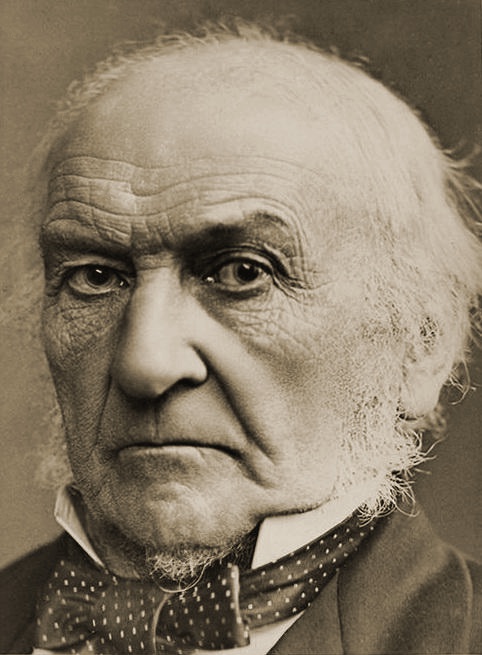
Morelli jokingly stated to have learned two things
from statesman William Gladstone (whom he met once
at a dinner table, when sitting next to him, probably in 1882 or 1887,
when Morelli visited London): firstly never to go out
without taking an umbrella with him, even if the sun does shine;
and secondly to chew one’s meal at lenght,
before actually swallowing it (see Münz 1898, p. 99).
Both maxims do read, naturally, as expressions
of Morelli’s innate scepticism and therefore cautiousness.

The Morellian approach to connoisseurship did once produce extremely high expectations, and this due to its smelling of simplification, of unequivocalness, of certainty, of objectivity, uniqueness, easyness, and last but not least: it seemed that is was easily and immediately applicable. In a word: apprenticeship time to become a connoisseur in the Morellian sense seemed to be, at least to some, or to some for some time, being rather short.
Morelli, however, who knew of these expectations and hopes, remained rather ambiguous. Which means here that on the one hand and occasionally he seemed to support the view that his approach was able to nurture high hopes, while on the other hand and in his own practice, he remained cautious and sceptical. As sceptical as a connoisseur of art might possibly be at all. And he tended to dull enthusiasm, and even was in the habit to stress that it took a long, long time to learn to see and to become a connoisseur at all, although he also did have Lermolieff state that some Morellian practices were immediatedly or after only a short time applicable, namely the excluding of attributions, based on not-finding characteristic properties (for the stressing of the necessity of patience see Morelli 1890, pp. 13, 15, 18; and for Lermolieff becoming aware of the yet limited, but still off-the-shelf applicability of the just learned see p. 75). And why is that? Why was this ambiguity, this mix of illusion and disillusion possible?

Parrots, according to Morelli 1890, p. 56, do occur often in paintings by Girolamo da Santacroce,
but are they to be considered as a characteristic property? (Morelli does admit a misattribution
on the very same page, having also to do with a parrot in the gallery of Munich…)
We may identify two core notions that played a role in Morellian thinking and Morellian practice, two notions that played a double role, in fueling enthusiasm on the one hand, and in disillusioning on the other. The one notion being the notion of ›characteristic‹; the other notion being the notion of ›distinctive‹.
The problem with the notion of ›characteristic‹ can be seen in its extreme malleableness. It is possible to speak of something as being characteristic, even if we possess only of one example for its being characteristic. For something. If something occurs often, we may also speak of its being characteristic for something, and of course, if something occurs all the time, in relation to something, it is characteristic, very characteristic, for that something too. The more often something occurs in relation to something, we might assume, the more valuable of that something to determine authorship. But the point is that, if something occurs often in one class of objects or even in relation to any object within that particular class, it is not said at all, that this something does not also occur in another class of objects. In other words: what the connoisseur is looking for are preferably, and above all, characteristic properties that belong to one class of objects, to one painters oeuvre exclusively. Only. And if we would speak of characteristic properties only in that sense, we may also replace that term with the notion of distinctive properties. And if such properties indeed would exist, in art as they may exist in nature, in human bodies etc., if one would know them and may have a chance to work with them – this would, naturally, simplify things tremendously. And this was exactly the hope that the Morellian approach did nurture. This was one way, Morelli was indeed understood. Although, one has to say, Morelli did work with all kinds of properties, with characteristics that (in a painter’s oeuvre, as Morelli saw it) occured often (compare M/R, p. 171; referring to Raphael and Perugino), and also with properties that he probably had seen only once or in very few works (like in the case of Giorgione), but still was inclined to regard as being characteristic. Matching a painter’s artistic personality, as he tended to see or to imagine it.
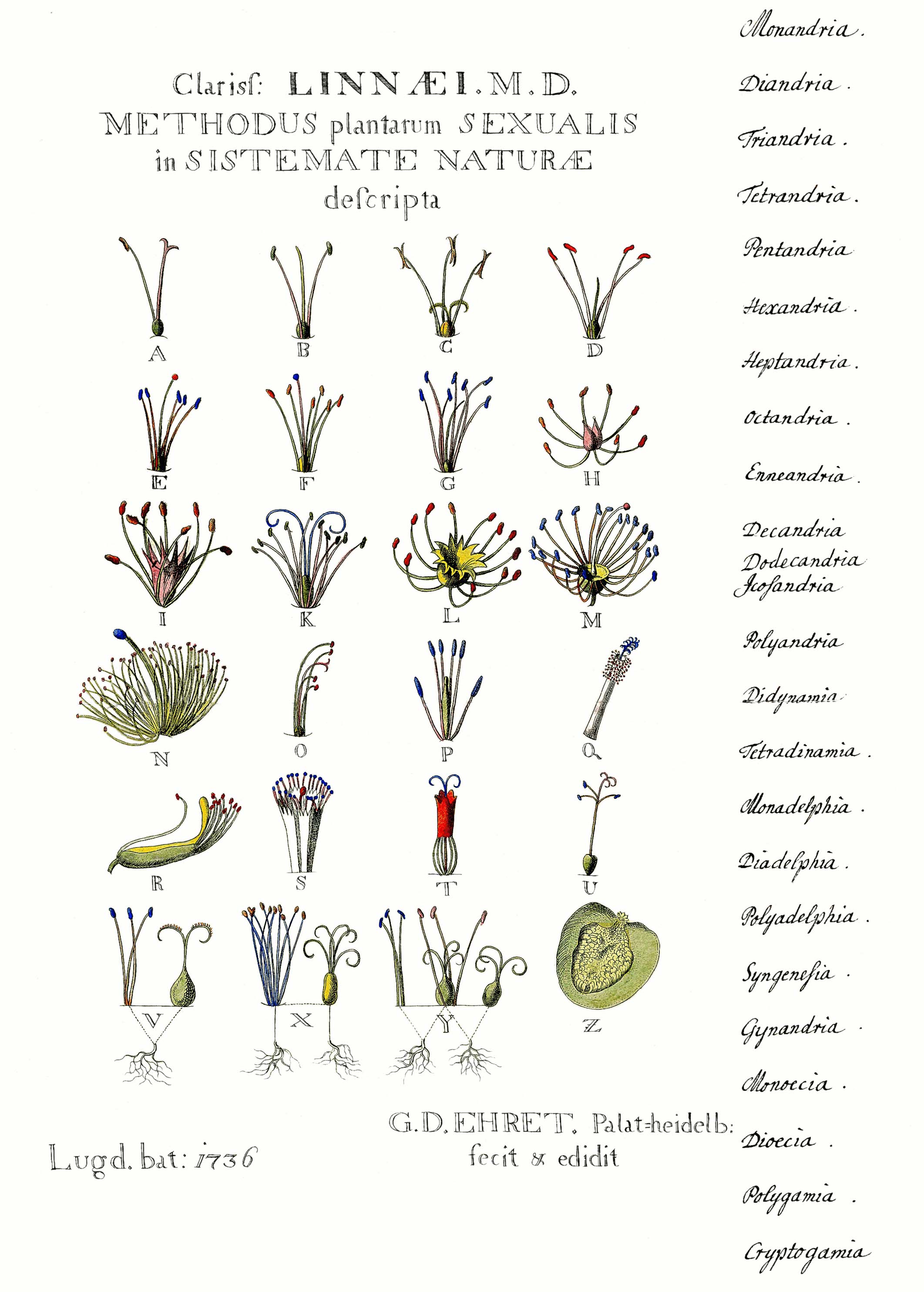
A somewhat hidden reference and metaphorical analogy:
botanical classification according to Carl Linnaeus
The second notion that can be regarded as an offspring of ambiguity is the notion of ›distinctive‹. Because the very notion does imply that, in the world of art, the world of form, distinctiveness does reign. That indeed, if one type of property does occur only in one class of objects and can be regarded as being a distinctive property, this distinctiveness is, as it were, guaranteed. And not disturbed by fuzziness, able to undermine the clear distinction between single artists, artist’s schools etc. The Morellian approach tended to suggest that it might be possible to tell a painter from another, by differenciating clearly distinctive properties that belonged to one class of objects respectively, but failed to show comprehensibly and verifiably that the world of form was indeed ruled by distinctiveness and not by fuzziness. And failed to say, to what degree fuzziness was also acceptable, and failed to say what the connoisseur was supposed to do, if the world of form did not seemed to be like the Morellian thinking theorized (and wanted) it to be. A thinking that had suggested, at least to some, that uniqueness was to be found, uniqueness, like for example in botany was to be found, uniqueness that one could, apparently also rely on, since a tree, a plant, did produce leafs and fruits with some regularity to rely on.
While it remained unclear to what degree the world of art actually could be seen in analogy to botany (compare, for the analogy, for example Jean Paul Richter 1883, p. 3; and compare also Wölfflin 1968, p. 7, with note 1). Did the single painter behave like a tree, producing leafs and fruits, that is, characteristic properties, with a similar regularity to rely on? That one could build on the observation of such regularities in determing authorship? Relying on the Morellian approach like a botanist might be inclined to rely on a classificatory system to determine the identity of a plant?
And if so: why did Morelli allow exceptions, for example by saying that only ›almost every painter‹ showed ›habits of the hand‹ (Morelli 1890, p. 94)?
Given all that, given several sources of equivocalness within the Morellian thinking and inherent to the practice, it is little surprising that, given also the high hopes nurtured by the very approach, various connoisseurs and art historians responded very differently to it. Some with being rather overwhelmed by the vision to conceptualize the study of art in analogy to botany. Others scared by the very vision, fearing that other interests, other methods also, and a more intuitive approach very in particular, would be outshadowed in the near future.
And in the middle of all that, of hopes and fears, remained Morelli himself. Rather remaining ambiguous, not knowing exactly (as we may assume) to what degree high hopes were actually justified.
Still, if Morelli was in the habit of saying that to become a connoisseur long apprenticeship was necessary, he was probably very serious with it (although he did like also to dull the enthusiasm of proud young man that he sensed would not respect him as a master), because if one thing he had learned proceeding rather slowly in comparing works of art with scrutiny (a practice also slowed down, since travelling remained necessary), it was probably that every single case was different, requiring the connoisseur to make long series of comparisons, infinite series actually, since one could never be sure at all to have found all the necessary to determine authorship with certainty, a Morellian apprenticeship, all in all, not resulting with a readily applicable method that indeed could serve as a simplification (and if there had been such, Morelli would probably not have liked young people using it to outshadow himself, who had acquired his skills only in long practice over the years).
Morelli tended, according to his sceptical nature, to stress the relativeness of certainties, the relativity also of any methodological concept. Since there were many different situations, many different problems that a connoisseur could face. And certainly there was not the single one golden rule, to get rid of any unequivocalness, of any situation that confronted the connoisseur with a problem the Morellian thinking had not yet prepared him for.

Does the peacock point to Pisanello or to the school of Stefano da Zevio?
(compare Morelli 1893, p. 103)
Morelli’s attributions, in sum, did rest on systems of comparisons, on constructions built on ›if and then‹, like any other connoisseurs attributions were. If the working with Morellian properties seemed to simplify things, it was also due to a general ignoring that the general impression in front of an individual work of art remained important as a reference (as the something that had to be checked by Morellian controls). And even if it might have seemed to some that a vast knowledge as to artistic personalities was not longer required, since the working with distinctive properties could replace a long apprenticeship, necessary to really get to know the artists and their respective personalities, this was due to an easily turning of the Morellian thinking into Morellian ideology.
With Morelli, to some degree, fueling such tendencies, but, all in all, remaining, sceptical and rather ambiguous. While two of his actual pupils or heirs, namely Jean Paul Richter and Bernard Berenson, went, in their collaborating, but also individually, through a phase of high hopes, associated with the Morellian approach (compare Seybold 2014a; and see particularly Kiel (ed.) 1962, pp. 70 [Berenson in 1893], 113, 285 [Berenson in 1949]). Both sympathizing and identifying with an extremely positivistic interpretation of it, and each of them leaving also, without any doubt, this initial phase behind, and finally regarding the Morellian approach as something more ambiguous that initially it may have seemed to be.
But neither of them – this phenomena also might be seen as being significant, tragically significant – did ever acknowledge the experience of having worked, guided by Morelli directly or indirectly, over many years, if not over many decades. None of them reflected about respective illusions and disillusions concretely and publicly. In other words: no one felt responsible for a critique of ideology that also had been part of the Morellian phenomena. That had been, speaking psychologically here, an amalgam of high hopes and bitter disappointments, all associated with a central figure, who had known of his ambivalent reception very well, and had chosen rather to observe what others made of his approach, than to comment on any phenomena of reception. Remaining rather secretive as also was Morelli’s habit. And here probably due to his sensing that there was no way to better direct or to redirect such a complex phenomena as the response to his envisioning of scientific connoisseurship was. And probably also due to a not being very certain in the end, in relation to what degree one actually could, with or without reserve, rely on the approach associated with his own name.
To find out, respectively to test empirically the validity of the Morellian method, remained to posterity. Who chose to ignore the problem and the leave the whole approach, including high hopes and disillusionings of all kinds, behind and to proceed rather like one had proceeded before: combining intuitive and more rationally reflected practices ad hoc, without sticking to a rigid methodology nor to a classificatory system, nor to procedural standards of science or a culture of verifiability or falsifiability in general. Dismissing the vision, without a differenciating between justified hopes and relative usefulness on the one hand, and unjustified ideological language, guiding questionable practices, on the other. And dismissing also the chance to learn from history in terms of a learning from both.
6) Did Giovanni Morelli ›invent‹ the Morellian method (or even ›modern connoisseurship‹)?
Morelli did, occasionally, speak of his predecessors. But if he – at least indirectly – speaks of these authors that also might have influenced him, and of which he even – horribile dictu – might have borrowed some original ideas, that, later, were rather being considered as his ideas, we have to keep aware that he did not acknowledge his predecessors as one would expect a today scholar to acknowledge influential authors and sources. This has not only to do with Morelli’s pride, his (rather secretive) eclecticism, his essayism, but also with his prejudices and deep dislikes.

Pierre-Jean Mariette (1694-1774) 
Luigi Lanzi (1732-1810) 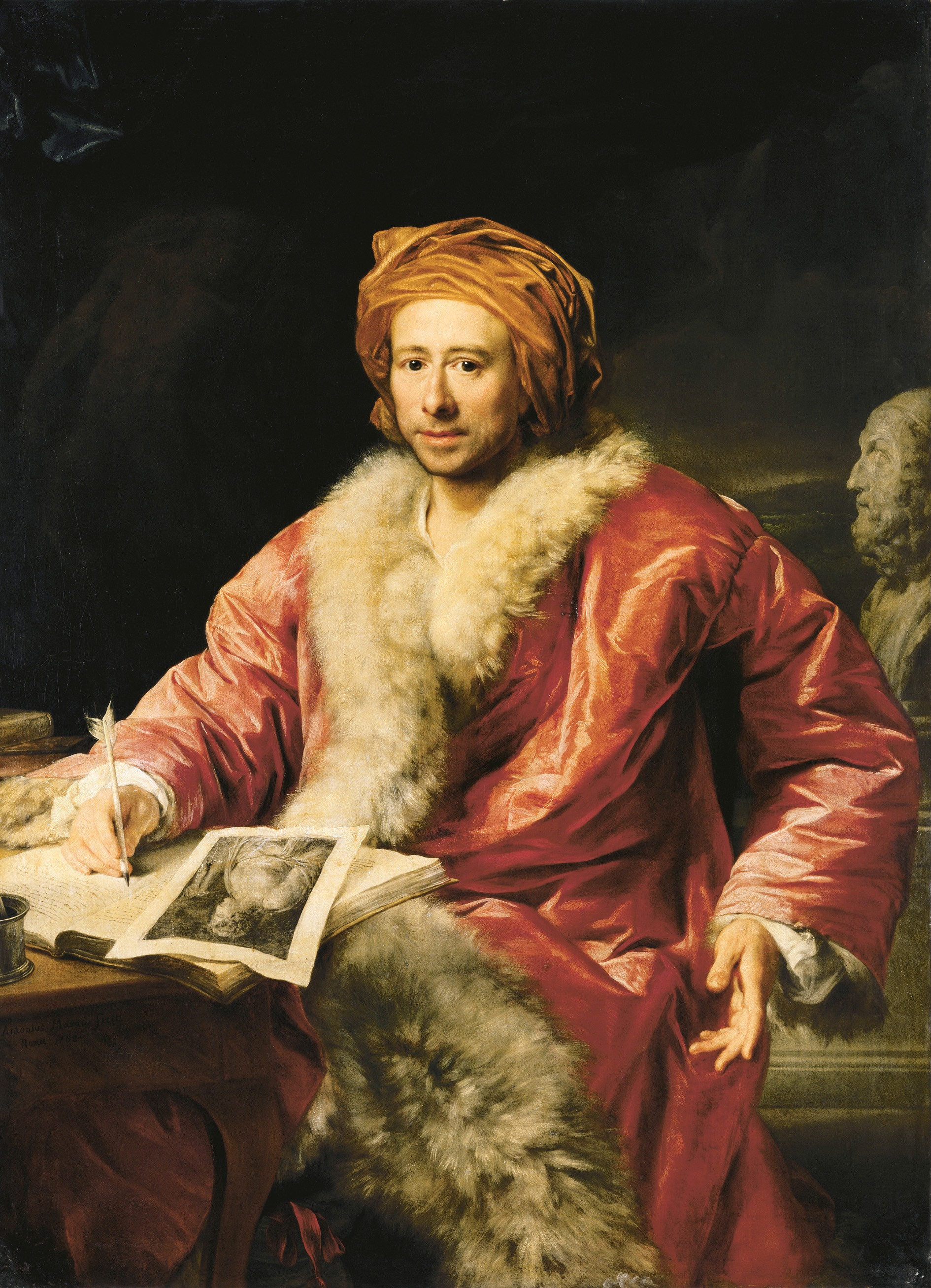
»It was customary with the ancient artists to elaborate
no portion of the head more diligently than the ears. The beauty,
the execution of them is the surest sign by which to discriminate
the antique from additions and restorations…« (quoted after
Spector 1969, p. 70: Johann Joachim Winckelmann (1717-1768) 
Carl Friedrich von Rumohr (1785-1843) as painted by Friedrich Carl Gröger

GIOVANNI MORELLI AND THE CONNOISSEURIAL TRADITION I: ANTECEDENTS
I. MORELLI AND 18TH CENTURY CONNOISSEURIAL TRADITION
If Morelli repeatedly mentioned Pierre-Jean Mariette, namely as ›certainly one of the greater, if not the greatest connoisseur of drawings and etchings in France‹ (Morelli 1890, p. 190, note 2, p. 412; compare also M/R, p. 315), he remained rather silent as to Luigi Lanzi, of whom he directly borrowed or adapted ideas, but accepted in the end that Lanzi could be seen as one of his antecendents (see Morelli 1890, p. VIII, with the naming of »Pater Lanzi«; see Pfisterer 2007, p. 98 for a crucial passage in Lanzi).
But Lanzi was a (former) Jesuit, and Morelli most deeply hated the Jesuits and all that they (the ›Jesuitenpack‹, as he called them also; see GM to Jean Paul Richter, 11 March 1885) did represent (for him). The duty to acknowledge influences properly here, obviously, collided with Morelli’s prejudice as to the Jesuits (which, ironically, has Morelli, to some degree, appear being a ›Jesuit‹, as he himself understood the term).
One has also to take note of Morelli’s very early mentioning of Jonathan Richardson in his early satirical writing Balvi magnus of 1836 (see Morelli 1836, p. 3, and compare Anderson 1991b, p. 37; possibly Morelli has just grasped the name due to an early reading of Winckelmann; for Winckelmann compare Spector 1969, p. 70, since the checking of ear shapes is foreshadowed in Winckelmann, if applied here to ancient sculpture). But most of all one has to mention the possibly most important source as to Morelli’s theoretical thinking: the Raccolta di lettere sulla pittura, scultura ed architettura: Scritte da’più celebri personaggi dei secoli 15, 16 e 17 by Giovanni Gaetano Bottari (in the edition of 1822, the first edition having been published in 1754-1768).
Enrico Castelnuovo had been the first to point to this work as a possible inspirational source for Morelli and the Morellian method (see Castelnuovo 1968), and namely to one letter from this collection (Luigi Crespi to Giovanni Gaetano Bottari, 25 September 1751; from Bologna). But one has to add also, and this as a supplement to Castelnuovo, that Morelli indeed and explicitly (if in another matter) referred to the very volume of this collection that contains this particular letter (see Bottari 1822, vol. 4, pp. 382-385, particularly p. 383; and compare Morelli 1891, p. 182, referring to p. 368 of Bottari 1822, vol. 4, with Morelli also naming Luigi Crespi).
And if it seems plausible (due to this referring to the same volume and to both names) that Morelli was probably, at least at the end of his life, aware of his predecessors and that he probably and also had taken some inspiration from them earlier or even borrowed key ideas from them, it also seems plausible and fair to say that he missed or failed to acknowledge this influence properly and during his lifetime.
It is not about to prove such an influence here (which, lack of sources, cannot be proved anyway, but just made plausible), but to put Morelli into context of a larger tradition of connoisseurial thinking. And not the least it is about stating, since we are observing Morelli working with Bottari 1822, that Morelli most likely knew much more of his predecessors’ ideas than he did like to acknowledge, and that due to a probable secretly borrowing and adapting key ideas, he generally appeared – at least to his contemporaries – more original that he probably was, with Bottari/Crespi being – then and today – rather being read only by specialists.
This however, does not change much as to Morelli’s role in history (it is rather about nuances), because ideas of his predecessors had probably not become that influential, if they had not become influential through Morelli, adapting them and synthesizing them (with other influences) as a brand, commonly known as the ›Morellian method‹ (and this was what Morelli, explicitly was admitting/pointing out in Morelli 1890, p. VIII). His role, thus and as for today, appears to be more that of a mediator, eclectic synthesizer and above all: as the quintessential representative of a quintessentially rational approach to connoisseurship, and less or not only as that of an innovator or inventor, creating, seemingly, out of nothing, and this due to a tradition being little known or, as one has to recall again in this context, all too little made known by a particular follower of this tradition.
II. MORELLI AND EARLY 19TH CENTURY CONNOISSEURIAL TRADITION
Morelli’s strength was not originality but his all-sided receptiveness. Because the Morellian method was nothing but a composit, a synthesis. If four man, four antecedents would have had cooperated – they could have come up with this particular synthesis as well. And a synthesis can still be called an invention or an innovation, as long as one does stay aware that that particular invention can also be called a synthesis.
Carl Friedrich von Rumohr has to be named here. He was, as to art, also a mentor of the Frizzoni brothers, Morelli’s friends. And since Morelli was engaged in affectionate rivalry with the Frizzoni brothers, Morelli would never have stressed that he did also did read books by Rumohr, and that he also did learn from Rumohr all too much. The ›Morellian imperative‹, as one may call it, does apply here very well: do learn – as secretive as possible – from those that you also – as ostentatiously as possible – do criticize. And Morelli did discuss/wrangle with Rumohr in his books (see Morelli 1880, pp. 290, 293, 300 etc.; Morelli 1893, pp. 150, 153, 157 etc.), but he did also learn from Rumohr and find inspiration in Rumohr.
What particularly did Morelli learn? Among other things (he probably took his notion of ›Angewöhnung‹ (›habit‹) from Rumohr) he learned – and he even did hear Rumohr demonstrating it in person – that making attributions was about giving reasons for attributions, or at least to explain attributions by giving reasons (see GM to Bonaventura Genelli, 24 April 1839; compare also Agosti/Manca/Panzeri (eds.) 1993, vol. 1, p. 368 (Gabriele Bickendorf)). In a word: Rumohr did represent the scientific stance as such (as also Waagen did), and Rumohr, in a more broad sense, did also represent German art historical culture that was already on a path of rationalization and modernization (in parallel to the German school of historiography), primarily as historical critique of tradition, a culture of Quellenkritik was concerned (and as, for example, the reliability of Vasari was concerned).
And if Rumohr was one of the four fathers of the Morellian method (or one of four influences that added up to ›one Morelli‹), philosopher Friedrich Schelling was another, who delivered the theoretical backdrop of the Morellian method, the view that artists bewusst-bewusslos externalized their mind in producing works of art and imposed their inner notions of form, being part of their mind, upon form.
The other two fathers we have already named: Luigi Lanzi who did also recommend the shifting of one’s attention to marginal properties, and also in Bottari Morelli might have found a similar idea. Last but not least one might again mention Winckelmann, who recommended the checking of ear shapes as to ancient sculpture.
To this four (or five) main influences that added up in the Morellian method, several other factors might also have been important in shaping Morelli’s thinking: physiognomy, particularly as to his early years (compare for example his description of poet Friedrich Rückert in chapter Visual Apprenticeship I, as well as his discussion of Genelli’s head of Don Quixote, given in chapter Visual Apprenticeship II), his being a sitter for various Munich artists, an experience that might have made him realize how these artists imposed their notions of form upon the representation of his body; and also and particularly his dialogue with Genelli and with the Frizzoni brothers, that, as we have shown in the introductory essay, led Morelli to think about the being important or not being important of small defects in drawing.
It was also Genelli, by the way, who directed Morelli, in 1841, towards the theory of ›automimesis‹ (see note below).
Last but not least: unlike Morelli was to suggest later – many connoisseurs were also working with distinct properties and also more or less rationally (and were not exclusively, as Morelli suggested repeatedly, relying on a general impression only): Rumohr had for example stressed the unique drapery in Giotto (Gibson-Wood 1988, p. 159), but if we would go farther back and would review tradition, we would also find more and more writers, attempting to conceptualize a working with distinct properties. And as a contemporary of Morelli we would find Adolph Bayersdorfer (compare chapter Visual Apprenticeship II and III) and Ludwig Scheibler (whom his teacher Carl Justi also explicitly did compare with Morelli; see Carl Justi to Jean Paul Richter, 26 December 1889, Bibliotheca Hertziana). And when Morelli had heard that one had compared his working, his method, with for example Lanzi, and with even the Goncourt brothers’ making of observations in works of art, he did not even energetically defend himself (see again Morelli 1890, p. VIII; and compare Pica 2004), but stressed what he have said above as well: it needed someone to actually do what he was doing, even if others had had similar ideas (like for example Luigi Lanzi). Morelli had made himself an advocate of scientific connoisseurship (and this nor Rumohr, nor any other connoisseur had done). And if someone did synthesize and conceptualize ideas that also were ideas of others, ideas that this someone did reinterpret in terms of 19th century scientific culture, one may still call this someone an inventor or innovator. Morelli certainly was one, even if he did not invent out of nothing, even if all – all ingredients of the Morellian method that made a synthesis can also be traced back in history to other thinkers. And namely also to some thinkers whom Morelli did not particularly like to give them more credit than actually necessary (and in fact, he gave them less, at least as far as Rumohr and Schelling, but also as far as Bottari was concerned). As to Lanzi he did, at least in some sense, give him credit: in not contradicting the view that ›Pater Lanzi‹ actually was his antecedent (implying that the Morellian method had – also – grown out of the ideas of a member of the Jesuit order).
And an allegory of misleading art historical traditions (compare Morelli 1890, p. 113, note 1):
›How often one is being reminded, if reading books of art, of the parable, having been represented so delightfully by the splendid old Brueghel, in his picture in the Museo of Naples.‹
»Wie oft wird man nicht in Büchern über Kunst an die Parabel erinnert, die der treffliche alte Brueghel auf seinem Bild im Museo von Neapel so köstlich darstellte.«
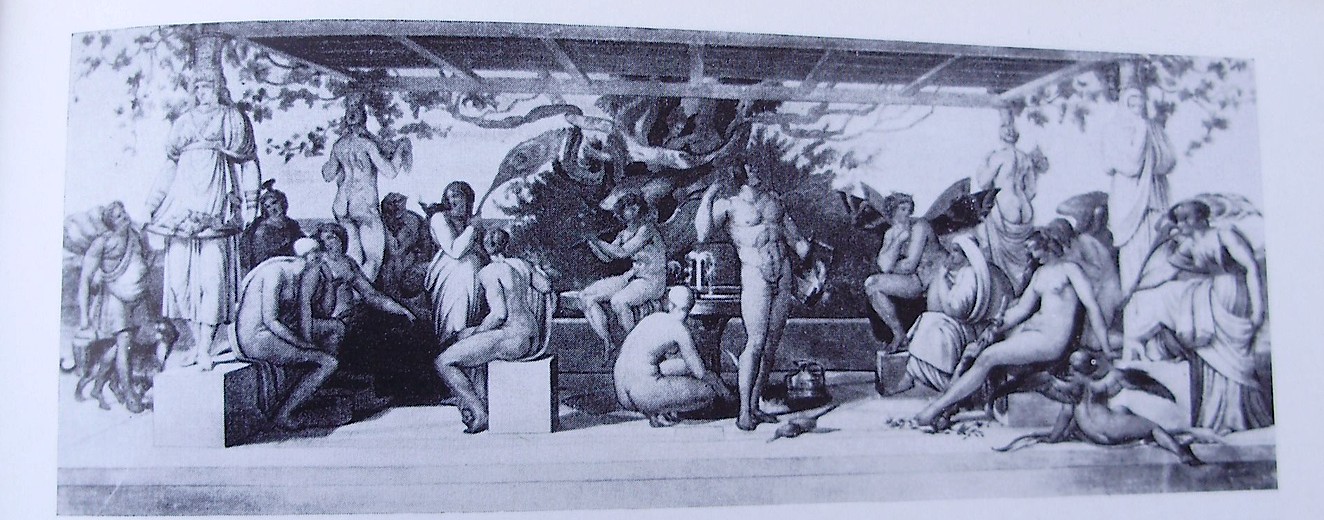
This version of Herakles und Omphale (or Herkules und Omphale) by Bonaventura Genelli gives an impression of what Giovanni Morelli and his
friend Giovanni Frizzoni did look at in 1846, when quarreling over a rendering of a ›singing Hercules‹, and over ›to look or not to look
at minor defects, when looking at art‹ (compare the introductory essay to the present monograph)
(source: Ebert 1971, p. 45; it is theoretically possible that the here reproduced work was coming from a Frizzoni collection and actually was
the then discussed work, but this can not be ascertained; Genelli, in 1862, painted his better-known painting of the subject;
and as to the subject in general compare Nielsen 2005, pp. 35ff., and again Ebert 1971, pp. 163-165).
[if the theory of ›automimesis‹ (see Zöllner 1992) is to be counted among the intellectual origins of the Morellian method is a question that deserves particular attention: in 1841, in writing that he was complying to 25-year-old Morelli’s wish to have a portrait of Genelli, that is: an autoportrait, Genelli did also say in passing by (Bonaventura Genelli to GM, 30 November 1841):
»Mein Wesen soll leider in allen meinen Figuren liegen, so sehr ich mich auch mühe, es zu verleugnen – ein Fehler, den, wie es scheint, kein Künstler ganz abzustreifen vermag.« (›Unfortunately my nature is said to be in all of my figural characters, as much I am dedicated to deny it – a defect, that, as it does seem to me, no artist is capable of casting off completely.‹)
And in 1874 Morelli was to refer to the theory of ›automimesis‹ as it is to be found in the ›Treatise on Painting‹ by Leonardo da Vinci (Morelli 1874-1876, p. 8; again in Morelli 1890, p. 95; compare again Zöllner 1992, referring, in passing by, also to Morelli); it is not known, however, when Morelli did read Leonardo for the first time (nor do we know what exactly happened in Morelli’s mind in 1841 and afterwards); it may be that, much later, Leonardo was to be, for Morelli, a high-profile voice or the high-profile voice he needed, confirming the general direction of thinking, to be associated rather with Schelling, whom Morelli – this is also particularly noteworthy – just had met, accompanying Gino Capponi to Munich, earlier in 1841; and whose Rede über das Verhältnis der bildenden Künste zur Natur Morelli was going to translate subsequently (Morelli 1845); again: what exactly happened in Morelli’s mind, when clarifying his own thoughts as to connoisseurial method in around 1860, that is: only several years later, and when synthesizing thoughts of others that we have named above, remains unknown; but what we do see here is, as it were and at least, the pre-historic context of the Morellian method in its originating in Morelli’s mind, with Morelli certainly drawing on many inspirations of others, including that of his friends, Genelli and the Frizzoni brothers very in particular]
7) Which was the more ›revolutionary‹ implication of the Morellian approach?
If science, as far as any discipline might be concerned, cannot be thought without a culture of verifiability and falsifiability, scientific connoisseurship cannot be thought without it.
Since a culture of verifiability and falsifiability that actually would deserve that name did never exist in connoisseurship, scientific connoisseurship did only exist as an idea (and this although Morelli is sometimes thought of as having caused an actual revolution, in terms of establishing scientific connoisseurship, and in establishing positivism in the discipline of art history; compare Schlosser 1934).
Which is why we designate the idea of a culture of verifiability and falsifiability (an idea that Morelli himself did not fully live up to) as rather being an implication of his envisioning scientific connoisseurship and a positivistic science of art, and of his demanding of a general giving of reasons for, and explanations of any attribution of a work of art to a respective author, very in particular (compare Morelli 1890, p. 42; Morelli 1891, p. 16: »wie sich dies von selbst versteht«; M/R, p. 75). A revolutionary implication, because the realization of it would have had, if it had occured, changed connoisseurship, equalled here with attributional studies, fundamentally. But this was never the case.
8) Under which historical and biographical conditions Giovanni Morelli did develop his approach?
If it has been said that Morelli ›did invent connoisseurship to save the cultural heritage of Italy‹ (Anderson 1999b, p. 233), one has to say that Morelli himself never did explicitly link these two things, although he was also concerned with Italy, at his day, being a country in development, and with protecting and better caring for its cultural heritage.
In fact Morelli did explicitely link his seeking for a method with his own being rather uncertain as to the determining of authorship of works of art (GM to Jean Paul Richter, 21 May 1885). And in not limiting the context where such uncertainty would have mattered, Morelli leaves us with raising the question what these specific contexts were. And if fact, these were as diverse as connoisseurship, in its applied version, was and is a diverse field of human practice. Plainly speaking: Morelli did make a living, from the later 1850s onward, also with, which means: to some degree, with dealing with works of art, as far this seemed useful, possible, reasonable and not all-too unpatriotic to him. While he was also concerned to help inventorizing and protecting the cultural heritage of his home country. The background of his rethinking connoisseurial methods, thus, was ambiguous. And if one stresses only single aspects of it, one does run in danger to simplifiy that ambiguity. To the better or worse. But it remains also useful to remind that Morelli had its own moral standards, and one can observe him struggling with his own standards and with his own ambiguity. Which means: it is actually not necessary to measure Morelli’s practices with later moral standards (of posterity). All the more since his own moral standards were high and rigid. But this means also that one should not ignore his occasional struggling with his own values either.
9) In what wider programmatical context the Morellian approach to connoisseurship has to be seen?
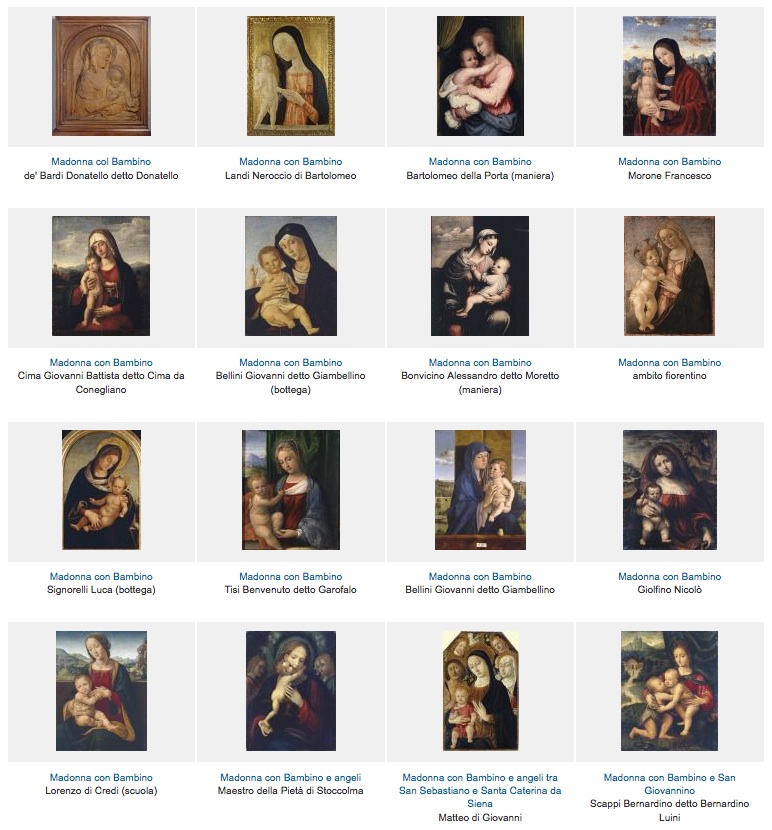
With renderings of the Madonna by Raphael Morelli did see the Holy Mother
›leaving the church‹, becoming simply mother (see Morelli 1893, p. 253):
given here are renderings of Madonna and Child – from Morelli’s own collection
(source: lombardiabeniculturali.it)
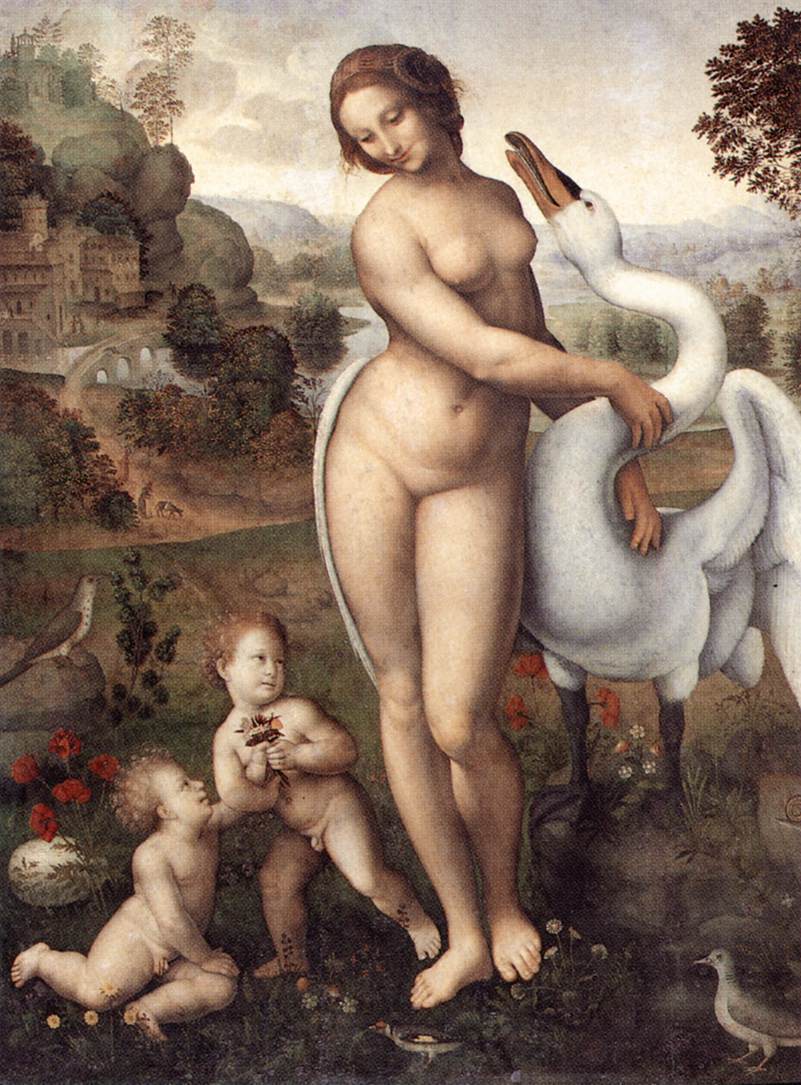
A most ingeniously rendered swan…

…if compared, for example, with Hondecoeter…

…or with Asselijn (see Morelli 1890, p. 194).
Morelli did not only envision scientific connoisseurship, but scientific connoisseurship as being the basis of a science of art (Kunstwissenschaft). This raises the question what Kunstwissenschaft, for Morelli, might have been all about in general. And scattered in his books we find remarks that, for example, art showed man in his passions (»den Menschen in seinen Leidenschaften«; Morelli 1893, p. 140; reffering to Boltraffio who, in his view was lacking this ability), or that, what made a great artist, was, again in his view, an exeptional ›power of invention and a talent for original representation‹ (»Erfindungskraft und originelle Darstellungsgabe«; Morelli 1891, p. 311). His most frequently used adjectives, in describing art that he liked (and he did not, as Aby Warburg did imply (Gombrich 1992, p. 182), admire ›without using adjectives‹), were probably ›aimable‹ (›liebenswürdig‹; see for example Morelli 1893, pp. 93, 191, 212) and ›spirited‹ or ›ingenious‹ (›geistreich‹; see for example Morelli 1890, p. 194; Morelli 1893, p. 252, note 1).
Beyond this personal and more subjective relation that Morelli had and cherished with individual artists and individual works, he was also interested in the evolution of art as such, and also to observe and to understand evolution within the whole vast panorama of a history of art, written and organized upon scientific principles; and this is to be regarded as the more hidden, more implied relevance that scientific connoisseurship, as being the basis of a future Kunstwissenschaft, also might have had for him: only the most solid and rigid classification would one enable to perceive how art developed, in analogy to nature (and maybe also, according to the Naturphilosophie of the romantic era, as creative nature or natura naturans), and, as one must add, in analogy to natural evolution. And any attempt to think the history of art as the result of artists exerting influence on each other, that is according to a ›Beeinflussungstheorie‹, Morelli could only see as an undermining of his, of the evolutionary approach (see for example Morelli 1890, pp. 166, 169, 220, 375; Morelli 1891, p. 165; Morelli 1893, pp. 71, 99, 110, 155, 291).
Beyond that Morelli, if only once and in his typical impulsive way (and while he was probably aware that he was more the man to inspire than to carry out any undertaking demanding a large amount of discipline), he did suggest to his pupil Jean Paul Richter to write a treatise on the history of taste, focussing on the psychological factors working and revealing themselves in appreciation of art (which is: in social history, a field of history, not being equal, but corresponding with a history of artists, artist’s practices and works of art) (see GM to Jean Paul Richter, 11 June 1885).
10) What had Giovanni Morelli in common with Sherlock Holmes? And in what way these two figures do differ?
If one does compare Giovanni Morelli with Sherlock Holmes, the latter thought as a symbolical figure of global imagination, representing the triumph of close observation, the power of deduction and insight into human nature, in sum: representing the triumph of reason, a reason that manages to re-establish order in the world (after order had, by a crime, been disturbed), then Giovanni Morelli and Sherlock Holmes have rather little in common.
We would have to set the relative triumphs of Giovanni Morelli against the overwhelming triumphs of a symbolical figure representing the triumph of reason as such. And as we show in this section, the relative triumphs of Giovanni Morelli can, moreover, not necessarily traced back (in every case and fully) to his full and only applying of reason (compare also answer to question 21).
Nonetheless also Giovanni Morelli is and can be regarded as a symbolical figure, not of global imagination, though, but as a figure representing a quintessentially rational approach to art connoisseurship. His followers might have wished that he represented also the triumph of reason as to this field of human practice, and some traditions indeed tried to create a respective image of Morelli. But Giovanni Morelli, thought as a historical person, can certainly not be interpreted, without any reservation, as representing the triumph of reason in connoisseurship. Moreover: Morelli was far too sceptical to think of himself, in earnest, in such a way, and would have thought a respective claim to be pretentious and ridiculous (even if he did enjoy to some degree, if he was admired and praised; but too much praise, nonetheless, resulted in wild outbursts of scepticism, which did represent, again, one side of his highly sensitive character, but not his character as such).
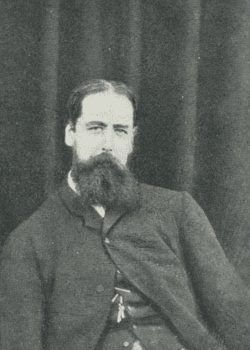
Museum director Henry Edward Doyle (1827-1892),
whose acquaintance Morelli made in 1887,
was an uncle of Arthur Conan Doyle
(picture: libraryireland.com)
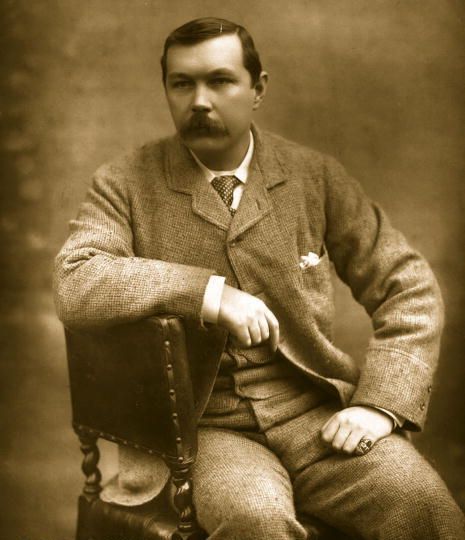
Arthur Conan Doyle (1859-1930) in 1890

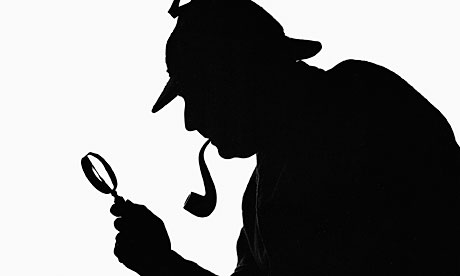
If one does compare Giovanni Morelli with the Sherlock Holmes of the Sherlock Holmes-stories and -novels, who is a more complex character than his relative, the symbolical figure of global imagination, these two characters, who also inhabited one and the same historical space, one and the same historical epoch, have much more in common. Both disposed of irony, of observational skills, and the power of deduction, and both (we have, as to this matter, also to rely on Dr. Watson) were not able to solve every case they were being confronted with at their day (Dr. Watson explicitely does state, in fact, that he, Watson, did not find those cases, wherein Holmes did fail, worthy of being transmitted (see The Five Orange Pips); and also in art historical traditions we find such manipulative strategies of respective politics of memory, however, less successfull strategies than in the case of Holmes). Last but not least one may add that Morelli was, in tendency, rather Anglophile (compare Münz 1898, p. 98f.; also as to Morelli’s encounter with Gladstone) and had, with some reservations, a generally positive image of English civilization (his English was probably as good that he could read English texts, but he could not speak English as fluently as for example he spoke French).
If one, thirdly, does compare Giovanni Morelli with Sherlock Holmes, the literary character, that is: one human character with another human character, one can hardly ignore that Giovanni Morelli, unlike Holmes, was a man with abundant emotions, emotions that he was (with few exceptions) not entirely capable of hiding or controlling, even if he aimed to do so. His passionate nature showed and that was that.
While Holmes, if he was a more emotional character than he did show (even to Dr. Watson), he must have been capable of controlling his emotions and thus of hiding them, even as to those next to him, from being revealed. Both, by the way, Holmes and Morelli, were living their lives as bachelors.

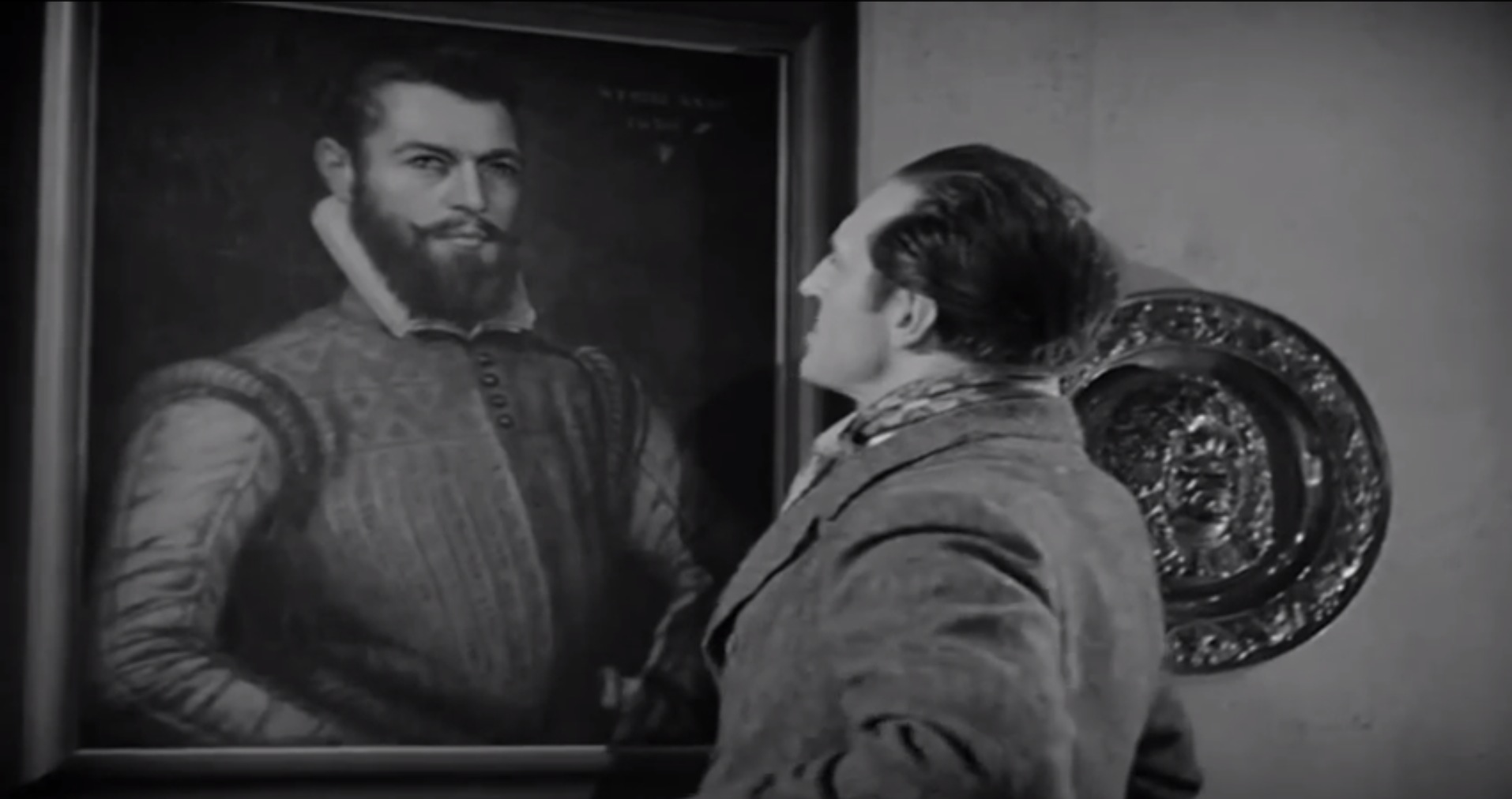
(Picture: youtube.com; small picture above: theguardian.com) 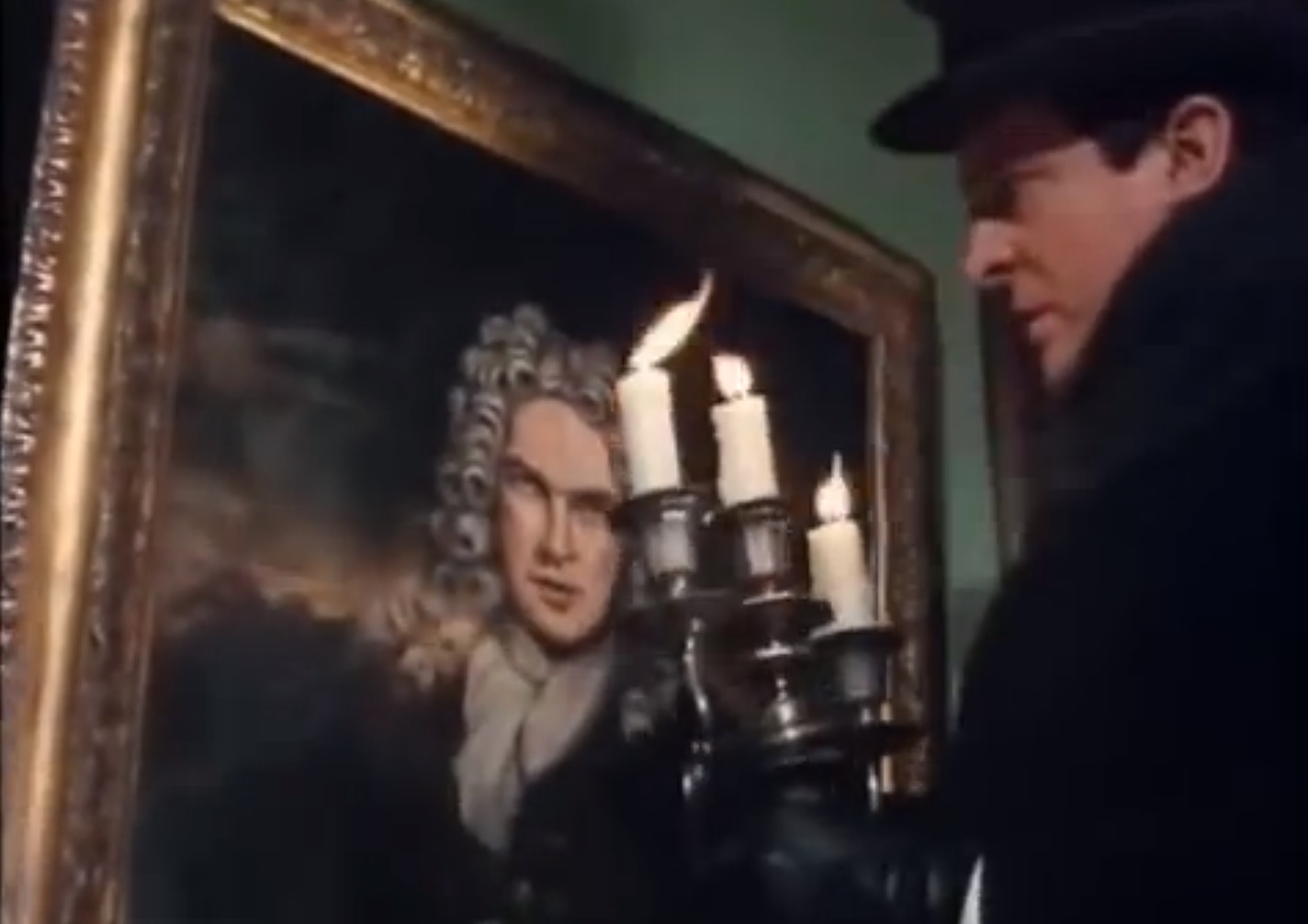
(Picture: youtube.com; for references to films and actors see here)

GIOVANNI MORELLI AND SHERLOCK HOLMES
1868: Morelli, for 24 days, visits London for the very first time (compare GM to Jean Paul Richter, 25 May 1878 (M/R, p. 60f.); and see Gibson-Wood 1988, p. 187).
1876: Cesare Lombroso, L’uomo delinquente (1887 translated into German).
1878: Morelli recommends to his pupil Jean Paul Richter, not without a trifle of irony, to look at pictures – and to interrogate pictures – like a former police inspector (»Inzwischen aber fahren Sie fort viel zu sehen, aber jedes Bild vorerst mit den Augen eines vormaligen Polizei-Kommissärs sich anzusehen und auszufragen.«) (GM to Jean Paul Richter, 22 April 1878 (M/R, p. 54; compare also p. 57)).
1882 (June): Morelli visits London for the second time.
1886: Fergus Hume’s The Mystery of a Hansom Cab is a world-wide bestseller, even outselling Arthur Conan Doyle.
1887: in February Carl von Lützow includes an ironical note in his Kunstchronik (the supplement to the Zeitschrift für bildende Kunst), according to which the Berlin police has adapted the Morellian method (see [r.] 1887); in the summer Morelli visits London for the third and last time; he is also presented to Queen Victoria (see chapter Visual Apprenticeship III), and he makes the acquaintance of Henry Edward Doyle, Director of the National Gallery of Ireland, who is also an uncle of Arthur Conan Doyle (see Carlo Ginzburg 1979b, p. 64, note 10); Arthur Conan Doyle, A Study in Scarlet.
1890: Arthur Conan Doyle, The Sign of Four; Alphonse Bertillon, La Photographie judiciaire.
1891: Morelli dies at Milan (28 February). – According to his ficticious biography (compare timeline in Doyle 2005-2006, vol. 3, p. 859), and according to Italian sherlockiano Enrico Solito), Sherlock Holmes, after his seeming death in Switzerland, gets to Florence in May (and this via Milan).
1892: Arthur Conan Doyle, The Adventures of Sherlock Holmes; Carlo Placci, Un furto; 1892/93: Arthur Conan Doyle, The Memoirs of Sherlock Holmes.
1897: Cesare Lombroso contributes an article on the Belgian artist Antoine Wiertz to the journal Emporium to which also Gustavo Frizzoni does contribute.
1901/02: Arthur Conan Doyle, The Hound of the Baskervilles, wherein Sherlock Holmes poses ironically as a connoisseur of art (and relies on portrait likeness in his looking at art and not on Morellian detail, that is: not at anatomical notions, possibly imposed by a painter upon the representation of a real person, and also, according to Morelli, realized if a painter might have been indeed obliged to portrait likeness in his rendering of a real person); various other Holmes-stories show the detective seemingly working as Morelli did (see Zöllner 2009, p. 57, referring to Ginzburg and to the Holmes-story The Adventure of the Cardboard Box of 1893), when in fact Holmes’ working with clues is operating on a comparable (since it is also about likenesses of ears and about identification), but different level (since it is about real family likenesses and about identifying individual persons as relatives, thus about likenesses not guaranteed by artist’s deliberate-unvoluntary habits – as far as the Morellian theory does stand –, but by nature, or: by biology and its laws; the distinction being important since not making this distinction might result with implying that alleged artists’ habits might be as reliable to make formal comparisons, as are or might be laws of nature).
1902: at the London Lyceum Theatre Morelli’s pupil Jean Paul Richter with his family sees the performance of a Sherlock Holmes play (see diary of Jean Paul Richter, 9 January 1902; and compare Doyle 2005-2006, vol. 3, p. 241: play by William Gillette/Arthur Conan Doyle).
1903/04 (September 1903-April 1904): Bernhard and Mary Berenson travel to the United States to promote the ›new science of connoisseurship‹, which, according to Mary Berenson (as she says for example in a lecture given at the Pennsylvania Museum on February 2, 1904), is to be compared with the detective work of Sherlock Holmes (David Alan Brown 1979, p. 18).
1913: Hans Tietze associates Morelli with Bertillon (compare Vakkari 2001, p. 49).
1927: The American Magazine of Art refers to Bernard Berenson as a ›Sherlock Holmes of the world of art‹.
(Picture: polizeimuseum-stuttgart.de)

Questions and Answers
(Source of small picture above: Honegger 1997, p. 91 (detail))
B) THEORY AND PRACTICE
11) Is the application of the Morellian method limited to, for example, Italian Renaissance art?

Jackson Pollock scholar Francis V. O’Connor can be named
as one modern connoisseur, dedicated to abstract painting
who did refer to Giovanni Morelli in his writings
(see O’Connor 2012ff.)
To think about an application of the Morellian method in its narrow sense makes sense under the following general assumptions:
a) the art work in discussion does comprise a realistic component or dimension that leaves room
b) for an artist to leave an individual stylistic imprint on this representational dimension (like for example on the morphology of human anatomy) beyond the more obvious stylistic paradigm an artist is working in (the work of art, thus, does in a sense allow to shift one’s attention to marginal detail, where individuality might – might – reveal more distinctively than it might reveal in the main features, regarded as being part of the more obvious stylistic paradigm an artist is committed to);
c) the existence of characteristic stylistic regularities can also empirically be shown and verified, in its being characteristic (for a particular artistic personality), and in its being clearly distinguishable in relation to other artist’s personalities (and stylistic properties); in other words: the method is applicable if fuzziness and lack of distinctiveness do not undermine its reasonably being applied (corresponding to the also necessary acknowledging of any general impression, as regards the artistic personality revealed in a work at hand).
Thus, all in all, the application of the Morellian method is not limited to any particular era or region by principle, but in Italian Renaissance art Morelli did find realism, individual stylistic particularities (also and particularly to be found beyond the more obvious stylistic paradigms), and this in terms of empirical regularities and appearing distinctiveness (that Morelli, nevertheless, did not transmit fully comprehensibly to his readers, not being able or not wanting to make his assertions fully comprehensibly and verifiably, that is: for other connoisseurs and posterity to check); it is also noteworthy that in Morelli 1891, p. 7, note 1, the author does utter the (rather foolhearted) opinion that characteristic properties, being the expression of an artist’s mind, do disappear in general after the death of Raphael.
[if Morelli would be regarded, as he in tendency indeed is regarded today, as the embodiment of a working with stylistic properties as such (and not in the more specifical and limited Morellian sense), his approach can naturally be associated with any kind of art that does show stylistic properties to work with, that is: also with abstract art; ironically his name would, however, thus also be associated with a working with particularities of brushwork styles (or other artist techniques), something that he did never practice himself, being probably aware that he knew rather little of it, less, in any rate, than he knew of stylistic properties found on the level of artistic representation, a representation, as it were, processed by the individual artist’s mind, and resulting with individual representational morphologies]
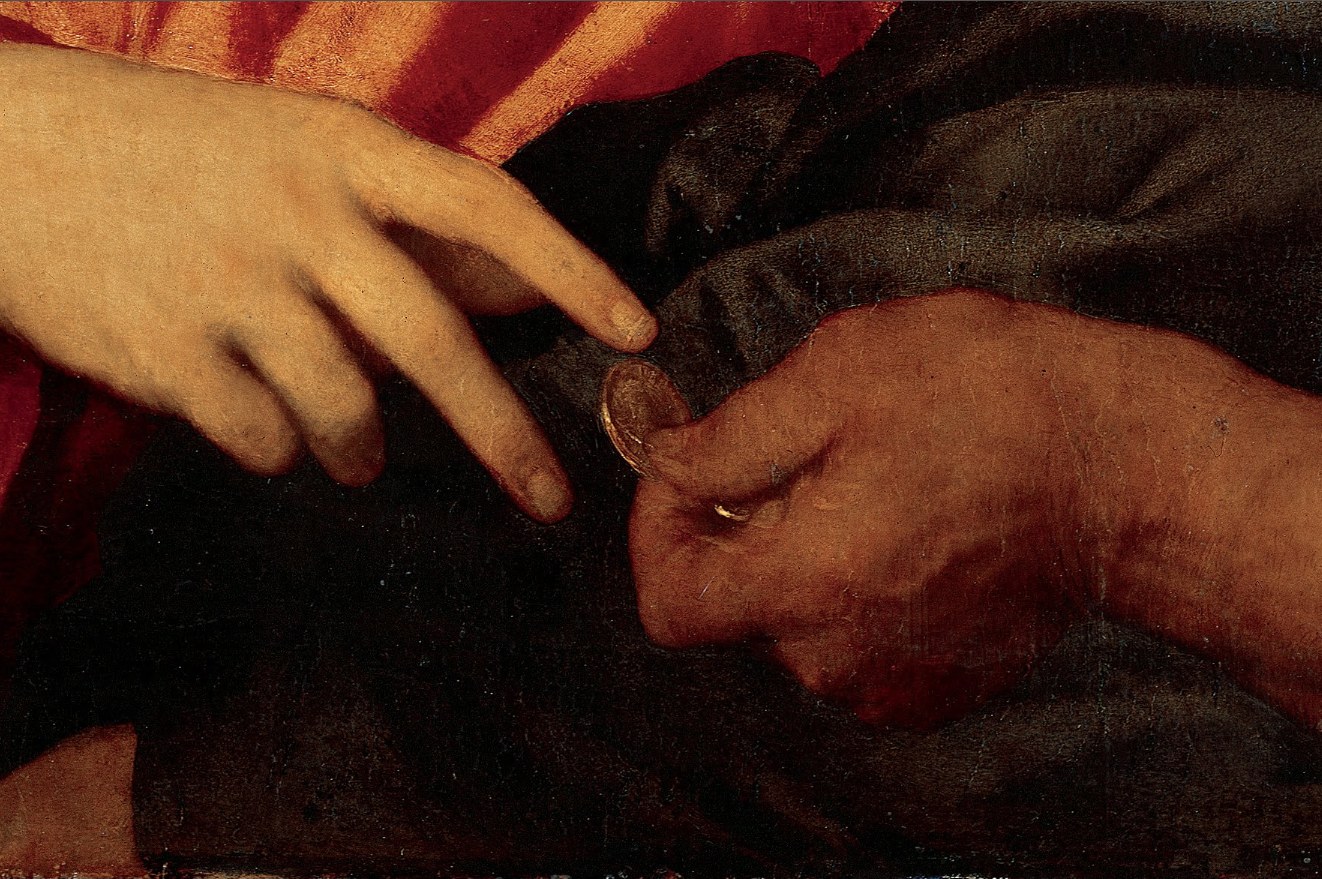
[the individual painter’s leaving an imprint upon form according to individual inner notions of anatomy is, by the way, occasionally confused with a painter’s deliberately wanting to characterize human characters by giving them a particularly individualized outer appearance (see for example Kultzen 1989, p. 376, referring to Carl Gustav Carus’ view of Titian; see also the picture on the right); this is not what Morelli meant or what the Morellian method is about, but the confusion might also be of use to differenciate three principles, from which form in representational art might as such result, and also from these principles conflicting: 1) the principle of a painter’s deliberately sticking to portrait likeness; 2) the principle of a painter’s deliberately wanting to characterize people, also by outer features like for example hands, and 3) the principle of a painter’s deliberately-unvoluntarily leaving an imprint upon human anatomy and form in general, according to inner notions of what the painter presently is wanting to represent]
12) What are the main theoretical arguments against the (unreflected or mechanical) application of the Morellian method?
Having looked at the actual working of connoisseurs belonging to the Morellian school, one might return to argue on a theoretical level, and to question if the world of art in fact is, as the Morellian method (here: its theoretical assumptions) describes it to be: full of formal regularities, like nature can be perceived as being full of formal analogies. But do the same laws that apply to nature also to art? Do formal regularities exist to justify a speaking of a painter externalizing, with some regularity, inner notions of anatomy that he imposes on the representing of people, even if the painter is committed to portrait likeness?
We might, again arguing on an empirical level, say that yes, in some cases this seems to be the case, and to work with such formal regularities might, given particular situations, also be of help. Which might also read as a pleading to only apply the method, if the field of possibilities has already been narrowed as much as possible. For the method, in the end and possibly, providing a help that makes a difference. But in general, one may, also on a theoretical level and although this has, up to now, rarely been done, question the theory. because, in simple words: the devil might not be in the detail but in the fuzziness (since distinct details, produced with enough regularity, do rarely seem to be existing; if they do exist at all, since a theoretical projecting of something expected to be there, might result with people seeing that something, or identifying something with that expected something, without its actually being there).
Another argument might question the systematically incomplete knowledge of the connoisseur: what is supposed to be a distinctive property might turn out to be something occuring in various other classes of objects too (without our presently knowing of it); or newly appearing objects belonging unquestionably to one class of objects might not show actually expected properties, thought to be characteristic for that particular class only (without our formerly knowing of such puzzling exceptions).

The devil might not be in the detail but in the fuzziness
13) What are the main practical problems that whoever is willing to adapt the Morellian approach will be facing?
If we understand by ›approach‹ the finding of hypotheses (by intuition or whatever other means) and the rigid testing of such hypotheses (this the Morellian method in its narrowest sense and use), we will face as practical problems on the one hand: the problem to find us good teachers, refining our general sense of art, and thereby our intuition (or finding appropriate methods to teach ourselves; also as to our historical knowledge etc.); and on the side of empirical testing we will find a wide range of problems associated with defining a problem at hand at all (compare question/answer No. 17); getting to know distinctive properties (compare question/answer No. 14), and above all: we will find problems of interpretation on all levels (for example the question if a property in a work at hand can be subsumed under a particular type of shape; compare question/answer 16).
On two sides, thus, we face problems that, at first glance, might not be in our focus, since a) intuition is often seen as not being part of the Morellian method at all (neither is historical knowledge); and b) a superficial view of the Morellian method might suggest that problems of interpretation might not occur at all, especially if a rhetoric of scientific objectivity does reign, meant also to overwhelm. But the practice – and the observation of Morelli’s and other connoisseurs’ working practices teaches otherwise.
Last but not least a Morellian connoisseur will face practical problems of weighing his evidence, his clues, his observations, that is: interpreting the validity and the value of whatever observations, in context of the results won by other methods (and by other connoisseurs); and he or she will also be facing, if complying to standard scientific practices (sadly not being standard in connoisseurship at all), the problem to make his insights comprehensibly known (which bears on problems of visual management; compare question/answer No. 30; and see our Cabinet V).
14) How does one get to know those characteristic or distinctive stylistic properties that the Morellians aspired to work with?
Contemporaries of Morelli had three possibilities: they could consult Morelli’s writings, or even ask him personally (since he was not in the habit of revealing ›everything‹ in print); but more corresponding with the ideals of scientific connoisseurship was the third possibility, and actually the one to be recommended for everyone wanting to commit to a culture of scientific connoisseurship: to evaluate stylistic regularities on one’s one, in comparing, and by comparative looking and, correspondingly, thinking about why certain regularities would seem to be significant (and to what degree significant).
And this because scientific connoisseurship, by principle, and even if it does take notice of the charismatic authority of well known and respected connoisseurs, does transmit the authority attributed by traditional connoisseurship mainly to charismatic connoisseurs, regarded as being the leading authorities, to the argument put forward by the scientific connoisseur or by whomever. The argument to be assessed by a scientific community, to be respected as being based on good reasons, or to be dismissed on the basis of other reasons.
The mere opinion, even if merely based on intuitive judgment, is not be regarded as an argument, but can also be respected as a hypothesis (or as an opinion), and as such be taken to protocol, as can be the mere tradition (unchallenged or not). But a culture of verifiability is committed to the ideal of everything made transparent and taken to protocol, including the single formal analogy, the single detail that is being considered as being a characteristic property (and thus being a clue as to possibly helping to determine authorship), and also – the only sticking to authorative opinion, as far such sticking does still play a role in scientific connoisseurship’s working with distinctive stylistic properties at all, the basic principle reigning therein being the principle of verifying and falsifying, as well as the other principle: critically looking and close observing on one’s own, and in one’s own responsibility.
15) Are these properties to be considered as being stable in a stereotypical sense?
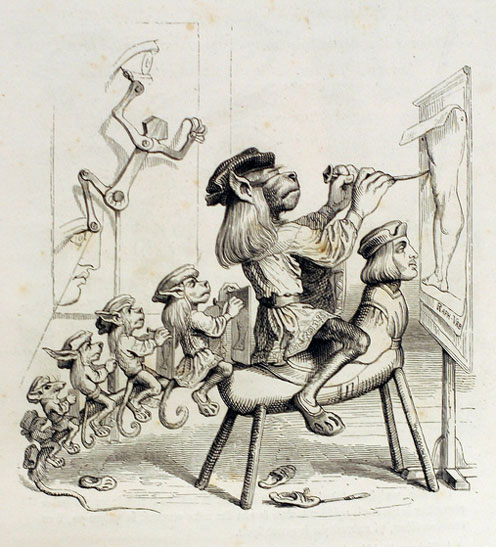
›In another study right beside it
a painter rode on a Raphaelesque hobby-horse
and traced nothing but legs and ears in old pictures.
He was a famous master too, since he carried a large
retinue of pupils with him.‹
·····························
»In einem anderen Atelier dicht daneben
ritt ein Maler auf einem raphaelischen Steckenpferde
und decalquirte Nichts als Beine und Ohren auf alten Bildern.
Er war ebenfalls ein berühmter Meister, denn er schleppte
einen langen Schweif von Schülern mit sich.«
(picture: molochronik.antville.org;
text: Grandville [1979], p. 94;
originally published, in French, in 1844)

As to certain artists like for example Raphael or Titian (and also Giovanni Bellini, see picture on the right), Morelli did assume or imply that characteristic properties could develop over time, since he distinguished various phases in these painters oeuvres, relating particular properties also to single phases only (compare for example Morelli 1890, p. 63f., as to Raphael, turning not only from the ›bourgeois‹ to the ›aristocratic‹ type of hand, as Morelli saw it – which may be interpreted as Raphael only finding his type of hand –, but not even to an exclusively rendering of that type of hand, since, also here and after Morelli has just declared that the basic type does remain the same (p. 62), he still seems to have reservations, saying »geradezu die normale geworden« (›having become virtually/almost the normal hand‹), which does leave much room for exeptions; compare also M/R, p. 455f. as to that matter; and compare also Morelli on properties characteristic for young Titian here, and compare, in this respect, also Morelli 1890, p. 58, for various periods in Titian’s oeuvre, and p. 306, for the color of a grey-yellow, being, in Morelli’s view, early Titian’s favourite color).
This problem of a developing over time of what seems to be characteristic at all within a certain ›chapter‹ of an artist’s oeuvre (at best, potentially, made visible by series of reproductions, that, however, Morelli did never provide) has also to be distinguished from another problem, which might be called the problem of variance of what seems to be characteristic within a certain ›chapter‹ within the overall development (which is: variability, accepted by Morelli as regards his subsuming actually realized shapes under one and the same characteristic property), and this problem is best dealt with visually, that is: in addressing the problem of visualization (see question/answer No. 16 below) in Morelli and beyond.
16) What problems are we facing, if we attempt to visualize the Morellian way of thinking?
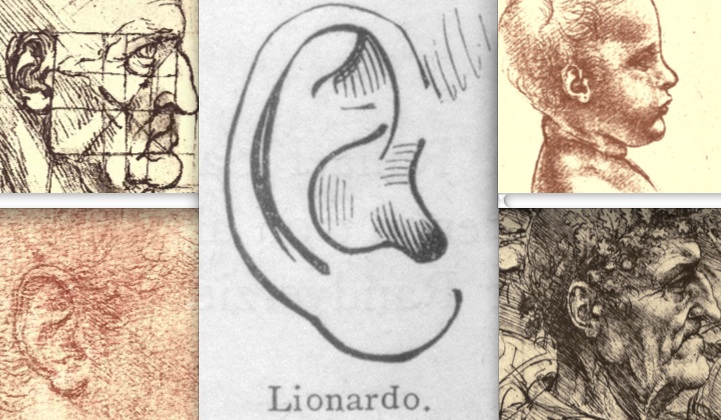
(Visualization: DS; drawing on Morelli 1880, p. 259 for the central picture (compare also p. 467; and compare GM to Jean Paul Richter, 29 September 1888, with Morelli devaluing the wood cut illustrations contained in Morelli 1880 as being of little worth), and drawing, secondly, on drawings by Leonardo, named in Jean Paul Richter 1885, column 733, referred to as unquestionably authentic reference material, showing the Leonardesque type of ear)
We might begin with saying that we face exactly the problems that also Giovanni Morelli did face at his day; but we face also the problem that art historical tradition and Morelli studies in particular, with few exceptions, did choose to rather leave the problem untouched. And not only this. In again and again reproducing the tables from Morelli’s books without questioning them at all, any problem of interpretation was also, as it were, veiled.
If there was indeed a problem of interpretation (and empirical verification). But if it is true that in the year of 2001 no clarity did prevail as to how the visualizations contained in Morelli’s book were to be interpreted at all (compare Vakkari 2001), the chapter opened here can only be referred to as a mess, a confusion, and not the least: a failure and a disgrace. A philosopher, namely Richard Wollheim (Wollheim 1974, p. 192), can be given credit to have raised the question at all, how the tables in Morelli’s books were to be interpreted, as it were, as Wollheim being the only pupil who did dare to raise his hand to ask questions. And the question, if these tables did not also cause damage, was raised, later, by German art historian Ulrich Pfisterer (Pfisterer 2007, p. 102).
We choose to open this chapter as a tripartite drama, and as a test case, as the example to demonstrate what happened in this very story, we choose the, in many instances, most extreme, most challenging test case, namely Leonardo da Vinci:
One) The plot of this drama opens with Giovanni Morelli observing stylistic regularities in works of art, for example in the oeuvre of Leonardo da Vinci. In namely comparing the rendering of ears in authentic works by Leonardo, Morelli believed to observe stylistic regularities that led him to speak of a ›type of ear‹, a characteristic type, being characteristic for Leonardo.
Morelli did speak in his books of this type of ear, using the notions of ›type‹ and of ›basic form‹, and he did also attempt to have visualized what he meant, that is: he had, for Morelli 1880 wood cuts made (in Lipsia, and probably after drawings or photographs; compare GM to Jean Paul Richter, 1 May 1880), to be inserted into Morelli 1880, and also a wood cut, meant to illustrate the Leonardesque type of ear (compare the central image above).
Two) But Morelli left the reader also with finding out on his own what the author meant with the notion of type at all. Since the notion of type can be understood in various ways. It can, for example, refer to a stereotype (referring to a shape rendered identical in every single case), or it can refer to a scheme that is not rendered identical in every single case, but with slighter differences or variations (a basic scheme can, thus be realized, in many slightly different phenotypes). But since Morelli, in his books, did use also the notion of ›basic form‹, and he did refer to the wood cut illustrations in his books as renderings of ›basic forms‹, one might come to the conclusion that what Morelli meant to visualize could not be a stereotypical form, since it would have made no sense to reproduce only basic structures, if it was about the rendering of a particular form in all its structures and substructures, in all its obvious features, but also in all its nuances. One would have chosen to give as precise an image as possible (preferably a photograph) of such an stereotypically produced type of ear.
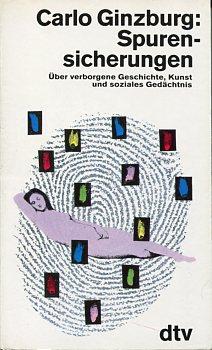
The use of the fingerprint metaphor corresponds
with the mainstream understanding of Morelli,
but can be referred to, as regards the Morellian
working with characteristic properties
and particularly with the notion of type,
as being potentially misleading, since this working
is not about stereotypical shapes at all,
as the motif of fingerprint, if taken literally
and not just as a symbol for any property at all, implies
(for a use of the metaphor see Wind 1985, p. 49;
picture above: zvab.com).
Three) But if Morelli was indeed understood so, remains questionable, since even in 2001 no clarity did prevail as to the question of interpretation, and a mainstream understanding of Morelli seems rather, even today, to assume that the Morellian method was about observing minor details, rendered stereotypically (or more or less stereotypically, whatever that would mean). And Morelli himself can also be blamed for not explaining to his readers, nor in any way to the wider public, what become public in 1960, when parts of the correspondence between Morelli and his pupil Jean Paul Richter were being published. From this exchange of letters, and also from yet unpublished letters, we learn several things: for example that Morelli felt rather uneasy with the tables of hands and ears contained in his books himself, particularly with those contained in Morelli 1880 (GM to Jean Paul Richter, 29 September 1888: »taugen wenig«; this letter yet unpublished), and based on wood cuts made in Lipsia (of which the Leonardesque ear, as our example, is taken). He wished to produce new illustrations and had the restorer Luigi Cavenaghi make drawings, which, however resulted in puzzling Morelli. Since he felt that Cavenaghi did not see, not render the characteristic forms as he, Morelli, did see them (and obviously could not render them himself). Thus Morelli asked his pupil Jean Paul Richter to produce such drawings, meant to be illustrations of characteristic properties to be included in Morelli 1890 etc. And in this relation Morelli revealed also that he wanted this renderings of hands and ears to be ›somewhat caricatured‹, for the layman to better understand these forms (GM to Jean Paul Richter, 5 February 1889 (M/R, p. 546): »etwas karikiert«; compare also GM to Jean Paul Richter, 14 July 1883 (M/R, p. 273: »schematisch dem Publikum vorgezeigt werden«)).
This new clue adds to the suspicion that what Morelli worked with and thus wanted to have illustrated and visualized were not stereotypes at all. Because it would not make sense at all to have a shape rendered ›somewhat caricatured‹, if it was about to render, as one might think, as precisely as possible a particular shape not to be mistaken and confused with other shapes (and it was certainly not about a deliberate misleading of the public).
To have a type rendered ›somewhat caricatured‹ did make only sense, if it was about an, to some degree exaggerated, demonstrating of what elements a type was, ideally, made of, if all the elements that the observation of stylistic regularities had found, were being found at the same time, and in one example, and also very distinctly being there. Although in reality this was never the case, and the type never did look exactly the same, as less as the phenotypes of a species do look the same, even if the specialist does subsume them under a common type.
What Morelli did work with were examples of ears on the one hand, and the mental construction of a type underlying, hypothetically, all these examples, which, however, were not identical reproductions of a stereotype at all, but rather diverse. And this diversity that Morelli did accept (a diversity that we have also visualized in Cabinet V, using Raphael as another test case), if visualized as a diversity, is actually far from having to do something with a stereotype. It is about single realizations or derivations of an implied type, which is nothing but a mental construction, produced by an observer, and as a mental construction not to be observed in reality. What Morelli does imply is that the Leonardesque type of ear, as he, Morelli, is rendering it, or has it rendered by draftsmen (who may have understood what Morelli did want or not), is equal or more or less equal to a scheme that Leonardo had in his mind, to have him, Leonardo, realize, if he was rendering ears, these ears following this scheme. Not stereotypically, but at least regularly, so that an observer can observe stylistic regularities that make him construct, and reconstruct a type. Which is, again, nothing but a mental construction. And it is not at all about finding stereotypical rendered details in works of art, but about the question if, what we do find as stylistic regularities in works of art, and in terms of morphological detail, can be interpreted as a realization of and thus traced back to a particular type. Being characteristic for a particular painter.
And in 1885 Morelli’s pupil Jean Paul Richter dismissed a work that had been attributed to Leonardo (compare Cabinet III) also on the basis that this work (see picture below on the right), in his view, did not show the Leonardesque type of ear. Morelli knew this, and did not contradict him, but congratulated to the article (Jean Paul Richter 1885; Richter, in this article names also examples, showing the Leonardesque type of ear; see visualization), and especially, if implicitly, to the snappy referring to the not being found of the Leonardesque type of ear (GM to Jean Paul Richter, 28 September 1885).


We conclude with saying that Morelli in several ways did fail: firstly in making his argument comprehensible to his readers; secondly in not revealing the problem of visualization that he faced and how he tried to solve it (it is unknown if the tables in Morelli 1890ff. actually resulted to his satisfaction; and it remained, for long, unknown, that Morelli had devaluated the tables that had been part of Morelli 1880); and thirdly and most important: in not making his argument, in general, verifiable and falsifiable, since he did not by principle show his readers precisely enough defined types (rather he did complain, audibly, about the difficulty to understandably describe these types; compare Cabinet V), and he did not juxtapose such types with those actual examples that he considered to be realizations of that type to everyone to compare, to accept or to dismiss.
But on the other hand Morelli did yet imply that what one could do was naturally exactly this: to juxtapose constructed types (also showing their being nothing but mere constructions) with reproductions of real examples. And if he did not himself, for example, did present a table meant to illustrate how, in his view, the Raphaelesque type of ear did look like, he did, at least, choose to point to examples that, again in his view, did show the Raphaelesque type of ear (see again Cabinet V). The diversity of those ears, might be, at first glance, shocking (all the more so if one is used to think of Morelli working with stereotypes), but it is the juxtaposing of mental constructions and abstractions (i.e. idealizations and combinations of elements that make a type, with leaving away accidental elements, found in real examples) and actually realized examples that, in the end, make the Morellian approach verifiable and falsifiable at all. And this is, verifiability and falsifiability is, in a modern understanding, what science is all about. And what scientific connoisseurship was meant to be all about.
[to abstract a type from many seen and in minor details diverse examples does require the discerning of accidental and typical elements; if someone else is asked to draw a type for someone having an inner notion of that type, it is not surprising at all, if the result is little convincing to the one having the inner notion, because the draftsman might not necessarily have seen the very same examples, nor have made the same dividing of accidental and typical elements; it does seem that Morelli – at least until his being puzzled – did underestimate this difficulty, and it may also be that his draftsmen drew more or less exclusively on single examples, perhaps only being told which elements to ›exaggerate‹ as being the typical elements, to be shown in an abstracted scheme of the type]
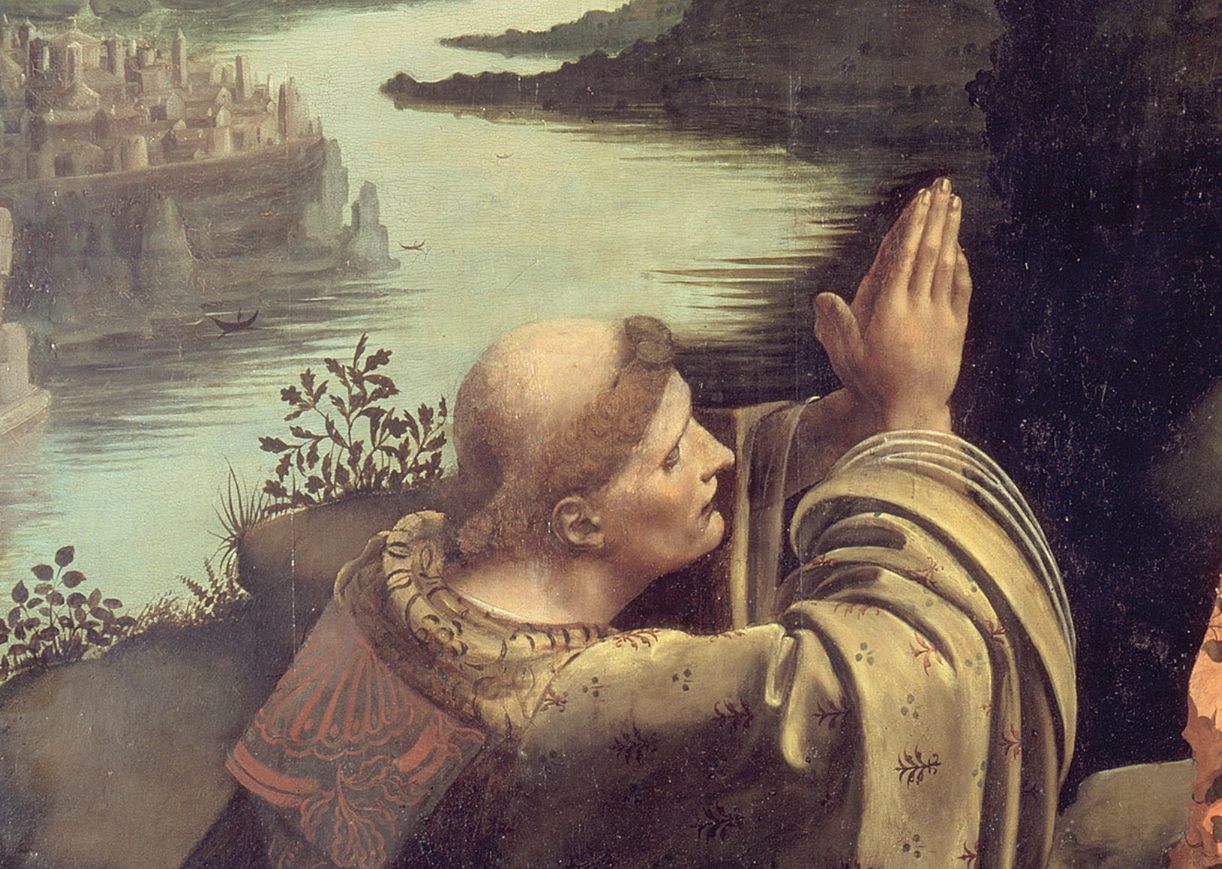
(Source: Google Art Project)
17) What are the typical situations in which the Morellian method can theoretically (and reasonably) be applied?
As said in Cabinet I the Morellian method was meant to be an answer to a particular and rather specific problem or situation, that is: the task to discern two intimately related artist styles. On a more abstract level one might say that it was meant to be a testing of two alternative hypotheses, given one work at hand, that intuitively could not be attributed, with certainty, to the one or the other author. But intuition, at least, had been able to narrow the field, so that only two hypotheses had remained to be in question. And one does see, if describing the problem on a more theoretical level, that hypotheses, here: two alternative hypotheses, had to be found at first (by intuition; empathy; feel), which were to be tested empirically. This does also show that the Morellian method can, naturally, be defined as encompassing both intuition and testing, or only the rigid empirical testing for sets of properties.
As also said before, extremely high hopes were once being associated with the Morellian method, and this probably also due to a particular fuzziness that also shows if we keep on describing the attributional process on a more theoretical level: since one might also think that the Morellian method was meant not only to test hypotheses, a single hypothesis or more hypotheses, but also or even primarily to find such hypotheses at all. And this would mean that intuition would have been totally excluded from the process, since also the finding of hypotheses would result only from a checking for sets of properties.
Let’s, in the following, discuss briefly these two ways of thinking the Morellian method, and we choose to discuss the latter way first:
Since we will easily see that, for one, this latter way of thinking was not Morelli’s way of thinking the Morellian method, since he did not at all exclude intuition from the process (compare question/answer No. 1 and 19; and compare also Cabinet IV with the essay on Max J. Friedländer). And secondly: one does easily see that it actually does make little sense to think the Morellian way in practice as a replacing of intuitive thinking with only checking for properties. Since this would only make sense if a totality of all properties, being characteristic for any painter, would be known. That is: if a system would exist that would allow to classify any given work according to that rigidly organized system.
Which would also mean that properties would be perfectly distinguishable at any given moment in time and everywhere. And this, as it were, ideal world, was certainly not the world that Giovanni Morelli or any other connoisseur of art, encountered in practice ever.
Although also in their world the mere fancy that it might be that easy, once the Morellian method had been invented, to proceed according to that, as we may call it, three step fancy: to look at a picture, to identify a distinctive property, and to solve the problem by knowing to which painter the property does belong (according to the theoretical principle of ex ungue leonem).
But a brief look into our Cabinet III with expertises by Morelli does show that he worked completely differently. And also his more theoretical statements show that he thought the application of the Morellian method as a testing of hypotheses, often in numerous attempts and in a searching way, and not as a routine to find hypotheses at all, hypotheses that, in an ideal world, would loose their status of being hypotheses immediately, turning to be hardened facts immediately, given that a classificatory system would exist and also work perfecly (and we may call also the idea of such a system existing the underlying assumption of the ex ungue leonem principle that also Morelli knew, but at least twice, if implicitly, contradicted: Morelli 1893, p. 318 [reprint of Morelli 1882]: ›not solely by the ear‹; Morelli 1891, p. 4, note 1: ›control our general impression‹; but compare also question/answer 16 with the more ambiguous dealing of Morelli and Jean Paul Richter with the Leonardesque type of ear, at least in one case: the Pala Grifi, which is also one of our examples in Cabinet III).
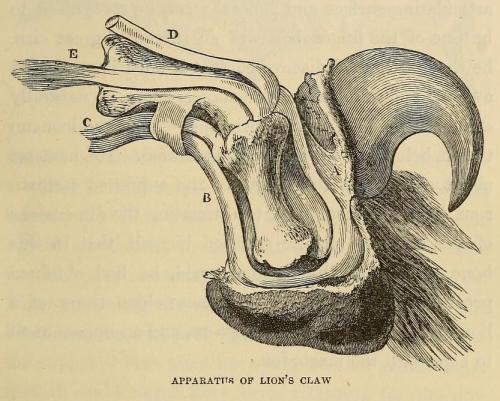
Ex ungue leonem – ›to tell the lion by its claw‹:
Morelli probably did not know the 1825 poem Ex ungue leonem by Alexander Pushkin,
of which he had given a free translation in chapter Visual Apprenticeship I (see also below),
but he might have known the ancient saying for example from Lucian,
who has it discussed in his satirical dialogue Hermotimus,
being dedicated to the subject of philosophical sects (see Lukian 1970, pp. 287ff.;
for Morelli referring generally to Lucian, an author that he did certainly much appreciate,
see GM to Jean Paul Richter, 22 June 1881; and for his typically sceptical referring
to ex ungue leonem see Morelli 1893, p. 41; compare also Morelli 1836
(motto; here: ›ex ungui leonem‹, paraphrased, in replacing the claw with a snail shell,
and the lion with the snail, which turns the metaphor into an image of
introversion) (picture: pixgood.com))
But such a system did not exist at all; knowledge was imperfect, fragmentary, and constantly perceived as being fragmentary, and also properties were not perfectly distinguishable at all. Reality was and is all but perfect, although reality, naturally can be seen against a hypothetical ideal reality, resulting from suggestions (as for example the ex ungue leonem principle), and described according to a theory that, thus, we would have to describe as being mere ideology of art connoisseurship: in other words: neither practice does allow us to tell the lion merely from the claw, nor did Morelli wish to tell the painter merely by the ear (compare above; he remained simply too cautious; knowing however that his approach was indeed suggestive).
But if we come back to the first way of thinking the Morellian method – as an empirical practice to merely test alternative hypotheses (or single hypotheses, one after another), hypotheses that we have won by intuition or by any other mean, we can also discern various standard situations that the Morellian connoisseur might be confronted with: namely three standard situations that show also that the testing for specific properties might not be the ideal answer to any of these three standard situations.
All three situations do confront the Morellian connoisseur with the problem of two alternative hypotheses (although, of course, one might also expand the number of hypotheses):
The Morellian connoisseur might be a) confronted with the problem to discern two known names, as for example Raphael and Perugino (Raphael or Perugino);
or b) with the problem to discern Raphael from an imitator, pupil, forger that we might know;
and c) with the problem to discern Raphael from an imitator, pupil or forger that we don’t know at all.
Situation a) will confront the connoisseur with the task to test for known properties on two sides (as far as properties are known); as does situation b), but the number of testing routines will increase with the number of possible known imitators, pupils or forgers; and as to situation c) – we realize that it is not possible at all to test the hypothesis of the unknown imitator, pupil or forger appropriately, since no known properties are at hand at all (while it still remains possible to test for Raphaelesque properties).
And we see that as to the situation that he have called a) (it is naturally the standard Morellian situation) the application of the Morellian method makes the most sense, since the field of possibilities has already been narrowed, and testing for known properties seems possible and reasonable; while the testing does become more questionable as number of possibilities do increase (with us asking for other means to again narrow the field, to allow, more reasonably, a more specific testing); and as to situation c) we would rather have to change our strategy, since all that seems left to do would be a testing of the Raphael hypothesis, while, here, an alternative hypothesis yet does exist, but, lack of known properties, cannot be tested. And in this particular case c) it would make sense not merely to ask for specific and distinctive properties, but for any properties at all. In brief: it would make sense to turn from Morelli’s method rather to the approach of Maurits M. van Dantzig, who recommended the working with large lists of properties (all still belonging to the known name, the one hypothesis, in our standard case: Raphael), because by going through such lists we may realize that an imitator, pupil, forger was not able to imitate Raphael on all levels, resulting, possibly, with our being able to harden the hypothesis of an imitator, pupil or forger being the author of our work at hand.
ALEXANDER PUSHKIN, EX UNGUE LEONEM (1826):
The other day it was that I penned down some verses
That unsigned I chose to edit in the following.
The shabby critic which did penetrate them pettifoggingly
And left, like I did, then unsigned his scrawl –
To him his follies were of little use,
Not more than ’twas my secrecy to me.
For to recognize my lion’s claw was simple here
And I, on my part, could appreciate a donkey’s ear.
(very free translation/paraphrase: DS;
after Puschkin [1985], p. 210;
with this poem the Russian poet,
self-ironically, was also
alluding to his notoriously long and
– as we may say here:
very un-Raphaelesquely long –
own fingernails; compare also
chapter Visual Apprenticeship III) 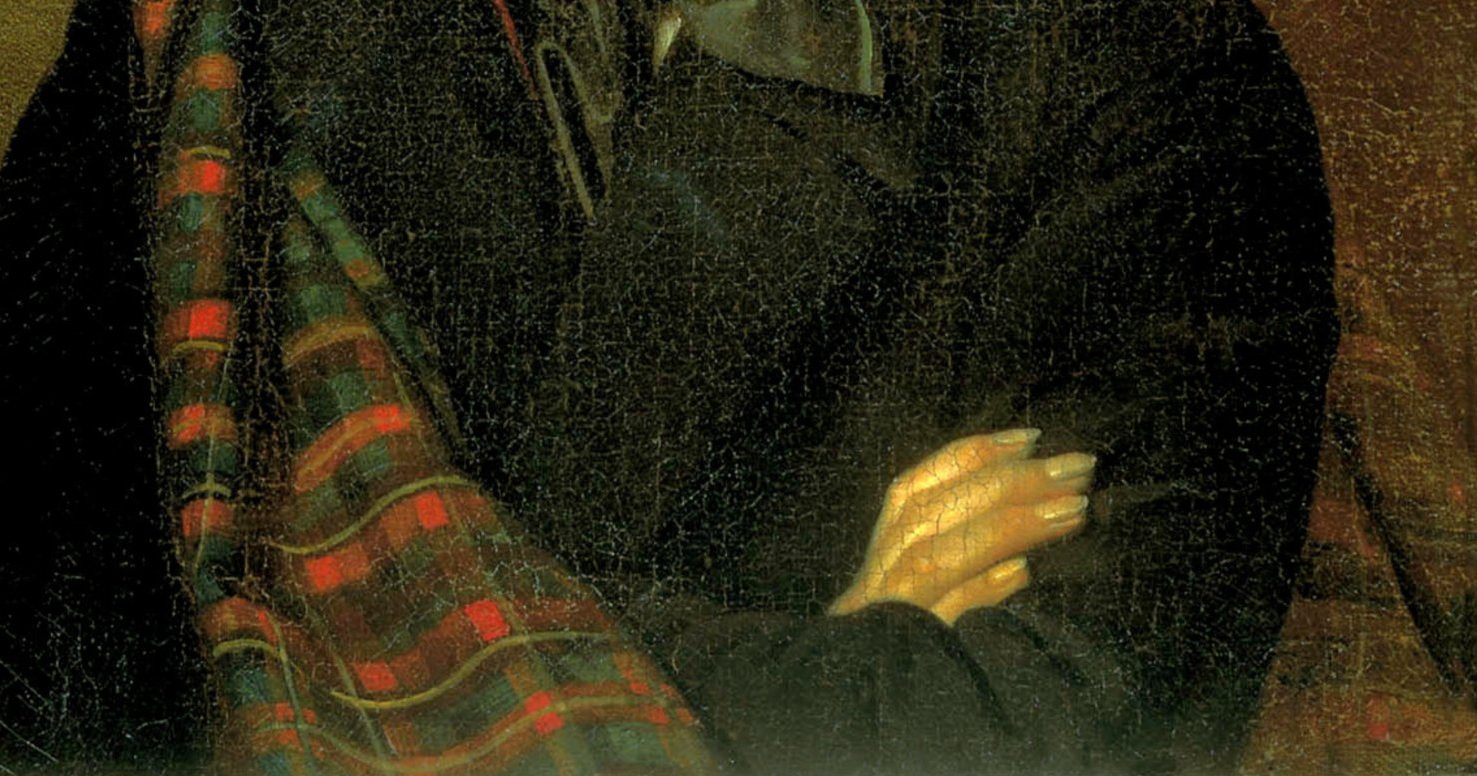
In sum: we realize that the Morellian method does seem fit specifically to address the specific Morellian situation, in its particular focussing on distinctive properties, but the discussing of various standard situations does also show its not being the one single answer to any given situation, but, as Morelli did again himself say or imply, one aid. While the variety of problems a Morellian connoisseur might be confronted with does demand a flexible adjusting of his or her strategies, which, as we also have shown here, might be focus on specific, distinctive, and ideally: unique properties, or at sets, that is: lists of properties, lists as expanded as possible.
18) In what relation to other approaches do he have to think and to see the Morellian approach?
Since the Morellian approach is to bee seen as a version of stylistic criticism, it is, like any other form of stylistic criticism (including those that also take more intellectual qualities of works of art into account), working with formal analogies, and hence in need of reference material, to base formal analogies on whatever kind of basis.
To avoid vicious circle of self-confirmation such reference works may not have been authenticated by applying the Morellian method, and hence the application of the Morellian tests and controls is dependent of other authentication methods (primarily historical research; the documentary situation).
And this is a more logical way of stating that the Morellian method cannot be regarded and is not a method complete in itself that, even in theory, could replace other methods all by itself.
Other tools do exist next to it, and no single reason does exist to argue that such methods that are good enough to base a working with the Morellian method on it, should not, by principle, be applied in parallel or in combination with the Morellian method.
Which is, in spite of notorious ideological conflict, the picture one does also get, if investigating into the actual applying of connoisseurial tools within the Morellian circle: A general pragmaticism did reign, flexible in its adapting to whatever kind of situation, and also and as a result: an eclecticism that is to decribed as an eclecticism as colorful as to include a Giovanni Morelli, sometimes being falsly imagined as the embodiment of a dogmatic working with the marginal stylistic detail only, conducting archival research (see Kultzen 1989, p. 379), having others do research for him, and praising the (relative) worth of the historical document (see Seybold 2014a, p. 100, with notes 81 and 82).
19) How did Giovanni Morelli feel about or think of intuition?


(Cover: Wikipedia)
The Morellian method and intuition
have often been seen – but falsely –
in opposition (see text); and if Federico Zeri
is said to have intuitively recognized the
Getty Kouros as a forgery –
do read carefully what Malcolm Gladwell says
in Blink, his 2005 his bestseller on intuition
(Gladwell 2006, p. 5): since what seems
to have happened in »those first two seconds«
of Zeri’s intuitive evaluation, is that the
Italian connoisseur’s attention was drawn
to the Kouros’ fingernails. And these
fingernails did seem »wrong« to Zeri – which
might be interpreted as nothing
but an intuitive Morellian test…
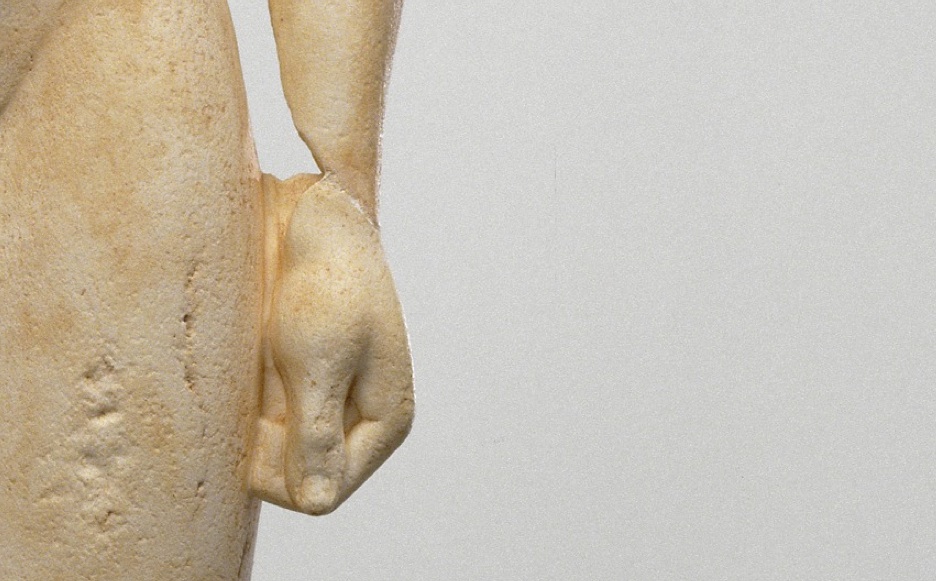
(Picture: getty.edu; detail)
Morelli did speak much more frequently of the ›Totaleindruck‹ (›general impression‹) than of intuition; and it is only one passage (quoted below; from Morelli 1890, p. 26) that makes clear that he thinks of the general impression and of intuition as synonyms (speaking of two aids, the written document on the one side, and the ›general impression‹ or intuition on the other).
His basic scheme of thinking is clear: innate being appreciative of art (being born with ›Kunstsinn‹) may, by constant exercising, develop into intuition (thought as being a capacity, a skill, helping to distinguish schools of painting intuitively, that is, rather by immediate knowing without thinking (and explaining or further discussing)).
And he does admit that in his earlier days, his own judgment, being also self-opinionated, rested (at around 1860) exclusively on intuition. But uncertainty, and also lack of consensus, in the following, led him to think about an approach to attributional studies that might lead to a higher degree of certainty than it is attainable by using intuitive judgment alone.
Since it is well known that Morelli, thus, recommended a rigid study of form, the searching for the distinctive, characteristic property, one might run into danger of thinking that Morelli now recommended intuitive judgment to be dismissed as such, and be replaced by Morellian tests and controls.
But this is in more than one sense wrong: The aid that Morelli did recommend, the testing, was meant to control the general impression; and it would seem illogical to control something that actually had been dismissed as being not valid, not helpful at all. Secondly: Morelli explicitly denied that attribution should rest on Morellian tests alone, which, again, implicitly suggests that every tool that might be of help should also be used; and thirdly: this does also relativize the weight, the importance given to an evident formal analogy (or the lacking thereof): as being just another clue, maybe an important one (depending on the circumstances), but not one that should decide over an attribution all by itself.
What Morelli did actually dismiss was to think of intuition as the ideal way, the royal road, as he did dismiss his own method as being such a road (and maybe to the puzzlement of some of his followers).
In sum: Intuition and Morellian method (or the rigid study of form) go well together, are to be seen as representing two sides of a coin; and only the exclusive use of either tool was alone being dismissed by Morelli.
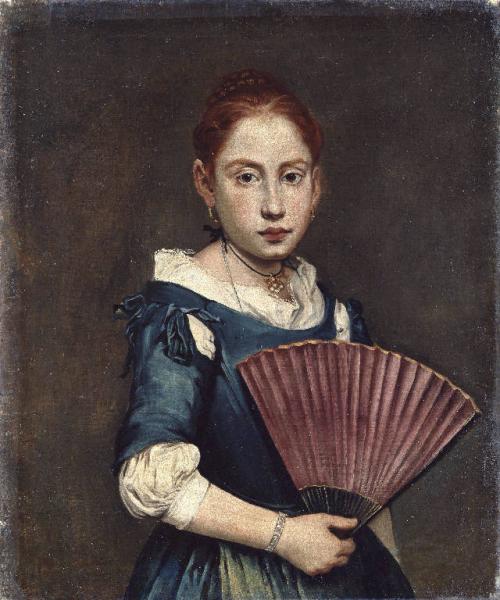
In Morelli 1890, p. 419f., the author has a woman say
that women tend to judge art mostly by their ›feel‹; upon which Morelli,
that is, his persona, does answer by making a gallant compliment
according to which educated women do judge art often much better
than starched art scholars…
Ritratto di fanciulla con ventaglio by Giacomo Ceruti detto Pitocchetto,
from Morelli’s own collection (picture: lombardiabeniculturali.it)
Intuition, as it appears in that we do observe Morelli’s connoisseurial practices, Morelli did also practically accept as a heuristic tool that may lead to hypotheses that, subsequently have to be hardened, tested and discussed (compare the chapter Expertises by Morelli, especially the third example). And this again is a dismissing of the mystification of the genius of the intuitive eye that denies to explain, have tested or challenged any results won by the ›mere eye‹ and guaranteed only by the mere authority that to the eye might be attributed (by an audience or by the connoisseur himself).
Morelli’s last word as to intuition, and in some sense his last word as to method as such (to be found in Morelli 1893, p. 258), even seems to admit that much more than one would actually expect (if a valid and sometimes even seemingly superior method had put forward) in the end does still rest on intuition, because, as Morelli says here (see quote below) intuition (or these contributions to our judgment that are won by intuition) do not allow themselves to be controlled (and in some cases there might be found nothing to control mere intuition; which however would imply that the connoisseur is asked to state also this very clearly).
And this last statement as to intuition might be interpreted as another self-relativizing of sceptical Morelli, that, maybe only valid as to the very moment in time the passage was written, seems to dismiss everything he had said earlier as to the validity and usefulness of the Morellian tests and controls as such.

The intuitive practice of connoisseurs (like Wilhelm Bode)
did remind German art historian Carl Justi (compare below, No. 22) of playing the game of Morra
Morelli 1890, p. 23f. [the old Italian/Morelli answering to Lermolieff]: »Ich will nun keineswegs in Abrede stellen, dass in sehr vielen Fällen einem feinen und sehr geübten Auge der Totaleindruck oder die Intuition allerdings allein hinreiche, um den Meister eines Kunstwerkes zu errathen – allein, wie bei uns ein Sprichwort sagt: ›l’apparenza inganna‹, d.h. der Schein hat uns oft zum besten.«
(p. 25) »[…] der angeborene Kunstsinn, der durch Uebung zur Intuition wird, […].«
(p. 25f.) »Und so tappte auch ich jahrelang, mich auf die blosse Intuition verlassend, im Nebel herum, und gerieth jedesmal in Harnisch, wenn ich Leute fand, die nicht geneigt waren, meine von mir für unfehlbar gehaltene Meinung zu theilen; – es hängt ja unser Urtheil viel mehr von unserm Willen als von unserm Verstand ab! Müde aller dieser Irrfahrten, fing ich dann an, die Bilder mir genauer anzusehen und einen Meister mit dem andern zu vergleichen, und endlich glaube ich einen Weg gefunden zu haben, der richtig verfolgt, uns aus dem Nebel heraus in eine reinere Luft bringen dürfte.«
(p. 26): »[…] jener zwei Hülfsmittel, d.h. der Intuition oder des sogenannten Totaleindrucks und des schriftlichen Documents, […].«
Morelli 1893, p. 258 (as yet untranslated): »Bei dergleichen Untersuchungen kann man freilich nicht alles beweisen; ein gut Theil unserer Schlussfolgerungen bleibt der Intuition überlassen und diese lässt sich doch nicht controliren. Somit dürfen wir auch nicht erwarten, dass alle unter unsern Lesern unsern Schlüssen zustimmend folgen werden; gar viele unter ihnen dürften vielleicht eher der Meinung meiner Gegner in diesem oder jenen Punkte sich anschliessen.
Bei solchen Studien ist die Hauptsache doch immer die, dass unser Kunstsinn und unser Auge geschärft wird und dass wir dadurch dem Verständniss [sic] der grossen Künstler immer näher treten.«
[compare also GM to Jean Paul Richter, 8 March 1889 (M/R, p. 549): »Unser Freund [Gustavo Frizzoni] hat einen sehr feinen Kunstsinn, allein ihm mangelt die Intuitionsgabe und der Sinn für die Formen, und es gehört immer geraume Zeit dazu, bis er diese letzteren klar erkennt. Es ist doch ein ganz eigenes Ding um das Sehen!«]
20) Did Giovanni Morelli have an eye for the beginnings of technical art history?
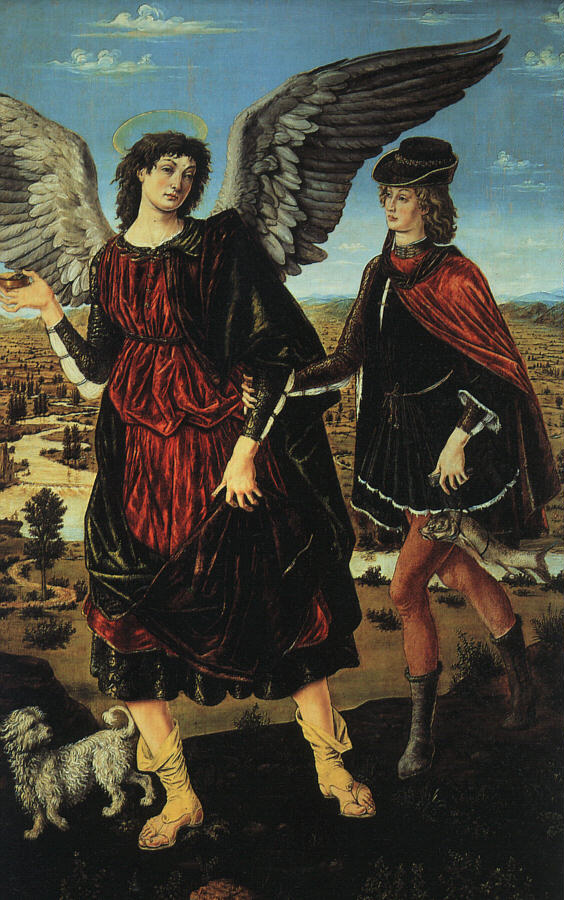
…in works coming from the Pollaiolo brother’s workshop?
Morelli did take notice when reading Wilhelm Bode in 1887 (namely Bode 1887; see GM to Jean Paul Richter, 2 November 1887), that Bode drew not only on stylistic particularities, if attributing a work of art, but also on painterly technique and material particularities: in this case on a particular kind of binder material called »Sandarakfirnis(s)«, that according to Bode was – apparently – applied by the workshop of the Pollaiolo brothers only (Bode 1887, p. 119), which would result with that binding material being an exclusively distinctive (unique) property like, on a different level, a Morellian stylistic property (was or could be seen, at least on a theoretical level, being an exclusively distinctive property, that was to be found in one particular class of objects only).
Morelli took position concerning the issue of the binder material (in Morelli 1890, p. 108f., note 1), at the same time refuting Bode’s argument in the specific case (an argument that Morelli, apparently, had also misunderstood, or at least has it distorted here, since Bode had not drawn on the ›being found‹ of the binder in works by Verrocchio, but on the lacking, and on the being there only in works coming from the Pollaiolo workshop), but at the same time, implicitly, accepting the arguing on a level of material detail as such and thus expanding his working with properties also to material properties, if – perhaps – rather contre cœur, being led to do so, here, by his declared antagonist (compare also Morelli 1890, p. 416 [with a caricature of Bode and his ›technological method‹]).
[on occasion of the »Holbein-Congress« at Dresden in 1871, and as Morelli probably knew very well, reflections upon binder materials and use of color (also as to the use of color materials) had played a role already in the »Holbein-Streit« (compare Bayersdorfer 1872, p. 19 and 23ff.)]

Questions and Answers
C) HISTORICAL SIGNIFICANCE AND (INSPIRATIONAL) POTENTIAL AS FOR TODAY
21) Can we assess the historical importance (or even the actual effectiveness) of the Morellian method, or does the attempt to evaluate this actual effectiveness actually make little sense?
On a very general level one may say that the Morellian method produced (occasionally much exaggerated) hopes as well as (occasionally much exaggerated fears) as to its (either confirming or excluding) efficiency. And without question it did make many people think and to take a closer look (compare Cabinet IV, for various intellectual perspectives it did inspire).
But it did also produce phenomena that might be subsumed under the label of ideology. These phenomena one might perceive as being equally important for the historian of connoisseurship to study as the actual achievements that, generally, are associated with the Morellian method.
A more specific assessment of the method itself, however, does meet various obstacles. We have, as on many other occasions, to speak of a specific failure of the Morellian school: it did not provide us with a sufficient culture of verifiability, and it actually cannot be up to posterity to provide it.
Said this, one may proceed to attempt to provide it anyway, but again we do meet various obstacles. Firstly, before even we may think of a general assessment, we would have to find a single case that would allow us to isolate the Morellian argument (the single working with a single formal analogy), and we would have to test, that is, attempt to falsify the single excluding or confirming argument (for example by showing that the presupposed stylistic regularity in fact does not exist in a particular painters oeuvre or in a work at hand), and to built an assessment from there, again proceeding from the single argument to the context of the single (now verified or falsified) argument, to the single case in its entireness, and from the single case to many cases, to assess if the working of the Morellian method did produce results that do stand (by being plausible in itself, but also against modern testing methods and any other methods of authenticating). In the single case, in clusters of cases, particular areas, or in general.
No one has ever done this testing, nor have the Morellians provided us, except in a very fragmentary way, with the necessary informations to do it for them. The method was, then, called also an ›experimental method‹, but to repeat the experiments, the testing of hypotheses won by intuition, by looking at formal details, it is necessary to know more than the Morellians, in general, do let us know (compare, also, Morelli 1891, p. 113, for theatrically not-revealing all his reasons, but only saying that he yet had other reasons, which might be true, in this particular case, or not).
We may, frustrately, proceed to scrutinize the Morellian method on a theoretical level, but this has already been done by at least two philosophers (Wollheim 1974 and John H. Brown 2008; compare again Cabinet IV) and even if we do find no flaws, one would want to know if the empirical world is, in general or at least in single cases, as the Morellian theory suggests it to be.
Last but not least, we may try to take a closer look at various aspects, at chosen test cases (explicit expertises like in Cabinet III) and at theoretical arguments as well as at practical problems. This is what we do here, in Cabinet II, as well as in the Cabinets III and V, not the least because we also do believe that a mere comparing between then- and today-attributions does make little sense as to a wanting to assess the sufficiency of the Morellian method, since for one: then-attribution did not rest solely on Morellian arguments (an isolating remains necessary); and secondly: today-attributions – given that consensus does exist at all – only do represent the presently prevailing opinion, and it is often as hard as with the Morellian school to know exactly on what bases such opinions do rest.
We may finish with saying: if the Morellian method would have seemed to be that efficient to someone actually attempting to work with it (like for example Jean Paul Richter or Bernard Berenson) – why didn’t they provide us with the necessary tools and informations to verify the (allegedly beating) arguments won by using that method, and in every single case and systematically?
And this rather systematical not-providing us with the actual arguments may also be interpreted as a (silent) testing of the working with the method, resulting with the evaluation that the method is/was – at best, but still – of relative use: it made people think and to take a closer look. And that it was of only relative use, in that it, given particular situations, could provide a certain help, already Morelli himself had said. Dulling the occasionally much exaggerated expectations as to the efficiency of the method.
[in recent times only the German art historian and Leonardo da Vinci-expert Frank Zöllner has uttered an opinion as to the practicability of the Morellian approach, stating that, particularly as far as Italian art of the 15th century is concerned, it would work fairly well (see Zöllner 2009, p. 56: »Tatsächlich funktioniert das ›Morellisieren‹ besonders für die italienische Kunst des 15. Jahrhunderts recht gut.«) (and compare also Zöllner 2013, p. 421, for the author actually working with what one may call Morellian marks, including fingernails, in Leonardo and in works (only recently) attributed to Leonardo); compare also Zeri 1989, p. 112f. for a positive view on working with Morellian detail]
22) Does it make sense to consider Wilhelm von Bode only as a declared opponent of Giovanni Morelli and of the application of his method?
If it is true what the highly sensitive Max J. Friedländer said in his memoirs (Friedländer 1967, p. 13), namely that Wilhelm Bode knew only black and white (and no shades of grey), and that he did not look at things from more than one side, then it must also be true that Giovanni Morelli must have had an enormous impact on Bode, must have caused an enormous irritation for Bode. Since Bode turned to Morelli, tried to adapt ideas of Morelli, even tried to become a friend of Morelli, and not at all remained on the position intended for him as The Antagonist.
And this, without any doubt, with Morelli never ever turning to Bode, whom he liked to refer to as a ›Kunstkorporal‹ or a ›Kunst-Bismarck‹ (see for example GM to Jean Paul Richter, 1 November 1887; Friedländer does by the way confirm that Bode appeared like a soldier, albeit without robustness; p. 12). And most of all: with Morelli never wanting to win Bode as a friend. The latter, in one word, seemed to match his enemy image too perfectly (a lack of method, of taste, and this combined with Teutonic arrogance, at least seen from Morelli’s point of view). And it was Morelli who intended the role of The Antagonist for Bode, and, most revealingly, also at the very moment he did realize that Bode actually attempted to adapt the Morellian approach and to work with it (see again GM to Jean Paul Richter, 1 November 1887: »die Lermolieff’sche Methode, die er, als Geistgegner des Lermolieff, bei seinen Urteilen anwendet«).
But this does not mean that these two men might not have had something in common. Not the irony, though, of which only Morelli did dispose of, nor the scepticism, of which only Morelli did dispose of, but a certain pragmatism, if it came down to connoisseurial affairs. And especially as to this matters, in spite of the cliché image of two irreconcilable opponents, these two men had much more in common than it is commonly acknowledged. But one has to take into consideration the evolution: Bode approached Morelli, then turned, rather frustratedly, away from him (and especially from his ›school‹), to symbolically approach him again (to some degree) in later years. This was not about black and white, but rather about nuances. And not least: about Morelli, despite of his irony, tending to paint, as to Bode and the Berliners, things in black and white.

Rudolf Friedrich August Henneberg,
Wilhelm Bode als Jäger (1868)
(source: haum.info/dib)
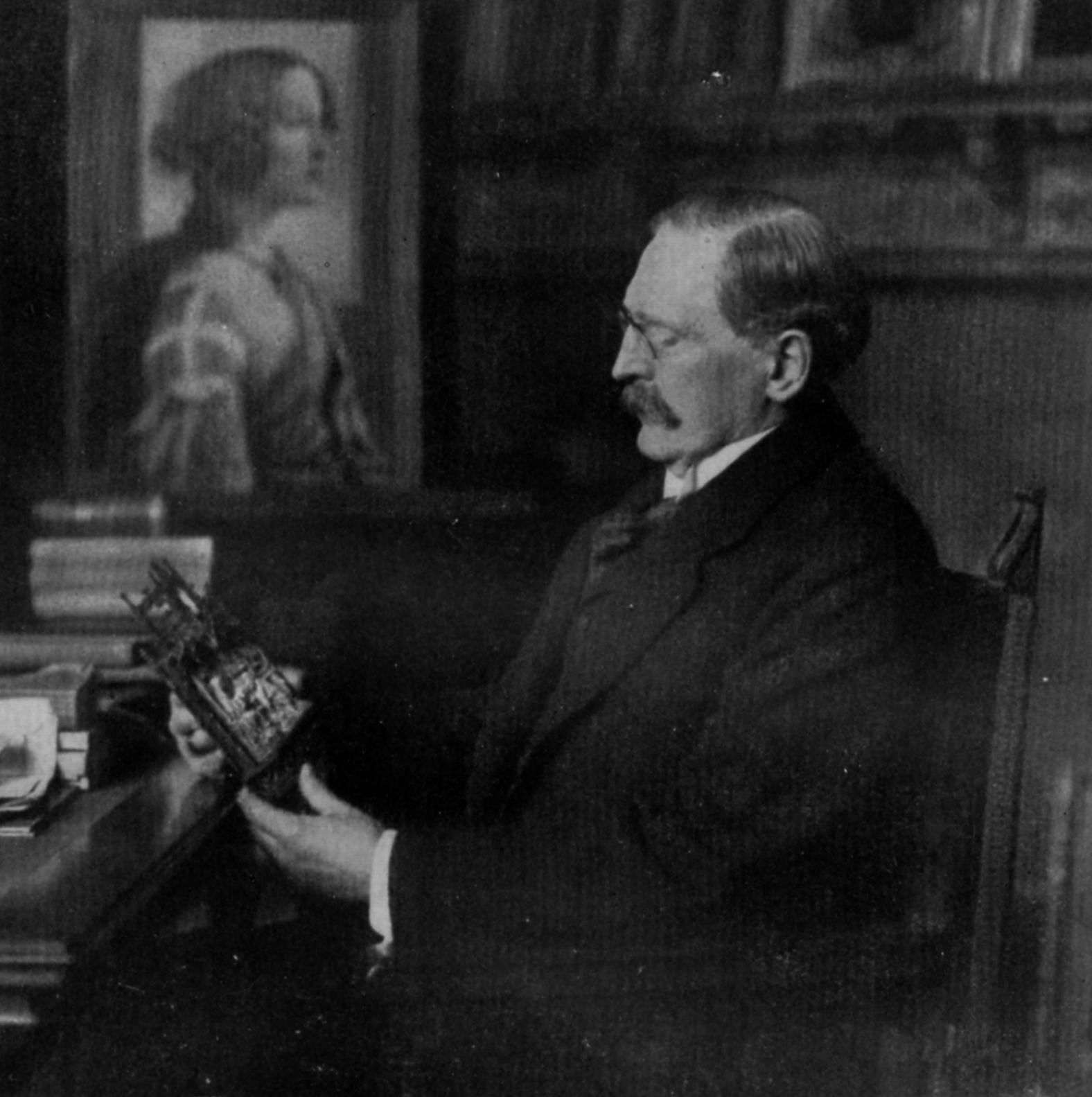
(Picture: zeno.org) 
Morelli: Sodoma; Bode: Jan van Scorel
(compare for example GM to Jean Paul Richter, 19 February 1889;
and for today views see Erche 2004) 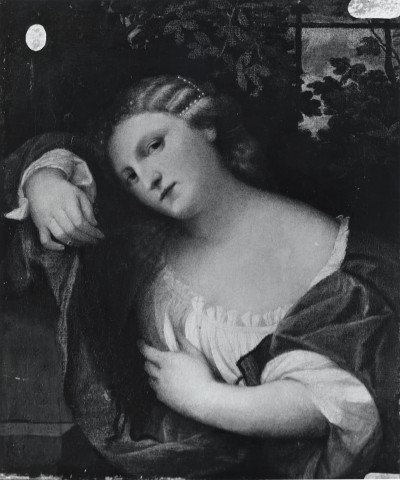
(Picture: fondazionezeri.unibo.it)
»[…] unter andern ein ganz vorzügliches,
dem Lorenzo Lotto sehr nahe stehendes
Frauenporträt von Palma vecchio, Nr. 197a […]«
(Morelli 1893, p. 89; picture above)
»Ein zweites Frauenbildniss [sic] wurde im J. 1884
von Dr. Bode in London erworben (Nr. 197B [below]).
Nun vergleiche man dieses süssliche Weib
mit der von Liebe träumenden obenerwähnten Frau;
wie fliessend und durchsichtig ist nicht hier
die Pinselführung des Palma, wie durchsichtig
das Weisszeug, wie lebensvoll der Blick;
man vergleiche auch, wie hier die Lichter
auf dem Haar lasirt sind im Gegensatz zu Nr. 197B,
wie hart die Augen, wie gläsern der Blick,
wie hässlich der Mund, das Fleisch glatt,
ohne Risse, geleckt, die Lichter unbehülflich
auf die Haare gesetzt. Alles ist hart und kalt
in dem Bilde; der Daumen der linken Hand
unrichtig modellirt. Ist es eine alte Copie,
oder ist es ein ganz neu hergerichtetes Stück von Palma?
– Es ist echt, aber ein widerliches Gemälde.«
(Morelli 1893, p. 89, note 1) 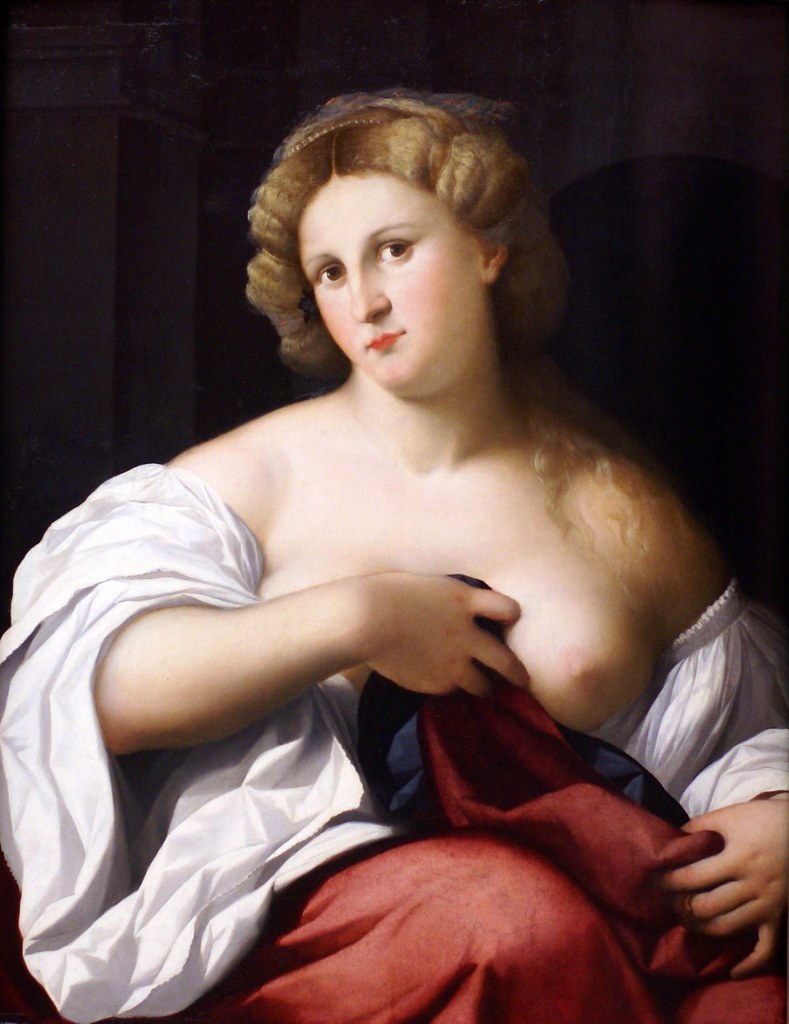
(Picture: flickr.com)
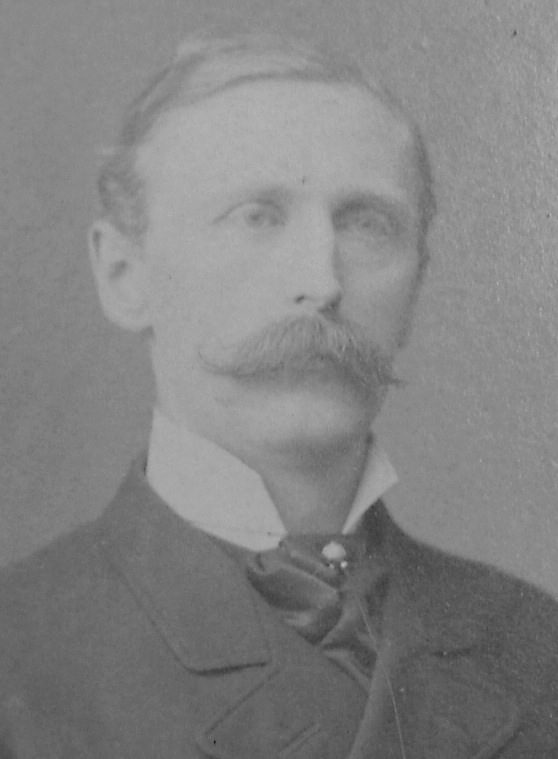
Wilhelm (von) Bode (1845-1929) in his thirties
(source: photo by author after a carte de visite
in the Nachlass Jean Paul Richter,
kept by the Bibliotheca Hertziana, Rome)

GIOVANNI MORELLI AND WILHELM BODE
1838: Morelli, when visiting Berlin, takes a deep dislike of the city and its, as he later calls it, ›strutter-atmosphere‹ (›Prahlhans-Atmosphäre‹) (compare for example GM to Jean Paul Richter, 1 January 1885).
1848: Morelli is deeply hurt by the members of the German national assembly, assembled in the Paulskirche at Frankfurt a. M., because of their, on the whole (with few exceptions), not taking seriously the national ambitions of the Lombardic patriots.
1871ff.: after the German Kaiserreich being established (after the French-German War) the new state provides large resources for the Berlin museums; Germany aims at establishing collections, new positions in the museums are being created, new personal moves into these positions.
1872: Wilhelm Bode, travelling in Italy, is eager to see Morelli’s pictures. A meeting does not take place (see Anderson 1996, p. 110f.).
1873: Morelli’s love-hate-relationship with Germany shows in his being touchy as to patronizing German professors at Vienna, allegedly trying to challenge (and possibly to humiliate) him as a connoisseur of art.
1874: according to Carl Justi, Bode doesn’t want to acquire Giorgione’s Tempesta, since he thinks it to be completely overpainted.
1875: Morelli, according to tradition, prevents the Tempesta from being exported from Italy.
1876: a first major disagreement might have occurred due to opposing viewpoints as to two predella pieces from the Capponi estate (Morelli having, according to Bode, put together a catalogue; see Bode [1997], vol. 1, p. 154, vol. 2, p. 153; and compare GM to Jean Paul Richter, 18 January 1881): ›maniera di Masaccio‹ (Morelli) or ›Masaccio‹ (Bode)?.
1878: a catalogue of the Berlin Gemäldegalerie is being prepared by Bode and Julius Meyer (according to Bode Morelli was to attack him in the years to come due to attributions that actually Meyer was responsible for; see Bode [1997], vol. 1, p. 221); in writing to Meyer (probably in 1878/79) Morelli suggests, according to his own later words and as to Berlin attributions (old or new), no less than 60 corrections (see GM to Jean Paul Richter, 5 January 1880).
1879: Morelli utters the opinion that Bode, as a connoisseur, has been corrupted by the influence of Karl Eduard von Liphart (GM to Jean Paul Richter, 17 December 1879); Morelli makes the acquaintance of the Prussian Crown Prince Friedrich Wilhelm who is the patron of the Berlin museum, and of Crown Princess Victoria (who is said to have much influence on her husband): this creates a delicate situation since Morelli, thus, is rather intensely conversing throughout the subsequent years with Bode’s superiors, and also trying, successfully, to bring his pupil Jean Paul Richter in contact with the Prince and Princess to possibly have move him into a Berlin position in the future.
1880: Morelli attacks mainly Crowe and Cavalcaselle with his ›Lermolieff‹; Bode visits Milan and, without Morelli being present, but accompanied by Gustavo Frizzoni, also Morelli’s flat and collection (see GM to Jean Paul Richter, 27 May 1880).
1881 (September): Morelli sends letters to Bode; he hasn’t yet met him personally (compare GM to Jean Paul Richter, 14 November 1881; a sarcastic character portrait of Bode by Carl Justi, who had met Bode in Spain, is being discussed; see Jean Paul Richter to GM, 10 November 1881 [Justi speaking on Bode]: »Sein Trachten, gleich beim ersten Blick auf ein Bild den Autor zu nennen, mit der Unmittelbarkeit einer Reflexbewegung, schneller als das Niesen auf eine Prise, erinnerte mich an das Mor[r]aspiel.«).
1882: Morelli and Bode are exchanging letters; Bode invites Morelli to Berlin (M/R, p. 243).
(Picture: lombardibeniculturali.it; Benedetto da Maiano)
1883: in early spring Bode visits Morelli at Milan (see for example GM to Jean Paul Richter, 3 April 1883). Bode takes (or already earlier has taken) a liking in Morelli’s terracotta angel (see above) and is eager to buy it for the Berlin collections. The attribution to Benedetto da Maiano – accepted by modern scholars – goes back to Bode, in 1880, correcting Morelli’s view, and as it were, in Morelli’s own house (as to Morelli’s admitting of having been mistaken see GM to Jean Paul Richter, 7 April 1884; and compare again GM to Jean Paul Richter, 27 May 1880, for Morelli’s early knowing of Bode’s opinion); despite all of Morelli’s criticizing of Bode and treating him with scorn Morelli, reluctantly, does admit that Bode does possess some qualities as a connoisseur of art, namely a ›very sharp eye‹, an ›eminent memory‹ and ›indefatigable energy‹ (see GM to Jean Paul Richter, 30 May 1883), resulting with Morelli calling Bode also ›not being an ordinary man‹, and in some respects ›surmounting‹ most of his colleagues in Europe.
1884: Morelli doesn’t want to sell the angel; major controversy over the newly found Resurrection that Bode has attributed to Leonardo da Vinci. Morelli disagrees. Bode writes also to Jacob Burckhardt in the matter, criticizing, on this occasion, Morelli/Lermolieff an his method.
1885: harsh ›anti-Bode-article‹ by Morelli’s pupil Jean Paul Richter (Jean Paul Richter 1885); death of Bode’s wife.
1886: Bode reviews Morelli 1886 (the much delayed Italian translation of Morelli 1880); the review will later be included into Bode’s autobiography.
1887: Wilhelm Bode, Die italienischen Bildhauer der Renaissance.
1888: surprisingly harsh ›anti-Bode-article‹ by Gustavo Frizzoni (Frizzoni 1888); death of Kaiser Friedrich III; ascension to the throne of Wilhelm II.
1889: Bode visits Morelli for the second time (in February); articles by Bode in the Gazette des beaux-arts; Bode, again, writes to Jacob Burckhardt, including a critique of Morelli, the ›Swiss Anatomist‹; Morelli refers to Bode as a ›Georges Dandin‹ (Gibson-Wood 1988, p. 195).
1890: Lermolieff, in Morelli 1890 (pp. Xff. and passim), attacks Bode, the new director of the Berlin Gemäldegalerie, on the grounds of his edition of Jacob Burckhardt’s Cicerone; a sort of caricatural appearance of Bode is also included in that book (pp. 415-418).
1891: Bode, in The Fortnightly Review of October, writes on Morelli in a way that the Morellians particularly take offense at (Layard, probably only partially aware of the movements of Morelli’s troops in the arena of polemics, refers to Bode as a ›clown with a bludgeon‹; see Layard 1900 [1892], p. 2f.); the article does, in its exaggerations and simplifications misrepresent Morelli (compare for an excerpt for example Anderson 1987a, p. 50) and thus probably, although obviously conveying Bode’s anger about and frustration with Morelli, fostered many a misunderstanding; later however, in another edition of the Cicerone, Bode, is going to count Morelli, and this without irony, among the ›great teachers‹ (Bode [1939], p. VIIIf.), and his memoirs (Bode [1997]) include a reprint of his more balanced 1886 review of Morelli.
1893: Gustavo Frizzoni provides a posthumous new edition of those part of Morelli 1880 that had been dealing with the gallery of Berlin (Morelli 1893), based on Morelli’s unfinished reworked version.
23) Who is to be regarded as Morelli’s heir, and was there such thing as a Morellian school?
In 1861, when travelling with Giovanni Battista Cavalcaselle, and in the years to come Giovanni Morelli was without an assistant or cooperation partner like Cavalcaselle had with Joseph Archer Crowe. Morelli, although actually in need of someone helping him to overcome his lack of discipline, and assisting him in getting his essays and monographs done, not to speak of promoting them, had no one supporting him in his mission to become an advocate of scientific connoisseurship. This changed to some degree when Gustavo Frizzoni, the son of his late friend Giovanni Frizzoni (who had died in 1849), started to study and to work with him; but it changed definitely only in 1876, when German born Jean Paul Richter (1847-1937) paid a visit to Morelli, since Richter was, subsequently, to become the indefatigable assistant, the standard bearer of the Morellian approach. And in Richter, above all, Morelli invested his teaching (see Seybold 2014a).
All the more as Richter showed as the ideal student: eager to learn (since he had actually followed a career in Christian Archeology first and knew rather little as to Italian Renaissance art), and little inclined to actually challenge Morelli critically. Hence in more than one sense Richter was to become Morelli’s model student: on the one hand representing all that Morelli wanted a ›Lermolieffian‹ to represent, but also, beyond what Morelli had wanted, revealing – in a kind of educational experiment – not the least also the shortcomings of rather narrowly defined working practices according to the Morellian approach. Since Richter, compared with Morelli’s all-sided receptiveness, was not able to bring a similarly rich background to such studies as Morelli was able (and silently was also taking for granted), Morelli who neither did conceptualize all that he was capable of in one coherent theory, nor was able or inclined to teach Richter (and others) all that he was capable of in practice. The inner dynamic of the Morellian school, a rather small circle of students around Morelli, thus developed partly to the benefit of fruitful studies and rich scientific results, especially in the early 1880s, but partly also to an exclusive group identity, aggressively, according to Morelli’s wishing so, polemicizing against other art historians and connoisseurs. Which, however and in the end, could not cover up inner tensions that also had been developing within the Morellian school and also within its small inner circle.
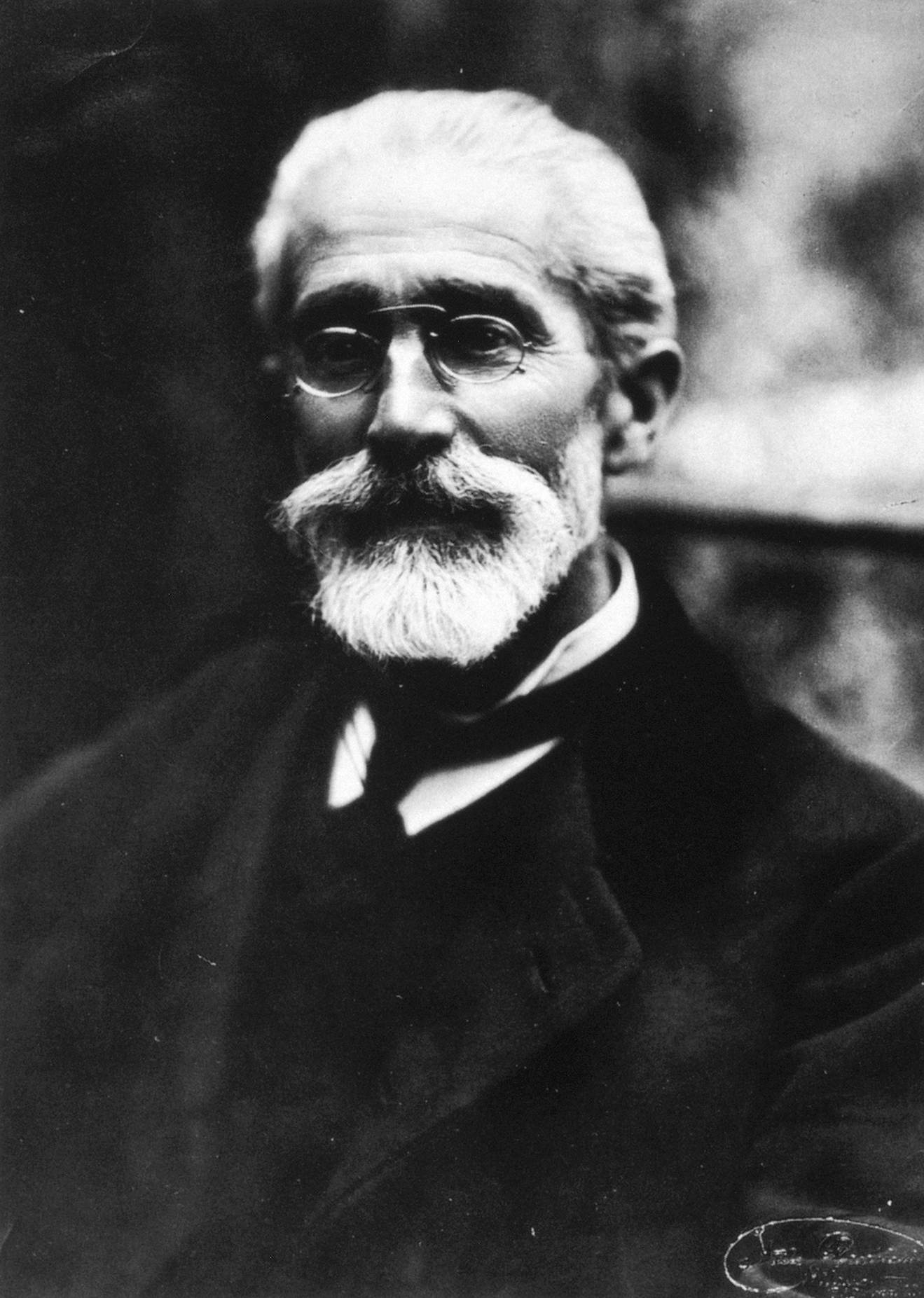
›As if he was my own son‹: Gustavo Frizzoni (1840-1919)
(source of picture: Anderson 1996, p. 115)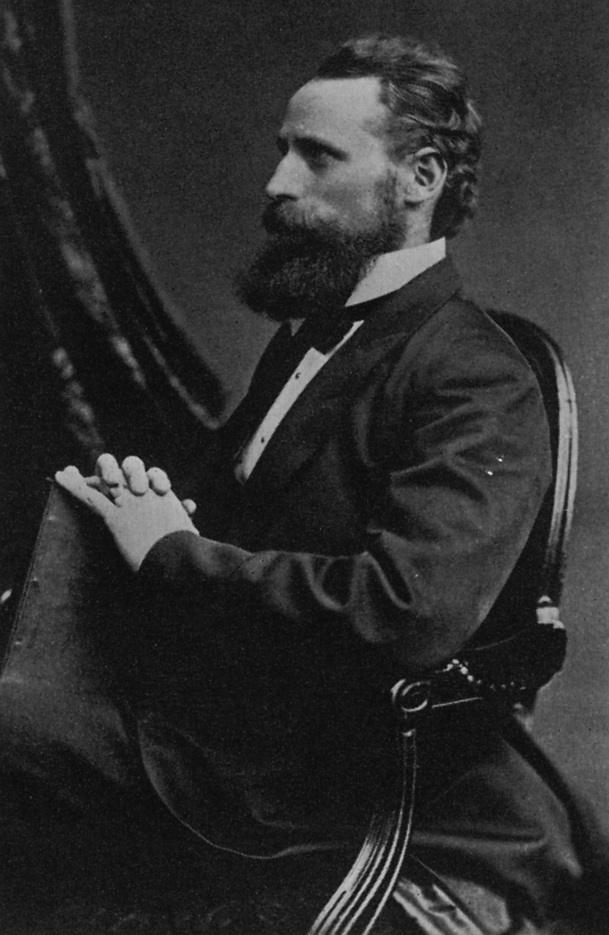
A symbiotic working relationship: Morelli’s apprentice Jean Paul Richter (1847-1937)
(source: Bora (ed.) 1994, p. 91) 
Bernard Berenson in 1891 (source: npg.org.uk)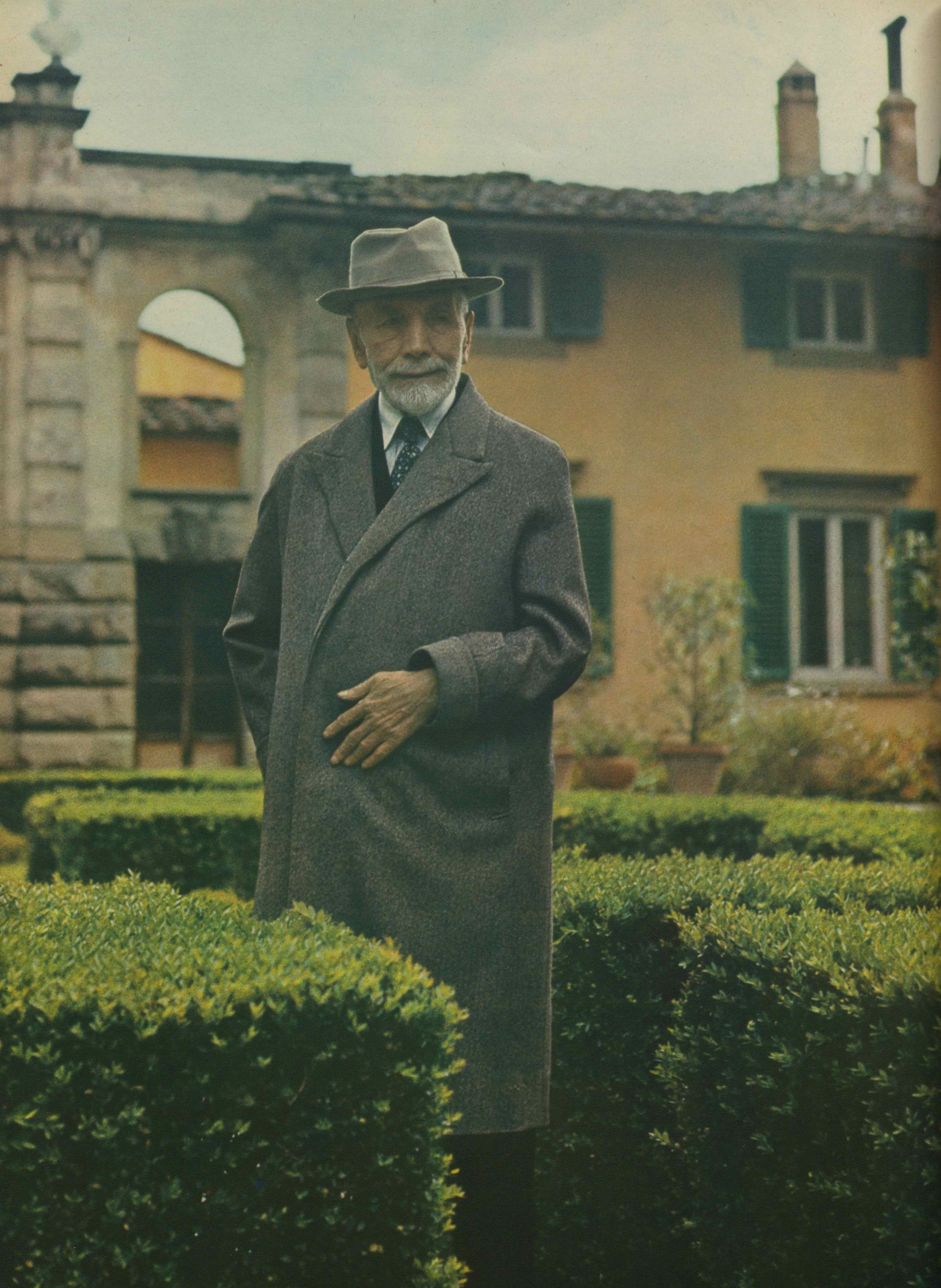
A towering monument in a maze of attributions: Bernard Berenson (1865-1959)
(source: Du. Schweizerische Monatsschrift No. 10 of October 1954/Theo Bandi)

GIOVANNI MORELLI AND THE CONNOISSEURIAL TRADITION II: FOLLOWERS AND HEIRS
I. THE TIME OF THE ›TRIPLE ALLIANCE‹
According to Woldemar von Seidlitz (Seidlitz 1891, p. 348) Morelli had made a mistake to allow his pupils to make him their leader. But Morelli needed the enthusiasm and the loyalty of Richter and Frizzoni, not only to get his art historical writings done, but also to renew his own enthusiasm that, above all, Richter, with his enthusiasm for the Morellian approach, was capable of reigniting in him. Thus and especially in the early 1880s the ›Triple alliance‹, as it was internally called, worked to the benefit of all three participants.
Important to Morelli were also his Viennese friends, Carl von Lützow and Moritz Thausing, and his English friends, above all, Austen Henry Layard and Lady Eastlake. The German-American Edward Habich was to become another follower, although Habich was maneuvering (or seen to be maneuvering; see for example GM to Jean Paul Richter, 4 February 1885) between Wilhelm Bode and Morelli (as was also Richter in the beginning, and more and more again in the end). Frizzoni, in whose eye Morelli had actually rather little trust (although he conceeded that Frizzoni, whom he loved like his own son, had a fine sense of art; see GM to Jean Paul Richter, 6 January 1888; 8 March 1889 (M/R, p. 549)), became also friend of Adolfo Venturi, whom Morelli considered as belonging to the ›enemy camp‹ (see GM to Jean Paul Richter, 8 August 1889; 5 February 1891).
Between Bode and Morelli: Edward Habich (1818-1898)
(source: malerei19jh.museum-kassel.de)
II. THE DAWN OF THE BERENSONIAN AGE (1890ff.)
In the second half of the 1880s tensions between Austen Henry Layard and Jean Paul Richter, who had turned to become a dealer along with his being a scholar, forced also Morelli to maneuver (see again Seybold 2014a). Meanwhile also Morelli’s political friends Marco Minghetti and Emilio Visconti-Venosta (along with Giuseppe Mongeri, who died in 1888) had become Morelli’s followers (but in 1884 Thausing had also died). Minghetti even published a book on Raphael (Minghetti 1885), and Visconti-Venosta came to study with Morelli three times a week (see GM to Jean Paul Richter, 11 June 1885). And with the appearance of Constance Jocelyn Ffoulkes, who was taken under the wing of Morelli and Richter, a problem arose who was to further translate Morelli’s writings into English. Since Louise M. Richter, the wife of Jean Paul Richter, had translated Morelli’s first book (Morelli 1880; Morelli 1883), and actually was destined by Morelli (because he knew that she would also be supervised by Jean Paul Richter; see GM to Jean Paul Richter, 10 October 1889) to translate also his books to come.
But in the end two further books were translated by Constance Jocelyn Ffoulkes, and between Jean Paul Richter and Morelli also tensions did arise. Because Richter felt, more and more, also being patronized. And the working relationship that had, in early days, worked that perfectly was about to split, when, rather unexpected, in early 1891, Morelli died.
A Morellian school did also die with him, since none of his followers was willing or able to replace him as a charismatic and uniting central figure, and Bernard Berenson, who had appeared on the scene with Enrico Costa (the latter also being taken under the wings of Richter), was to outshadow Richter in the years to come, to shape a Berensonian age that was not, or only to some degree the continuation of the Morellian age, but a new chapter in the history of connoisseurship with a distinctly different character (see Cabinet IV).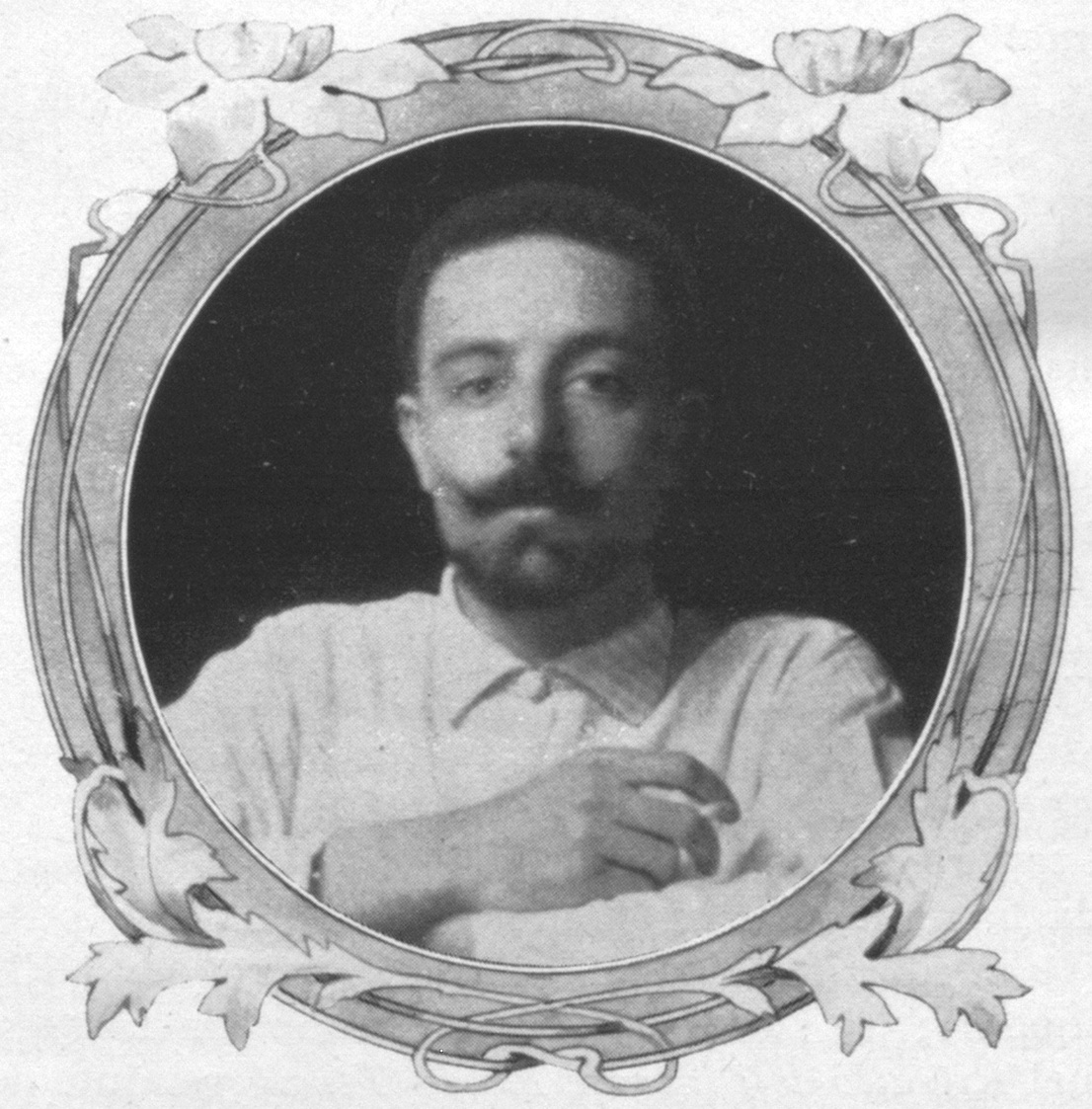
Enrico Costa (1867-1911)
(source: Gamba 1912, p. IV)
III. THE AFTERMATH OF THE GOLDEN AGE OF CONNOISSEURSHIP
If scientific connoisseurship does mean to have and to keep alive a conscienceness for scientific standards in connoisseurship, scientific connoisseurship certainly was outshadowed, for decades, by another notion of connoisseurship (that tended to think of it rather as an art, or as a simple practice, quintessentially consisting of split-second intuitions that are drawing on memory capacity and individual sensitivity; demonstrations could follow but were not being, any longer, considered as being essential or crucial).
But the smaller tradition of scientific connoisseurship never was completely outshadowed. Critical voices reminded, even during Berenson’s lifetime (see Hüttinger 1992, p. 113, and also 107, note 13; referring to the Hungarian Donatello-scholar Jenö Lányi), that it was not enough, and seen from a scientific point of view, being rather irrelevant, to assemble mere opinions as lists. Without explaining comprehensibly how one had attained one’s opinions or claims (and also, one might add, without giving other connoisseurs credit for already having attained similar results, or such results one secretely was quarrelling with).
But such voices, despite their representing a scientific ambition in connoisseurship, did certainly not represent a mainstream. And it was left to wayward outsiders like Maurits M. van Dantzig to think again, to think anew about more rational methods, standards and even about the formal side of procedures: of protocols. Be it that such methods were designated to address anew what we have called the Morellian situation, or other problems, such as the separating out of fakes (a problem Morelli had been little concerned with).
The methods Van Dantzig recommended (compare Van Dantzig 1973; Tummers 2011, p. 33-35; Jaffé/Storm van Leeuwen/Tweel (eds.) 1979, p. 57ff. (J. Storm van Leeuwen)), were, in the enlisting of as much visual properties as possible, apt to check, if a possible forger had attained to keep up with an original painter’s skills (and had not showed weaknesses at all); but certainly less apt to address the Morellian situation, where one might be aiming, more economically, at those clues that could finally and positively make a difference as to individual style (see question/answer No. 17). Because such clues, in case they do exist in the individual case, would be possibly exclusively distinctive, positively distinctive.
But given that in the individual case it would be about testing if a painting was authentic or by an unknown forger, it indeed does seem to be more reasonable to turn to van Dantzig’s methods with assembling as much properties as possible of the known painter, because the alternative hypothesis of an unknown forger could, lack of known distinctive properties, not be checked at all.
Thus Van Dantzig might have enriched the repertoire of methods, but even today it does still remain the task to assemble the whole repertoire of ideas and, in the end, experiences with ideas, methods and practices more systematically, to keep, in a word, a scientific conscienceness in connoisseurship alive – by writing its history.
Some voices (such as Charles Hope and Alexander Perrig), representing this particular, rather small tradition in connoisseurship, may also be quoted in the following, even if not, in a strict sense, representing a Morellian tradition (and both actually and rightly being critical in regard to it; see Perrig 1976; Hope 2003), but still, and in a large sense, showing a being dedicated to keep a scientific conscienceness in connoisseurship alive and a being inclined to think connoisseurship, as Morelli had envisioned it, also as a science, and not exclusively as an art or as a mere practice. All the more so as all art historical disciplines are dependent of a historical and systematic order of identified objects to work with; and the vision – or the reality – of any science relying upon pratices that are not being interested to live up to scientific standards, has never been an all too charming and convincing one.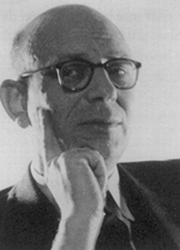
Maurits M. van Dantzig (1903-1960)
(source: resources.huygens.knaw.nl) 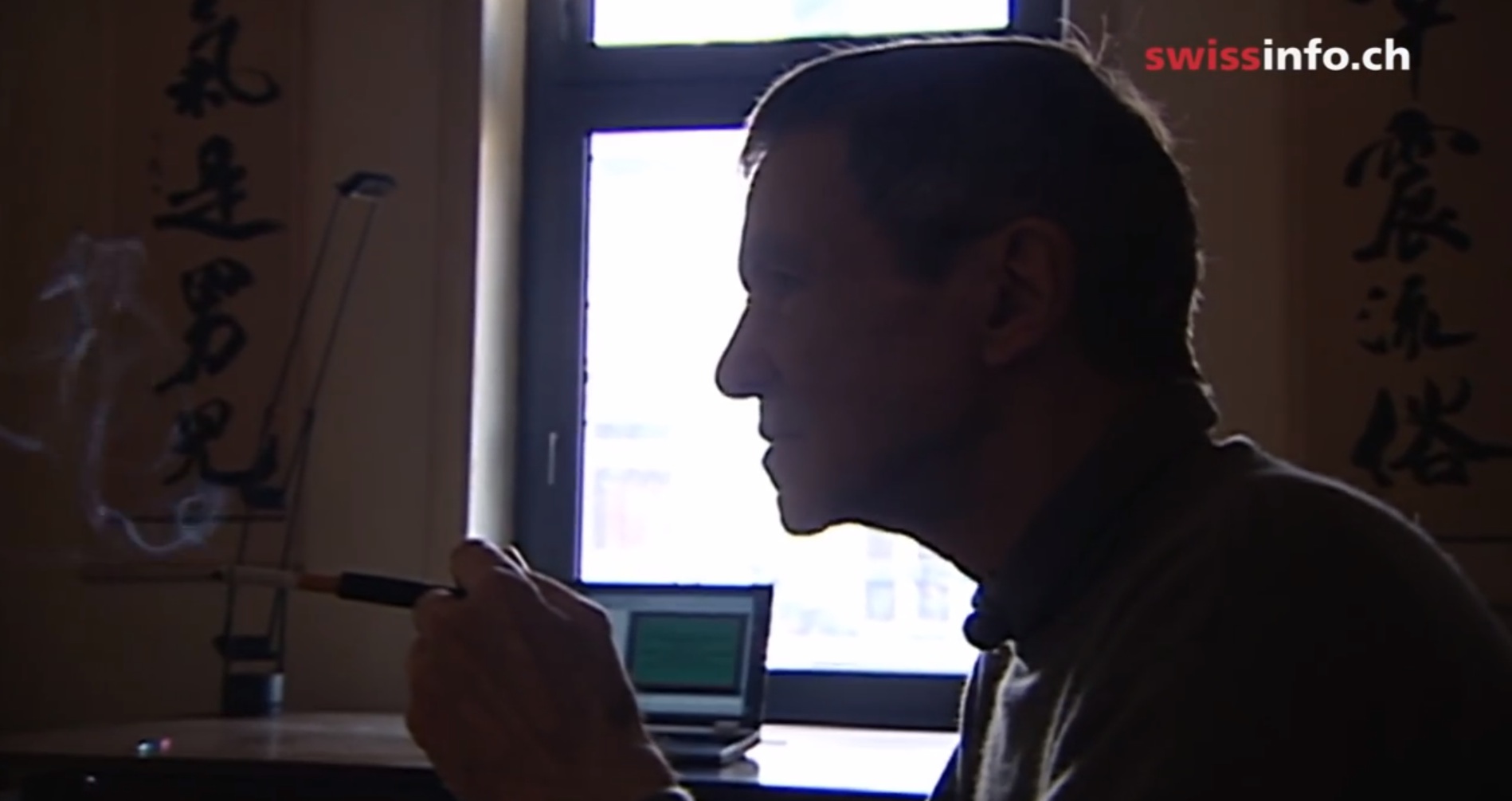
Swiss art historian Alexander Perrig who does make a case for a rational Zeichnungswissenschaft, for scientific discipline and objectivity in connoisseurship has, paradoxically and maybe also significantly, not taken notice of the one Morelli which can be seen as his predecessor, but only (and very dismissively) of the one (also existing) Morelli who uttered subjective laconic connoisseurial opinions (compare our Bibliography Raisonné; Perrig 1976, p. 88, note 2; and again our presentation dedicated to Alexander Perrig)
(picture: youtube.com/swissinfo.com)
Hope 2003, p. 29: »There are scholars now alive who give Giorgione between thirty or forty pictures, and the norm seems to be around twenty. These attributions are normally based on two types of argument: first, that Giorgione is the only credible candidate; second, that other critics in the past have believed it to be by him. The issue of whether pictures closely resemble one another is scarcely discussed.«
P. 47, note 109: »For the proposal, based in part on ›Morellian‹ arguments, that Domenico Mancini was responsible for the Concert Champêtre, Christ and the Adulteress, and the Prado Madonna, see Hope, 1993, pp. 24-26. Almost all scholars who have mentioned this suggestion have dismissed it, without explaining why; but it seems likely that the main reason is the belief that Mancini must have been an artist of the second rank because his reputation did not survive.«


In search of Domenico Mancini (to check the reasoning of Charles Hope, one has, maybe surprisingly, to consult the archive of The New York Review of Books)
24) Why has there never been such thing as an actual institutionalizing of attributional studies within the academia?
On occasion of the famous »Holbein-Streit« connoisseurship had been on the agenda of the German academia, whose representatives assembled on occasion of the Holbein exhibition at Dresden in 1871; but when, in 1873 and at Vienna, the first international art historical congress was held (compare Dilly 1979, pp. 161ff.), connoisseurship was not on the agenda (anymore), although, for example Moritz Thausing, to whom has to be given much credit as to being a supporter of Morelli (compare question/answer No. 28), was also present and a member of that congress.
One might assume that already at that time, and probably much earlier, connoisseurship had been (silently) associated with the art trade, or that connoisseurship was left to those art historians (painters also, but more and more trained art historians) working in the museums. And hence one might assume that the actual reason that connoisseurship’s address might be anywhere and, occasionally and also, more in an ad hoc sense, also the academia, is the reason that the academia doesn’t want to be embroiled in the picture trade (at least not bee seen to be embroiled visibly in the picture trade), while on the other hand the picture trade, in its inclination to secrecy, might rely (behind closed doors) on scientific connoisseurship or not, but in any case applied connoisseurship in the service of the picture trade, can, by principle, in its inclination to secrecy or confidentially, not comply to the scientific standard of full and explicit transparency. Since, by principle, it cannot be in the connoisseur’s best interest, to invite the public on all time to verify what a connoisseur exactly is doing in the service of the trade (and this does not mean, by principle, that such connoisseurship is being corrupted), but such a complying to scientific standards of transparency and verifiability, for a connoisseur not working in a socially secured position as a professor, would be simply too risky. Because reputation runs in danger to be damaged if questioned publicly. And reputation, in most cases, is what connoisseurs have lived on.
On the other hand: if connoisseurship would we wanted to comply to scientific standards, it would be about thinking again how it could be institutionalized. And one might state that here the Gordian knot of scientific connoisseurship is to be found. Resulting with the fact that, as for today, connoisseurship’s address might be anywhere (but one may think also about an institutionalizing of standards rather than about an institutionalizing of connoisseurship as such, of standards, ethical, scientific, protocolar, minimal or maximum standards, that connoisseurship had to be comply to, whereever it may be practiced, inside or outside the academia, in or inbetween the institutions, if it was meant to be respected as scientific connoisseurship).
[occasionally the establishing of institutions, meant to survey the practices of attributioning, has been suggested by single writers like, in the 19th century, Charles Blanc (see here), and, in the 20th/21st century, Jackson Pollock expert Francis V. O’Connor (O’Connor 2012ff.); and, probably significantly, none of these writers did argue that it could be, by principle, up to the academia to take responsibility, and to exclusively guarantee the scientific solidity of art historical fundaments, that is: attributions, understood as a science base]
25) How did other connoisseurs think about Morelli as a connoisseur?
Opinions, naturally, were being divided, but can be grouped by one single criteria: did the other connoisseur acknowledge that the Morellian method did presuppose, imply and also, practically, encompass and include the acknowledgment of a general impression that a work of art had made on the connoisseur, or not.
Because if not, an extremely one-sided image of Morelli could be the result, and this among his supporters (who were, as it were, obsessed with the idea that exclusively distinctive stylistic properties to work with might exist, resulting with a particularly strong position of those who knew of these properties), as well as among his critics (who feared the reductionist single-mindedness of such an approach, as well as its possible triumph).
But if yes, one was also able to acknowledge that Morelli was capable to address a work of art on many levels, including in more appreciative ways, taking also artistic qualities of various kind (ranging from superb craftmanship to intellectual and human qualities) into account.
Nevertheless it is true that Morelli did not conceptualize a working with stylistic properties beyond a working with the Morellian detail. But still: in the general impression everything could have its place; and the general impression (Morelli’s synonym for intuition) had its place in Giovanni Morelli’s theory as in his working practices as a connoisseur, as well as in his appreciating of art as a human being, and also and particularly as a collector.
[for notable connoisseurs, revealing their respective image of Morelli, see for example Waterhouse 1961 and Longhi 1985b, and compare Cabinet IV]
26) What was Morelli’s position in the so-called »Holbein-Streit«?
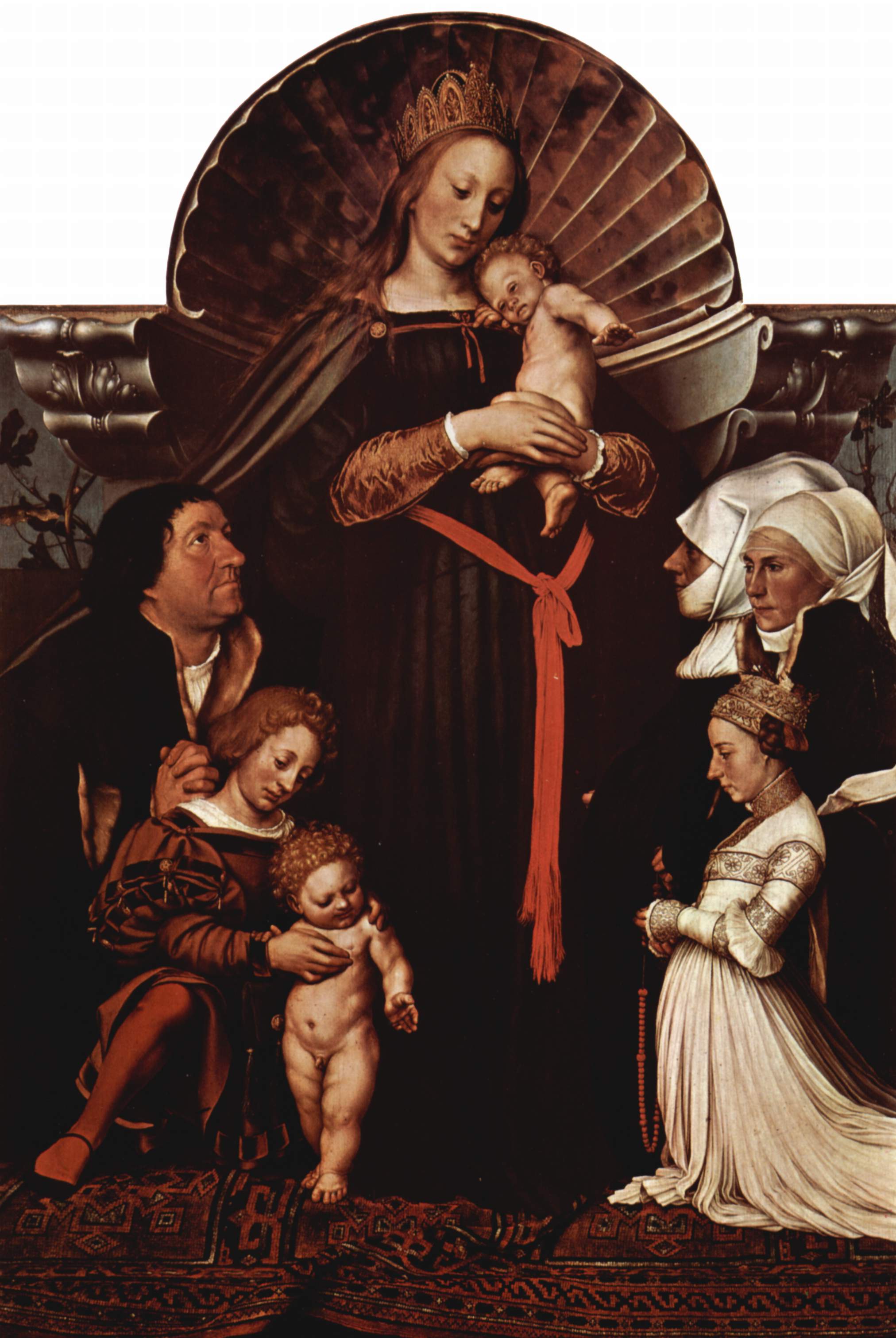
The Darmstadt version

Detail of the Darmstadt version
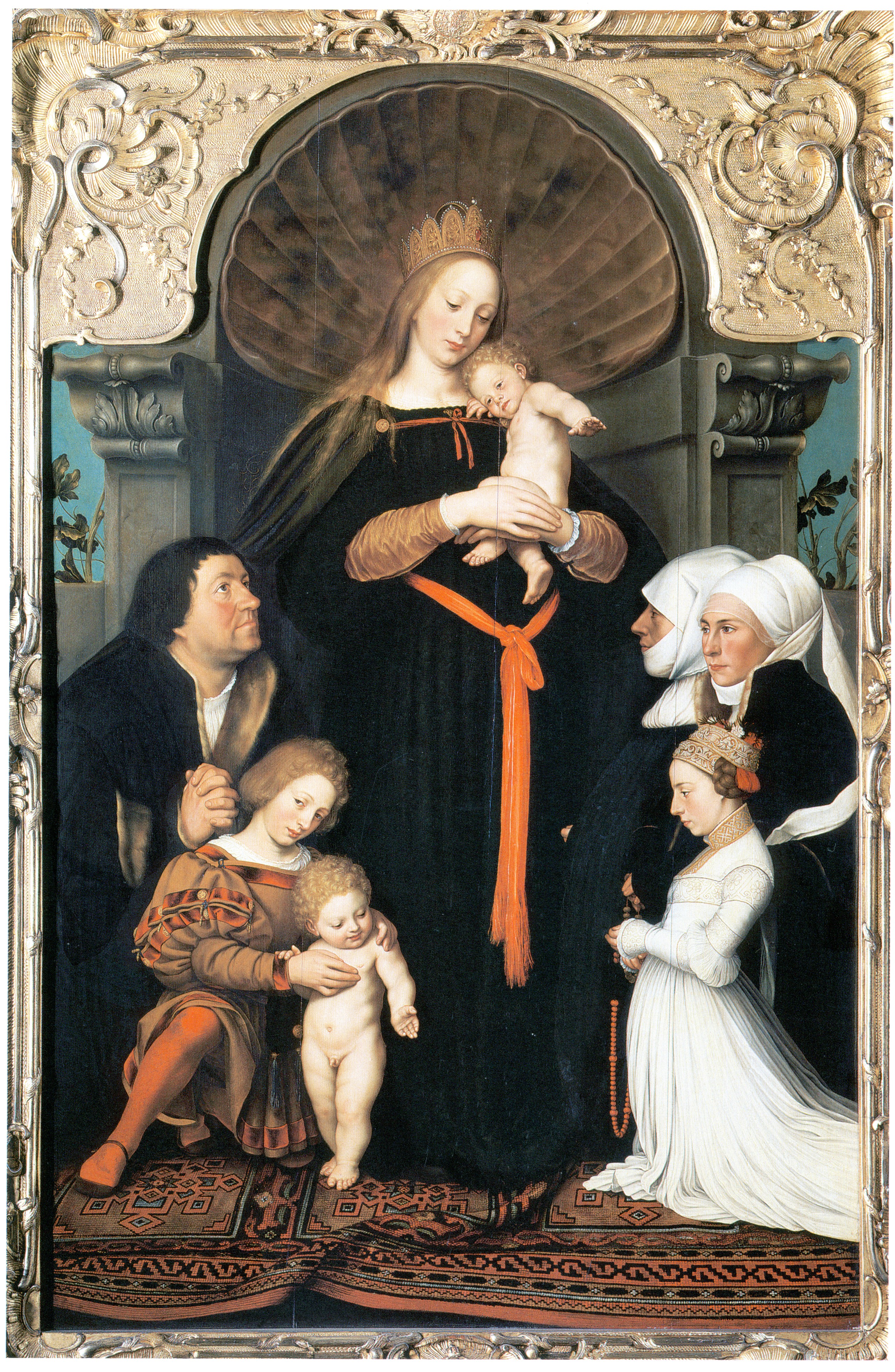
The Dresden version
Giovanni Morelli had no actual own position in the so-called »Holbein-Streit«, although this controversy that reached its climax in 1871 did present connoisseurship of whatever kind with the Morellian situation (two works of art being, stylistically, closely related).
After Morelli had stayed at Dresden in 1871 (thinking at first that both versions of the Madonna of Bürgermeister Meyer were originals), he adopted the prevailing consensus that the Darmstadt version was original and the Dresden version merely copy, and referred the (still today prevailing) insights of the debate among German ›Kunstforscher‹ (summed up by Adolph Bayersdorfer in Bayersdorfer 1872) to his friend Austen Henry Layard, resulting with Layard thinking, though, that these findings, that Morelli’s arguments were Morelli’s own findings and arguments (see Anderson 1999a, pp. 130f., 136, and compare also Fleming 1973, p. 12, with Morelli writing to James Hudson on the matter; for the »Holbein-Streit« and Giovanni Morelli learning from German ›Kunstforscher‹, namely from Adoph Bayersdorfer, see chapter Visual Apprenticeship II).
27) What was Morelli’s role in the secular controversy about the Apollo and Marsyas owned by Mr. Morris Moore?

Edward Habich: ›In favor of Perugino and against Raphael yet do speak the long, lean legs,
the feet with concave soles and the claw-like hands; moreover the types, which are rendered,
in their entirety and in every single part – the picture is very beautiful!‹
(»Für Perugino u. gegen Raphael sprechen schon die langen, dürren Beine, die Füße mit
ausgehöhlter Sohle und krallenartigen Hände und außerdem die Typen welche in der
Gesammtheit und jedem einzelnen Theile zum Ausdruck gebracht sind – Das Bild ist sehr schön!«
(source: see text))

Gustavo Frizzoni
(source:
Anderson 1996, p. 115)

Superficially it might seem that Morelli was just, as many others, critical as to the attribution of a painting in the possession of Morris Moore, showing Apollo and Marsyas (or, as it is believed today: Apollo and Daphnis) to Raphael; the today attribution to Perugino goes back to Morelli and has found general acclaim, although Moore yet had managed to sell his painting, in 1883, to the Louvre as a Raphael (see Haskell 1978).
But the case, if looked at more in depth shows more ambiguously. In fact: with Morelli being confronted with it for the very first time in around 1860 (in 1858, according to Morelli 1893, p. 311, note 1; in 1860 according to Moore; see Käss 1987, p. 158), and still being confronted with it in around 1880, in 1882/83 and beyond, the case was with Morelli throughout his actual career as a connoisseur of art, and the time span named encompasses in fact his development from following a more intuitive approach to his turning to a more methodologically reflected approach. In a word: Morelli, who did not provide us with memoirs of a connoisseur, might have chosen to tell us only about this single case, and he would have had provided us with memoirs of a connoisseur. Not with a triumphant story, perhaps, but with an account also comprising many ambiguities. As for example: responsible for the attribution of the painting to Perugino was actually Gustavo Frizzoni, but it is also obvious that Frizzoni named Perugino when being under a strong influence of Morelli (who, as said above, did not much trust Frizzoni’s Morellian eye; see: GM to Jean Paul Richter, 6 January 1888; 8 March 1889 (M/R, p. 549)), but the problem was that Morelli, in around 1880, was no longer in the position to actually see the painting in the flesh, being a persona non grata for Moore. And thus Morelli did send Frizzoni, as a sort of agent, to look at the painting for Morelli; and Morelli did also guide and advise Frizzoni’s looking at the painting, with Moore, by the way, becoming later aware of that mission (on which Frizzoni had also met Cavalcaselle), including the detail that Frizzoni had apparently, at a time when Moore had been absent, attempted to get a good look at the picture, helped by a maid (see Käss 1987, p. 158; and for Cavalcaselle being also there GM to Jean Paul Richter, 22 July 1881 (M/R, p. 171f.)).
But beyond this more comedic aspect the case was crucial and difficult for Morelli for a number of reasons: Firstly it was about Raphael, one of the quintessential Italian painters (and indirectly also about Raphael drawings, a particular mine field of attributional studies), not about keeping the oeuvre of Raphael clean, though, since Morelli actually seemed to have liked the Moore painting, referring to it as being ›redolent of Raphael‹ (see Morelli 1880, p. 339), but about the correct oeuvre catalogue of Raphael and others next to him, in a word about ›knowing Raphael and others or not‹; hence it was about the Morellian problem, the problem of closely interrelated styles, furthermore about the disagreement with Cavalcaselle (who believed the painting to be by Raphael), but above all about the providing of an answer to the Morellian situation of closely interrelated styles, thus about scientific connoisseurship as such.
Of course it was also about money (at least from the perspective of Morris Moore), and about reputation. And as to reputation Morelli might not have felt compelled to dwell more than necessary on the fact that he had repeatedly changed his opinion as to the author of the picture over the years (compare Morelli 1893, p. 311f., note 1 [reprint of Morelli 1882]). Following the opinions of others (Mündler, Eastlake, Passavant) up to the year of 1880 (Morelli 1880, p. 339; compare also GM to Jean Paul Richter, 22 July 1881 (M/R, p. 171f.)). And changing his mind publicly only in 1882/83, twenty years after having developed the Morellian method, and when he finally had the painting (as well as a drawing in Venice, showing the same subject) attributed to Perugino by Frizzoni (who actually had voted for Raphael first: see again M/R, p. 171f.).
For Moore the name of Morelli was, in around 1880, an emotive word; and Moore considered Morelli to be a corrupt picture dealer, and as a senator who had come to office due to machinations of women (see Käss 1987, p. 158). The reasons backing the attribution to Perugino are best revealed by a letter of Morelli’s follower Edward Habich to Jacob Burckhardt, of 4 June 1884.
28) What importance had the city of Vienna for Giovanni Morelli, and what importance had Morelli for the Vienna of Sigmund Freud?

Moritz Thausing (1838-1884)
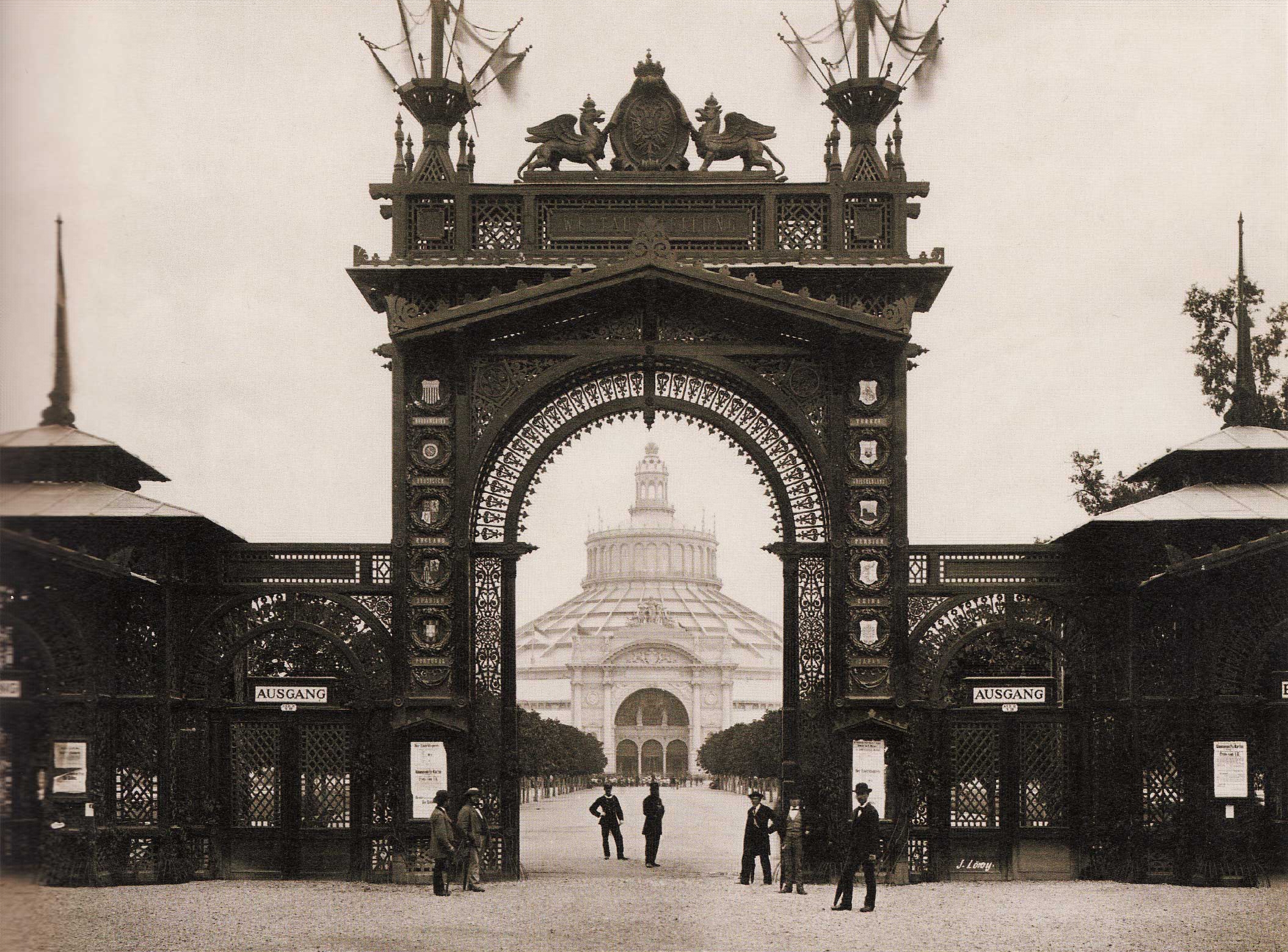
Morelli did visit the city of Vienna for the very first time in 1868 (Gibson-Wood 1988, p. 187), and it was probably then that he got to know art historian Moritz Thausing who became a dear friend of his (compare also op. cit., p. 278). And when Morelli, on occasion of the world fair, held at Vienna in 1873 (see picture above), visited Vienna again, Thausing’s role in persuading Morelli that he indeed should publish a series of essays on connoisseurial problems might have been decisive (and the journal edited by Carl von Lützow, the Zeitschrift für bildende Kunst, provided the appropriate forum therefor, beginning in 1874; compare Münz 1898, p. 102, for Morelli ›owing thanks to Vienna‹). While Morelli, in 1880, was working on his first book (Morelli 1880), he wrote, yet not without irony (since he was in the habit of ironically making people mainly responsible for his doing of things that he pretended not to want, but that he actually wanted too), to his pupil Jean Paul Richter:
›Freund Thausing of Vienna initiated these articles [Morelli 1880; and probably also Morelli 1874-1876] in the first place, and it was him too, preparing the matter with his friend [publisher] Seemann.‹
····················································································································································································
»Freund Thausing von Wien veranlasste hauptsächlich diese Artikel [Morelli 1880; and probably also Morelli 1874-1876] und er war es auch der mit seinem Freunde [publisher] Seemann die Sache einleitete.«
(GM to Jean Paul Richter, 5 January 1880)
›Thausing indeed wants
to make me famous in Austria. It is a pity
that I am yet that old!‹
···································
»Thausing will mich durchaus
in Österreich berühmt machen. Schade, dass ich schon so alt bin!«
(GM to Jean Paul Richter, 10 July 1882)

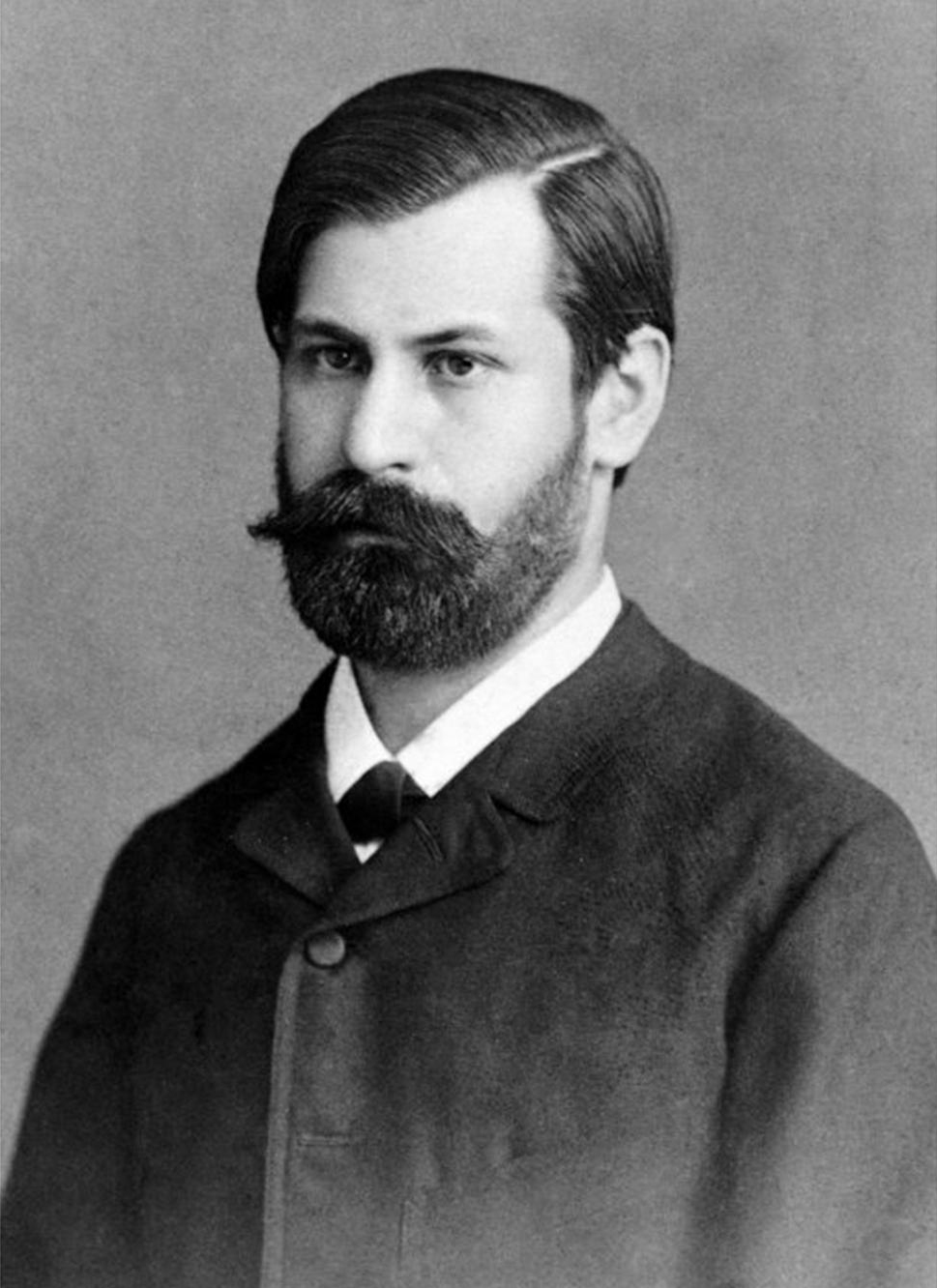
Sigmund Freud in 1885
The role of Thausing might have been also decisive as far as word spread of Lermolieff/Morelli in Vienna, since Thausing did portrait Ivan Lermolieff, to the delight of Morelli, in a feuilleton written for the Viennese newspaper Neue Freie Presse (22 December 1880; republished in Thausing 1884, p. 183-190; Morelli called it a ›humoristic article‹ (GM to Jean Paul Richter, 29 December 1880), more dealing with his personality than with the matter of his method). The Neue Freie Presse was a newspaper also read – daily – by Sigmund Freud (Gay 2006, p. 27). But it remains unknown, when and how exactly Freud got to hear about Morelli and his methodological approach. It may be, however, that Freud heard about Thausing having become mentally ill and apparently having committed suicide in 1884 (the very same year that the Wiener Kunstbriefe, a collection of Thausing’s feuilletons, were published). Moreover a Viennese anatomist, Karl Langer von Edenberg did refer to Morelli/Lermolieff in his Anatomie der äusseren Formen des menschlichen Körpers of 1884, and this also to Morelli’s delight (see GM to Jean Paul Richter, 7 June 1884; from Rome).
One might add that Vienna provided for Morelli also an apt opportunity to test his connoisseurial expertise in 1873. Because on occasion of the first international art historical congress, held in early September, many art historians had gathered there (Cavalcaselle was also a member of that congress, while Morelli was not and arrived at Vienna only after the congress had been finished). According to Morelli (see Agosti 1985, p. 57f.; Gibson-Wood 1988, pp. 277ff.), his expertise got indeed challenged by a group of German professors he had met at an exposition of Old Masters in the Kunstgewerbemuseum (and according to Morelli this encounter resulted with a triumph of his).
This exhibition had, by the way, been organized by Friedrich Lippmann, who later, after he had become director of the Kupferstichkabinett at Berlin, was to become one of Morelli’s opponents (and occasionally Lippmann seemed to be the one that Morelli disliked even more than even Wilhelm Bode (on Lippmann see Bode 1903/1904); and it was also in relation to Morelli’s polemicizing against Lippmann that his anti-Jewish resentments showed most clearly; resentments that, in relation to Thausing, and in the friendship with Thausing, apparently did not play a role at all, although also Thausing is (most likely) to be counted among the Jewish art historians of Habsburgian Vienna; a comprehensive in-depth study on Thausing, however, is lacking; and it might also be that Morelli did not perceive him as being Jewish).
Sigmund Freud, who only much later and in retrospect provided an account as to his having been inspired by Morelli (compare Carlo Ginzburg 1979a, 1979b etc.; and compare Freud [2000], or Freud [2006]), had become interested in Morelli because of the latter’s concept of shifting one’s attention to marginal clues, revealing possibly more substance than obvious features of a picture might reveal (a concept represented by Morelli, but not ›invented‹ by him), and this might not only be of importance as to the origins of psychoanalysis, but also as to the origins of Freudian interpretation of dreams very in particular. In this regard the Wiener Kunstbriefe by Thausing again deserve mentioning, since Thausing dedicated also a feuilleton (11 November 1882; Thausing 1884, pp. 340-348) exclusively to the subject of »Giorgiones Venus« of Dresden and to the motif of the sleeping/dreaming woman (as to Morelli’s description of Correggio’s Venus, Satyr, and Cupid in the Louvre see chapter Visual Apprenticeship I). The Kunstbriefe, however, do not appear in any inventory of Freud’s library (Davies/Fichtner (eds.) 2006), and what Ginzburg had contributed to enlighten the relation Morelli-Freud, especially as to Freud’s probable getting to know of Morellian ideas in the aftermath of his ›discovery of painting‹ that Freud mentioned in December of 1883 (Carlo Ginzburg 1988, p. 84), remains important and valid. Still one ought to mention that Freud could have found what he did find in Morelli also in other, earlier connoisseur’s work.
Morelli and the Unconscious Mind

›Magnetic natures‹ in Correggio,
nervously expressive as to their inner lives
and inner sensibility as human beings
Although Morelli seemed to have been little concerned with any notion referring to what today we would refer, in psychological terms, as to the subconscious or the subconsciousness, or the unconscious and the unconscious mind, a history of how the 19th century tried to deal with the inner life of human beings, understood physiologically and psychologically, could certainly be written, just following the intellectual biography of Giovanni Morelli. Who, as a student in 1835, had been entrusted by his professor with lecturing (probably in substitution of his professor) on the structure of the human brain (Frizzoni 1893, p. XIV); who had been under the spell of philosopher Friedrich Schelling; who knew the writings of the Munich late romantics as for example Clemens Brentano and Joseph Görres (who had cooperated, earlier, in writing the Geschichte von BOGS dem Uhrmacher, a piece of prose dealing with an expertise on the human brain and also, exuberantly fanciful, with a veritable journey into the human brain; see Bergengruen 2007); and who, later had turned to art connoisseurship, a turn that also has to be seen against this backdrop of an immensely rich and searching early intellectual biography.
Although Morelli, in later years, mainly focussed, in his connoisseurial writings, on connoisseurial questions and not on the interpretation of works of art, it is still possible to observe how his experiences in science, and his early devouring of literature of various kind, do resound in his looking at and in his personal appreciating of art. If for example in 1860 he was referring to Correggio’s ›magnetic‹ figures (Kultzen 1989, p. 385), his observations were, as such, not very different from the observations of Jacob Burckhardt who also had mentioned that Correggio had painted the most subtle expressions of human beings’ inner life (Jacob Burckhardt [1939], p. 900), but in Morelli’s vocabulary a knowledge of the once popular romantic movement of animal magnetism shines out, and Morelli chose to (as we do understand it: metaphorically) refer to a certain nervous sensibility, thought as being characteristic for human figures rendered by Correggio, in terms of animal magnetism (that is also: mesmerism/Mesmerismus; compare Treichler 1988).
And if Morelli focussed on the seemingly only connoisseurial question if and how artists do reveal their individual personality in terms of individual form, one can assume, although Morelli was never very explicit, that he thought this revealing of individuality in terms of what, earlier, he had learned from Schelling, who had attempted to conceptualize the artistic process as an externalizing of what an artist had learned during his apprenticeship with a master, but also as an externalizing of the artist’s individual mind as such (compare Sandkühler (ed.) 1998, pp. 109ff., specifically p. 113; compare also, but not necessarily primarily, Morelli 1845), and thus in sum this process was as a process potentially comprising a conscious and an sub- or unconscious, a willful and an unvoluntary dimension (and could be seen, one might add, as a process that only could be described in terms of an imaginary journey into the artist’s mind to discern what exactly was what).
If one wanted, one could, exactly here at this point, discern these dimensions of the artistic process, of an artist’s mind expressing itself voluntarily, or focus on the more mechanical, unvoluntary, that is, not presently conscious, or just ›subconscious‹ ›habit of the hand‹; if one was not to assume that there rather was a continuous mingling of various impulses in practice.
Here again one has to say that Morelli seemed never keenly interested to dwell on this rather theoretical questions, but the two named dimensions, obviously and also explicitly, became part of his thinking of the artistic process, in that he made a difference between the self-expression of the artist’s mind (without Morelli, here, referring to the question of consciousness, and rather assuming a mingling) in terms of anatomical forms (also and in particular of hand and ear), and the artist’s more mechanical ›habits of the hand‹ that could be equalled with the flourishs of a handwriting, produced without, during the process, the artist (or writer) being aware of it (shapes of hands and ears did not rank among this second class of properties).
The idea of a human subconsciousness, thus, might be seen as being present in Morelli more subliminally, more implied, that is: in terms of an artist, sometimes, ›not being aware‹ or ›not fully being ware‹ of what he is doing while being at work, and being at work meaning here specifically rendering human figure and anatomy, according to an artist’s inner notions of human figure and anatomy (learned, envisioned, idealized, distorted, interpreted, reinterpreted etc.).
If Sigmund Freud, at the end of the 19th century, found inspiration in Morelli, one must say, that he found inspiration in a Morelli who had absorbed many intellectual trends and movements, synthesized many an influence (including that of Lanzi who also had spoken of a handwriting’s marks, and including that of other, even earlier connoisseurs). But in a Morelli who indeed had been in touch with the movement of the romantics, and hence a line from Schelling, representing the romantic movement, to Freud might be drawn as a line via Morelli (and maybe also via Thausing) to Freud.
In the wake of Morelli, however, just his distinction between various dimensions of the artistic process, represented by two main classes of formal properties or marks, tended to melt into just one class of properties being revealing as to an artist’s personality (and now mostly associated with ›unvoluntary expression‹, although this had not been Morelli’s main nor only concern, but just one, occasionally showing dimension of his interest in characteristic properties).
This simplification might have occured, because Morelli was now seen as someone who had inspired Freud; and Freud’s interest had not been connoisseurial questions or a conceptualization of artistic self-expression, but apparently, and on a more abstract level, the more basic analogy (a relationship between two not exactly identical, but to some degree similar intellectual approaches), perhaps providing him with a model: in thinking human expression and behaviour in life as such as being revealing especially in the marginal detail without a human person being aware of it, and thus telling as to a human being’s inner life (whereas to describe and to explore this inner life had not been Morelli’s concern, beyond the identification of, as it were, one individual’s inner life or mind, in its artistic expression, and beyond scattered characterizations of artistic personalities as for example that of Correggio; see Morelli 1891, pp. 205ff.). In the end: neither Freud nor Morelli were very explicit in providing insight into the exact origins of their respective ideas, and particularly Freud seems, in revealing Morelli’s influence, also and at the same time to remain rather secretive by revealing rather little about something still designated as being rather fundamental.

Friedrich Schelling (1775-1854)
And with a grain of salt one might interpret this as an affirmation that the substantially important indeed does reveal in the marginal detail. In Freud. But also in Morelli, as to, for example, scattered remarks on other connoisseurs (see question No. 6, above). But also in well-informed Austrian journalist Sigmund Münz, speaking of Morelli having once been under the spell of Schelling and his ›theory of the self, being consciously-unconsciously present in art‹ (»Theorie von dem bewusst-bewusstlos in der Kunst vorhandenen Ich«; see: Münz 1898, p. 92; compare again Sandkühler (ed.) 1998, p. 113; and compare Jean Paul Richter 1891, p. 3: »gleichsam unbewusst«).
[Thausing’s mental illness Morelli, in 1884, regarded as an incurable »Gehirnlähmung« (GM to Jean Paul Richter, 5 February 1884); with the more specific phenomena of ›infantiler Cerebrallähmung‹ also Sigmund Freud, as a neurologist, was concerned, in 1885 and later on (also, by the way, referring to a Louvre painting by Ribera in this respect)]
[for questionable elements in Freud’s summing up of the Morellian method (in Freud [2006]) see Cabinet V]
Morelli and the Viennese School of Art History
Julius von Schlosser, also the historian of the Wiener Schule der Kunstgeschichte (Schlosser 1934), has given Giovanni Morelli much credit for having inspired and influenced Moritz Thausing, Franz Wickhoff, Hermann Dollmayr and himself and in establishing positivism in the history of art as a discipline. But with posterity remains the rather unrewarding task of supplementing this picture with saying that Morelli, on his part, spoke rather ambiguously of some of his Vienna friends – as scholars or writers. Beside of being a dear friend, Moritz Thausing was seen by Morelli as a writer being all too biased (in favor of Lermolieff) and writing all too snappy (compare GM to Jean Paul Richter, 18 January 1881; 17 January 1884; 7 April 1884). And in Franz Wickhoff Morelli had invested high hopes first (see GM to Franz Wickhoff, passim, Institut für Kunstgeschichte, Universität Wien), but spoke of him as of someone doing rather harm to the Morellian approach later (GM to Jean Paul Richter, 10 October 1889), and all in all Morelli’s changing opinion of Wickhoff can also be regarded as an example of Morelli’s very often oscillating judgment (on Morelli and the Viennese School see also Agosti/Manca/Panzeri (eds.) 1993, vol. 2, pp. 359ff. (Artur Rosenauer) and pp. 371ff. (Gianni Carlo Sciolla)).

Morelli did also visit the actual world exhibition in 1873 and commented upon the various countries – favourably namely on France and less favourably on Italy – exhibiting their respective contemporary artists
29) In what way does it seem to be relevant to rethink the Morellian approach to style criticism and to connoisseurship in general today?
Since technical art history shows as a field of practice today, being in lively development, any branch of connoisseurship, be it a pre-scientific, merely intuitive culture or a culture being dedicated to outspoken scientific ideals, does encounter a scientific culture being dedicated to and, by definition, familiar with scientific standards common in the natural sciences. In view of that development it does seem advisable at least to clarify, if applied style criticism, in any way, does speak a common language with technical art history, and in what way, and based on what theoretical grounds, it may contribute to present day attributional studies that already have established or are establishing the framework of a scientific culture, in which a culture being averse to scientific standards hardly will find its place and hardly will assert itself.
In view of this situation it does seem all the more advisable to cherish also a memory of the field of human practice that in the past has been called traditional or scientific connoisseurship, and to exploit all the experiences available and being associated with these branches, and to draw from the knowledge accumulated by all these diverse cultures, not the least from those experiences relating to the subculture of Morellian connoisseurship. At the same time, it does seem also reasonable, in critically reviewing the history of scientific connoisseurship, to learn from what has been good and also from what has been less good in Morellian connoisseurship, primarily from its ideals, ambitions, but also from its failure to establish a culture of verifiability and falsifiability, and it does seem, last but not least, also reasonable to renew Morellian connoisseurship and scientific connoisseurship as such, attempting to overcome its now critically reviewed flaws (and its propensity to become an ideology of scientific objectivity), and to think – something that surprisingly has hardly ever happened – to think it farther, into the future.
30) In what way the Morellian approach to connoisseurship could be developed further?
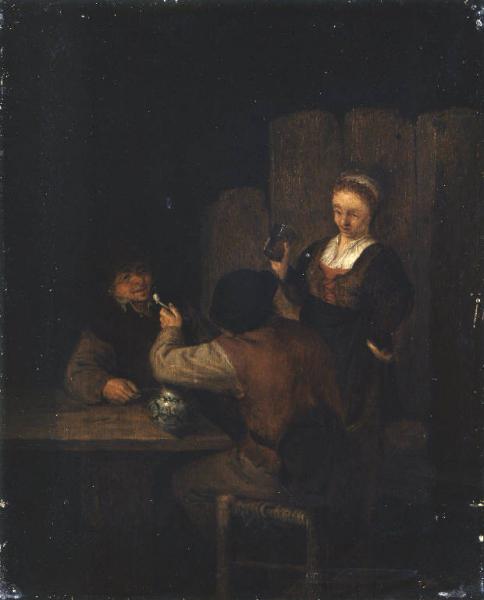
Thinking it farther, even beyond a mere pubchat? –
Interno di taverna con figure by an unknown artist in the Dutch manner,
from Morelli’s own collection (picture: lombardiabeniculturali.it)
A) In terms of an actual implementing of scientific standards that Morelli only fragmentarily did implement himself we would first have to think about an actual and systematic establishing of a culture of verifiability and falsifiability in connoisseurship, that is here: primarily in applied style criticism.
An absolute minimum would be to expect that every act of attribution would go along with a protocol of that act, even if the protocol would only inform that an attribution does rest on mere intuition and that this intuition could not further be explained by the responsible connoisseur (due to a not being able to explain it in words, or due to any other problem); but such protocol could also explain the act (if the connoisseur does feel able to explain his intuition in words), and contain further demonstrations (see below); ideally such protocol would aim at making every comparison and every decision that in the end was crucial and contributed to the taking of a decision (the attribution) in any imaginable way transparent, by using visual and textual tools.
As to arguments of quality one would expect the connoisseur to lay open and to define what exactly, in a present case, he or she does understand by ›quality‹, since this would be a way to guarantee, at least theoretically, intersubjectivity and mutual understanding, and no argument of quality would have to be dismissed, merely based on the reason that judgments of quality are to be considered as being subjective in nature (as long as intersubjectivity does remain a common goal and obligation). The crucial point would be to make known every observation of every participant of a rational debate or every member of a scientific community, here not to the aim of verifying or falsifying the argument, but to the aim of a better mutual understanding (compare as to the issue of intersubjectivity John H. Brown 2008). Judgments of quality may contain factual observations that might be important also or even to someone who does not share the same values as the person being responsible for the judgment, and as long one does stay informed about each other’s values and observations, rational discourse, in mutual respect of each other’s values, may go on.
B) The Morellian approach does imply that an expert of whatever kind might be able to establish visibility, since, in terms of expert language, only an expert (as Morelli, in some sense, was as to anatomy) is able to see/name/identify things, that, in his area, habe been named, identified and defined. Applied style cricitism could draw much more than it is commonly the case on expert languages, taxonomies, classifications, to establish visibility, and to find, respectively to identify and to more systematically work with formal visual properties (for example as to geology, biology, architecture, fashion design/historical costume or also as to the general staging of things in pictures, drawing from the expert languages being common in stage professions or cinematic professions).
The ear might have its expert terminology as well, but for no reason one does tend to limit the Morellian approach to several areas of human anatomy (while Morelli especially was also keenly interested in types of landscapes and, speaking more generally, in the shapes of natural things).
The problem of language that might also be causing a connoisseur to remain silent more often than necessary, that is: to not explain, to reflect and to control his intuitions, could be addressed by establishing a more vivid culture of description that would draw from all kinds of expert languages.
C) It would also be possible, next to a more systematic theorizing of applied style criticism that focusses on merely formal artistic languages, to theorize the actually completely underdeveloped other area of connoisseurship, namely the working with historically-interpretive clues, and to unite both sides of connoisseurship in one general theory, implying that the working with formal clues might, depending on the given situation, be as reasonable as the working with historically-interpretive clues. As to the area of old master paintings one might say, for example, that also the expert language of theologians is capable to establish visibility, and therefore properties to work with, next to mere visibility without actually carrying significant meaning beyond its being an expression of an artist’s individuality. But it does not make sense to privilege, as it is common, the mere formal argument, aiming at more formal matches (of formal languages), to the disadvantage of the more intellectual argument, for example saying that a picture cannot be by Fra Angelico, since it would make no sense on a theological level. Theology, if it is inherent to a picture can only be inherent to a picture, if it is also visually present or at least implied. But to identify such properties to work with, again, historical or theological expert knowledge is needed, as is the mere eye to spot formal analogies in style.
D) Since various technical means have established the making visible of also the built up of a picture, all that has been said as to working with properties on the surface of a picture, could also more systematically reflected and applied as to underdrawing and also the general built up of a picture. Also the working with more, as Morelli would have said, ›materialistic‹ properties, could draw more systematically on the experiences accumulated in working with stylistic properties on a level of representation (the problem of what is understood, for example, as being ›distinctive‹ or ›characteristic‹, is of absolutely fundamental importance on all levels).
E) Contemporary technology does allow to think, last but not least, about which routines in attributional studies could, today or in the near future, handed over to the technology (cooperating still with human beings). One might think here of computers being able to model two- or even threedimensional types of whatever visual structure (but also of ears), of being able to compare structures, to match simililarities, or to calculate degrees of similarity (and to inform, with the precision of a machine, about actual fuzziness).
Such aids might presently be only theoretical ideas in connoisseurship, but at least as to routines of visual management (the handling, for example, or larger series of examples) contemporary technology has already become an indispensible tool, and it might be advisable to also reflect more systematically on good practices in visual management, if it would be wanted to attain what Morelli only did envision and imply – a culture of verifiability and falsifiability, in a word, scientific standards, also as to formal practices, also and primarily as to able protocols (compare again under A), in connoisseurship, drawing on methods of visual management that can only, or at least better be provided with the help of a machine.
Go to Part A; go to Part B; go to Part C

Questions and Answers
Thematic Features – an Index:
(direct links; a few seconds loading time is due to the necessary loading of the whole section with the respective feature)
FEATURE | Giovanni Morelli and Art Connoisseurship – Interim Report I (1833-1840)
FEATURE | Giovanni Morelli and Art Connoisseurship – Interim Report II (1840-1856)
FEATURE | Giovanni Morelli and Art Connoisseurship – Interim Report III (1857-1873)
FEATURE | Giovanni Morelli and the German Literary Scene of the Pre-March Era
FEATURE | Giovanni Morelli Experiencing Nature
FEATURE | Visiting Johann Wolfgang von Goethe and Alessandro Manzoni
FEATURE | Giovanni Morelli in 1848/49
FEATURE | Giovanni Morelli and Jacob Burckhardt
FEATURE | Giovanni Morelli and the Cholera
FEATURE | Giovanni Morelli Assisting Other Collectors
FEATURE | Giovanni Morelli and Giovanni Battista Cavalcaselle
FEATURE | Interiors of Connoisseurship
FEATURE | Giovanni Morelli and the Caricature
FEATURE | Giovanni Morelli and Russia
FEATURE | Giovanni Morelli and Raffaello Sanzio
FEATURE | A Virtual Guestroom
FEATURE | Giovanni Morelli and Crown Princess Victoria
FEATURE | Giovanni Morelli and the Connoisseurial Tradition I: Antecendents
FEATURE | Giovanni Morelli and the Connoisseurial Tradition II: Followers and Heirs
FEATURE | Giovanni Morelli and Sherlock Holmes
FEATURE | Giovanni Morelli and Wilhelm Bode
FEATURE | Giovanni Morelli and Vienna
FEATURE | Giovanni Morelli on Time, Progress and the Future of Science
FEATURE (outside The Giovanni Morelli Monograph) | Giovanni Morelli and Leonardo da Vinci
FEATURE (outside The Giovanni Morelli Monograph) | How to Tell Titian from Giorgione
THE GIOVANNI MORELLI MONOGRAPH PART II:
THE GIOVANNI MORELLI STUDY | Cabinet I: Introduction
THE GIOVANNI MORELLI STUDY | Cabinet II: Questions and Answers
THE GIOVANNI MORELLI STUDY | Cabinet III: Expertises by Morelli
THE GIOVANNI MORELLI STUDY | Cabinet IV: Mouse Mutants and Disney Cartoons
THE GIOVANNI MORELLI STUDY | Cabinet V: Digital Lermolieff
Or Go To:
THE GIOVANNI MORELLI MONOGRAPH | HOME
THE GIOVANNI MORELLI MONOGRAPH | Spending a September with Morelli at Lake Como
THE GIOVANNI MORELLI MONOGRAPH | A Biographical Sketch
THE GIOVANNI MORELLI MONOGRAPH | Visual Apprenticeship: The Giovanni Morelli Visual Biography
THE GIOVANNI MORELLI MONOGRAPH | Connoisseurial Practices: The Giovanni Morelli Study
THE GIOVANNI MORELLI MONOGRAPH | The Giovanni Morelli Bibliography Raisonné
THE GIOVANNI MORELLI MONOGRAPH | General Bibliography
Cabinet II: Questions and Answers
Some of Morelli’s followers and friends found that his teaching was not exactly a systematic teaching and they were right. Neither was Morelli inclined to equip every opponent with his skills, nor was he inclined to expose himself more than necessary, and he did expose himself, but more in style of giving examples, and not in being systematic in a rigid sense (in other words: he did not expose himself systematically, as his own intellectual approach, as scientific connoisseurship, actually does demand it).

What we are attempting to do here is to stick to a compromise between rigid system-building and mere unsystematically improvising essay-style. We try to assemble, in a coherent way, questions as to Giovanni Morelli’s connoisseurial practices. And we try to answer them as concise as possible, which, in some cases, means that we have to speak concisely about Morelli not being concise, nor systematic, nor decided.
And this cabinet, the core of the second part of the Giovanni Morelli Monograph, is meant to develop as a platform of its own kind. Assembling not only the most important basic questions, but also materials that, ideally, might inspire further study of style criticism and of connoisseurial practices (and hopefully also some innovations). Which we consider to be worth pursuing, not only because it is about attributional studies, but because it is about visual apprenticeship, visual education, and, in brief, about looking and interpreting as such, its problems, ambiguities, its sensual side, but also its intellectual side, in a word, about a possible opening of perspectives onto more than mere attributional studies, but on the world and on human nature. As human ways, the human nature and the human condition do show, to the best or to less than the best, also within the narrower boundaries of attributional studies.
THE GIOVANNI MORELLI VISUAL BIOGRAPHY:
THE GIOVANNI MORELLI VISUAL BIOGRAPHY | Visual Apprenticeship I
THE GIOVANNI MORELLI VISUAL BIOGRAPHY | Interlude I
THE GIOVANNI MORELLI VISUAL BIOGRAPHY | Visual Apprenticeship II
THE GIOVANNI MORELLI VISUAL BIOGRAPHY | Interlude II
THE GIOVANNI MORELLI VISUAL BIOGRAPHY | Visual Apprenticeship III

THE GIOVANNI MORELLI STUDY:
THE GIOVANNI MORELLI STUDY | Cabinet I: Introduction
THE GIOVANNI MORELLI STUDY | Cabinet II: Questions and Answers
THE GIOVANNI MORELLI STUDY | Cabinet III: Expertises by Morelli
THE GIOVANNI MORELLI STUDY | Cabinet IV: Mouse Mutants and Disney Cartoons
THE GIOVANNI MORELLI STUDY | Cabinet V: Digital Lermolieff
MICROSTORY OF ART
ONLINE JOURNAL FOR ART, CONNOISSEURSHIP AND CULTURAL JOURNALISM
HOME
© DS
